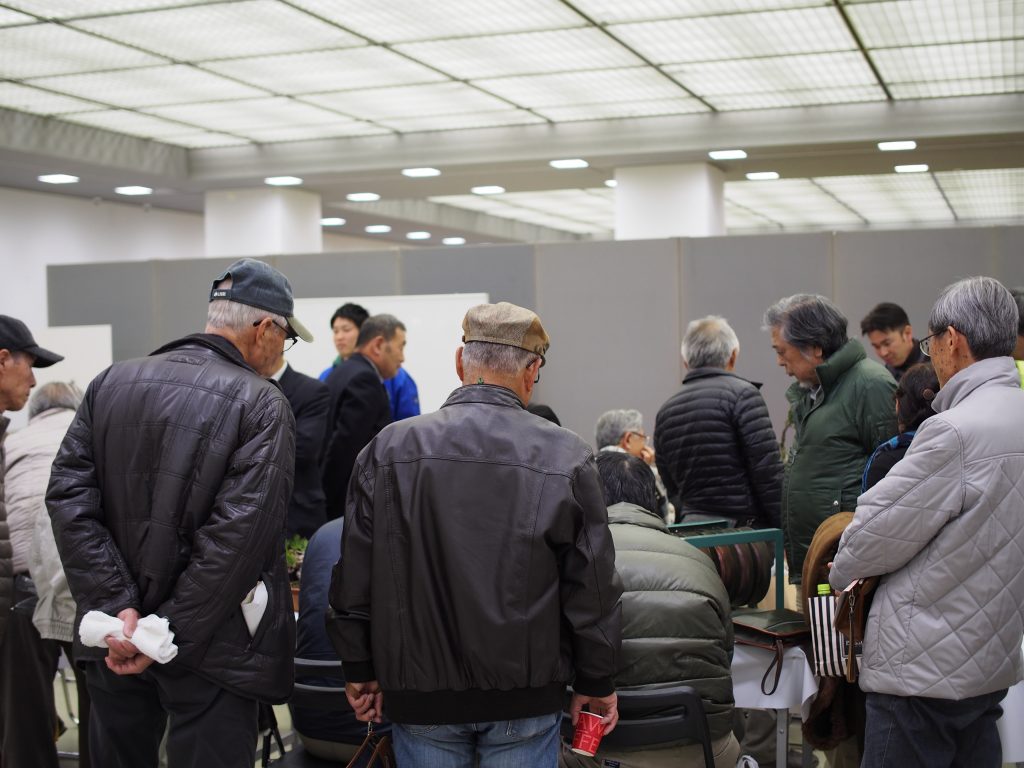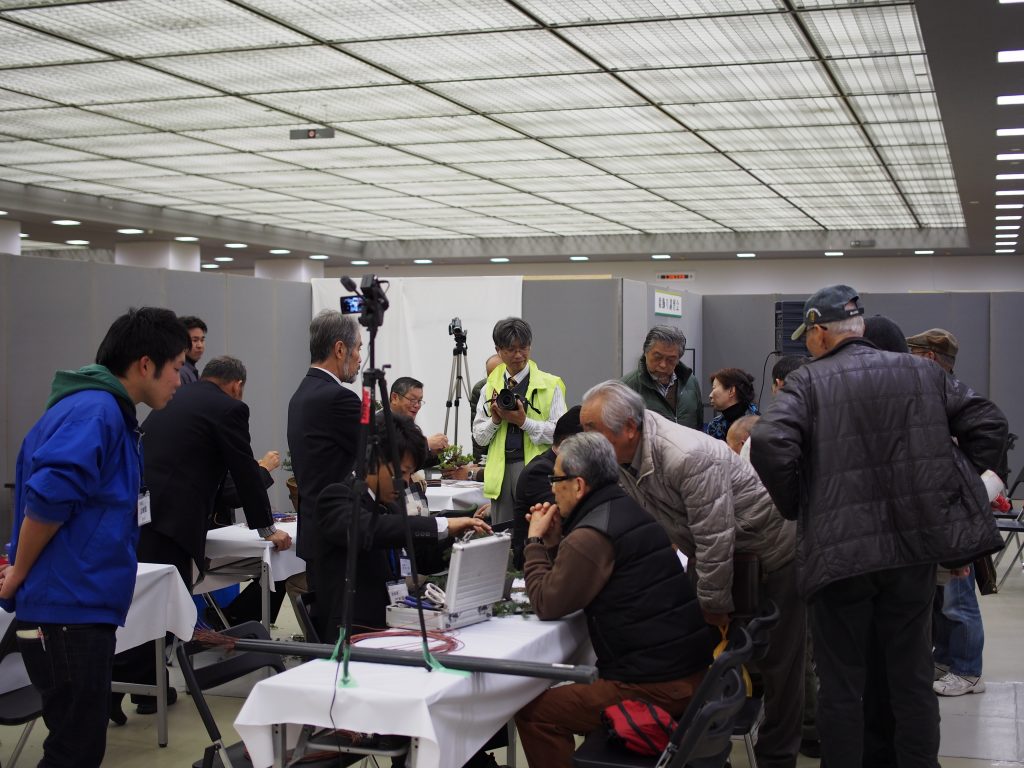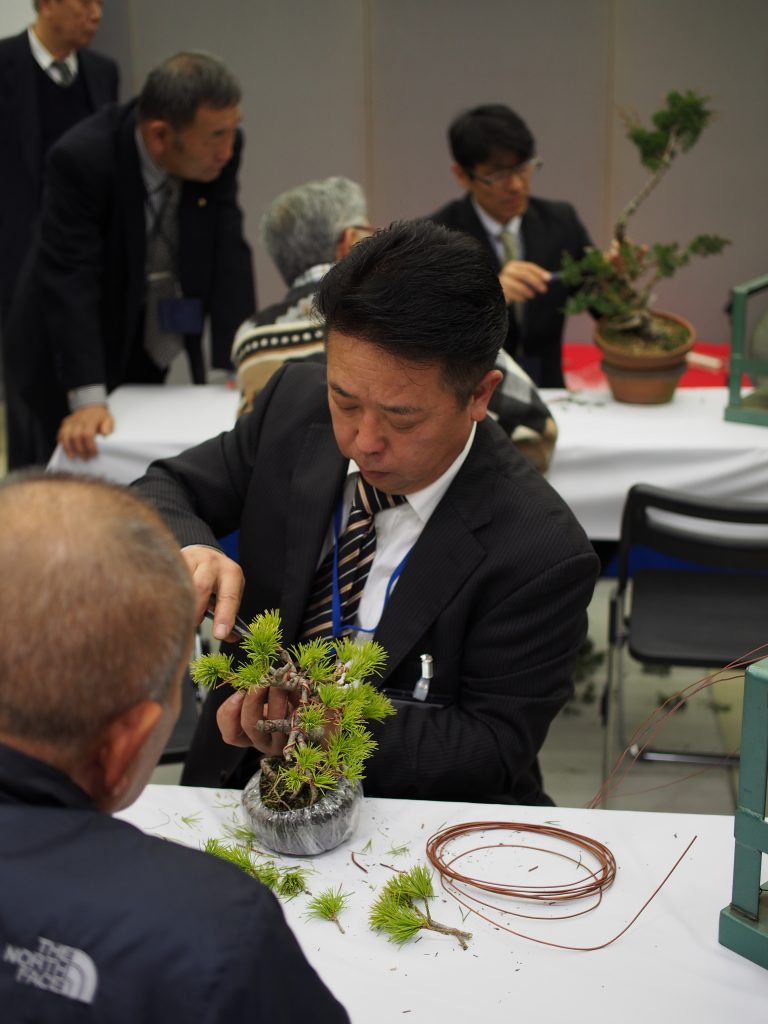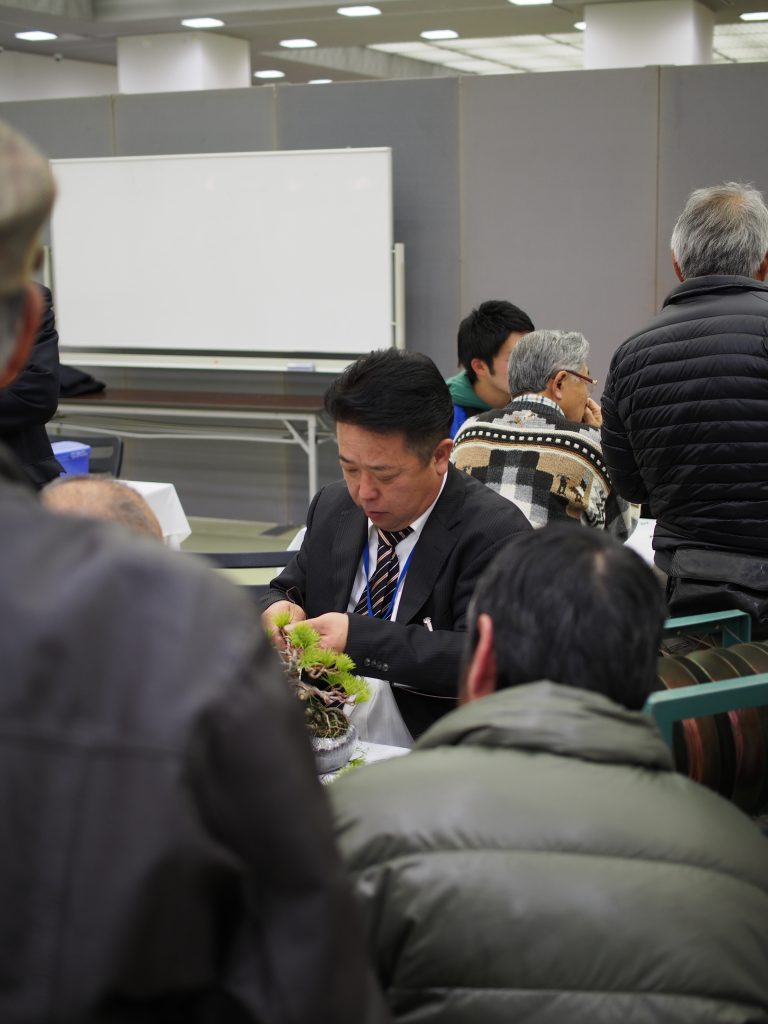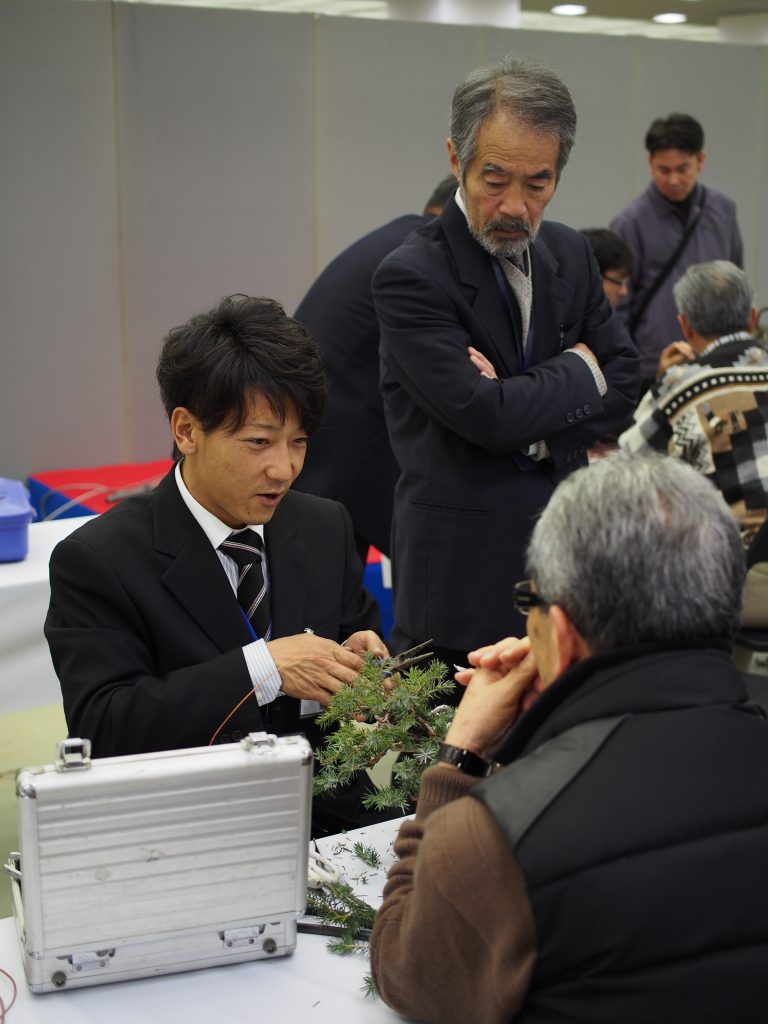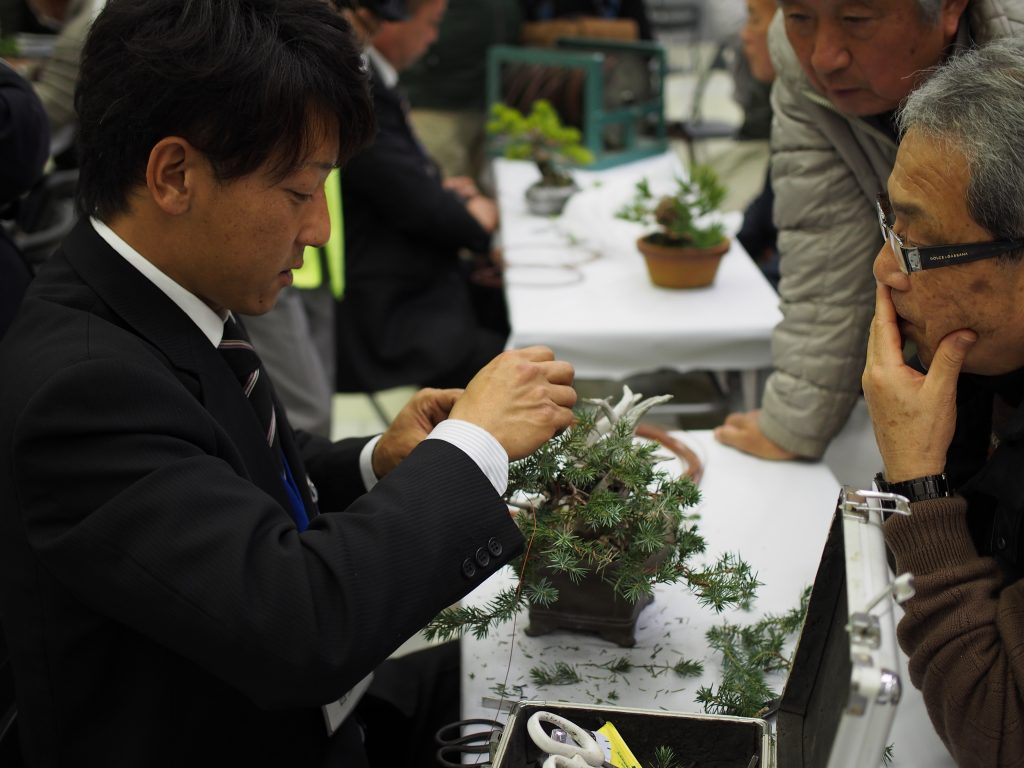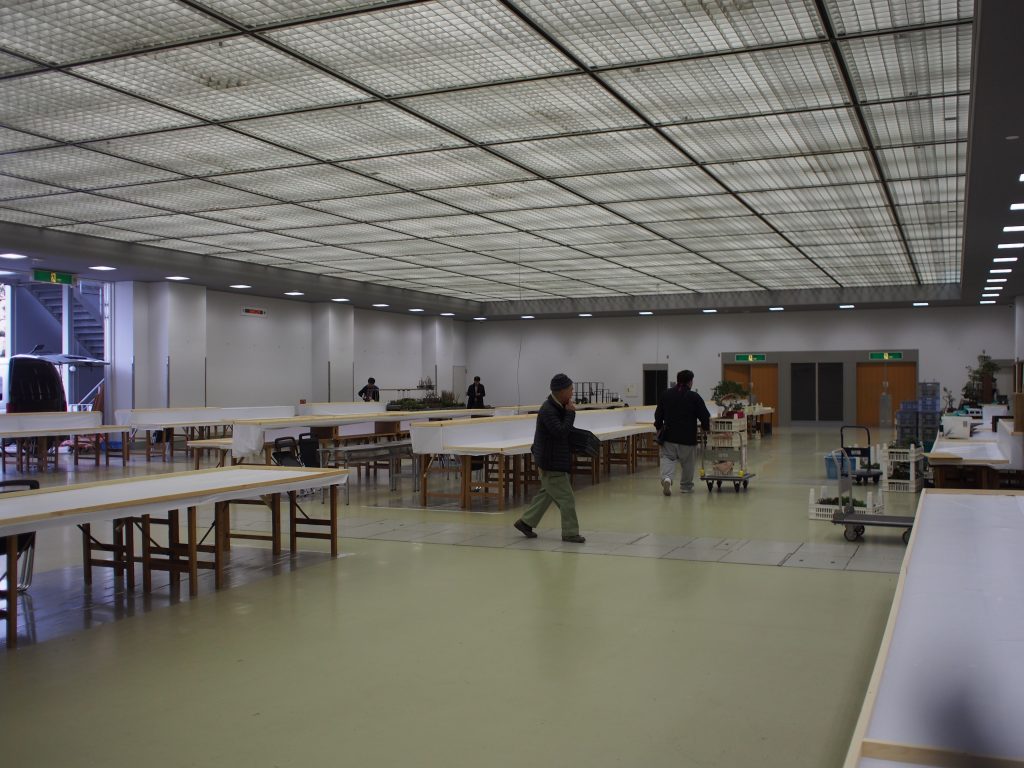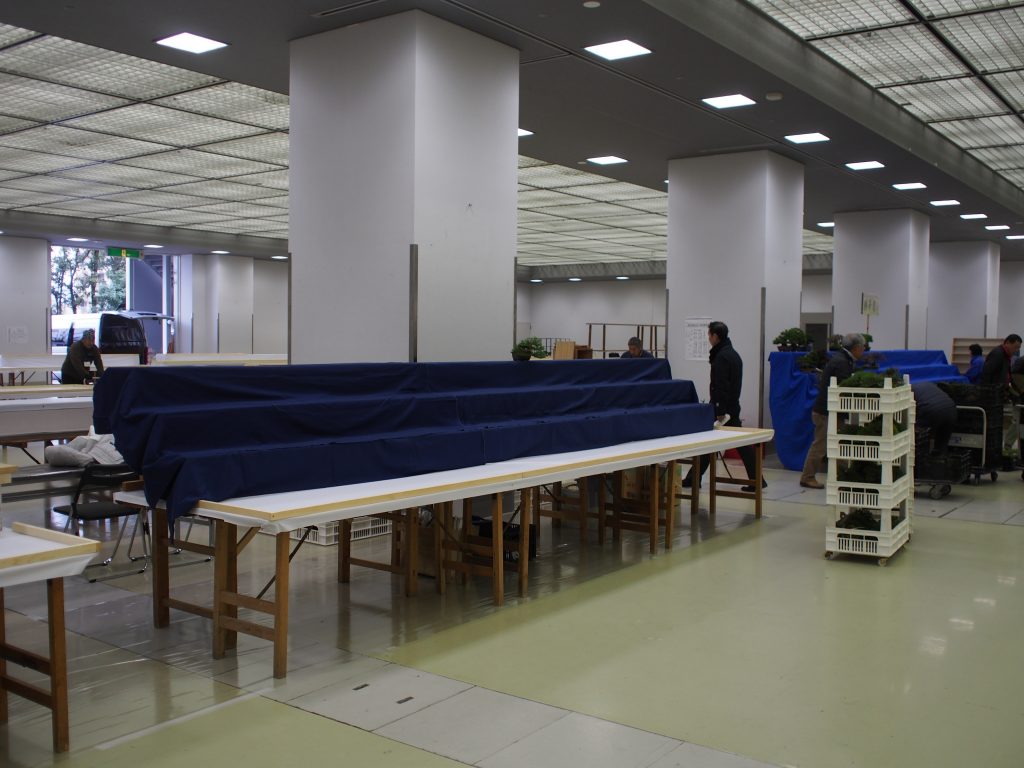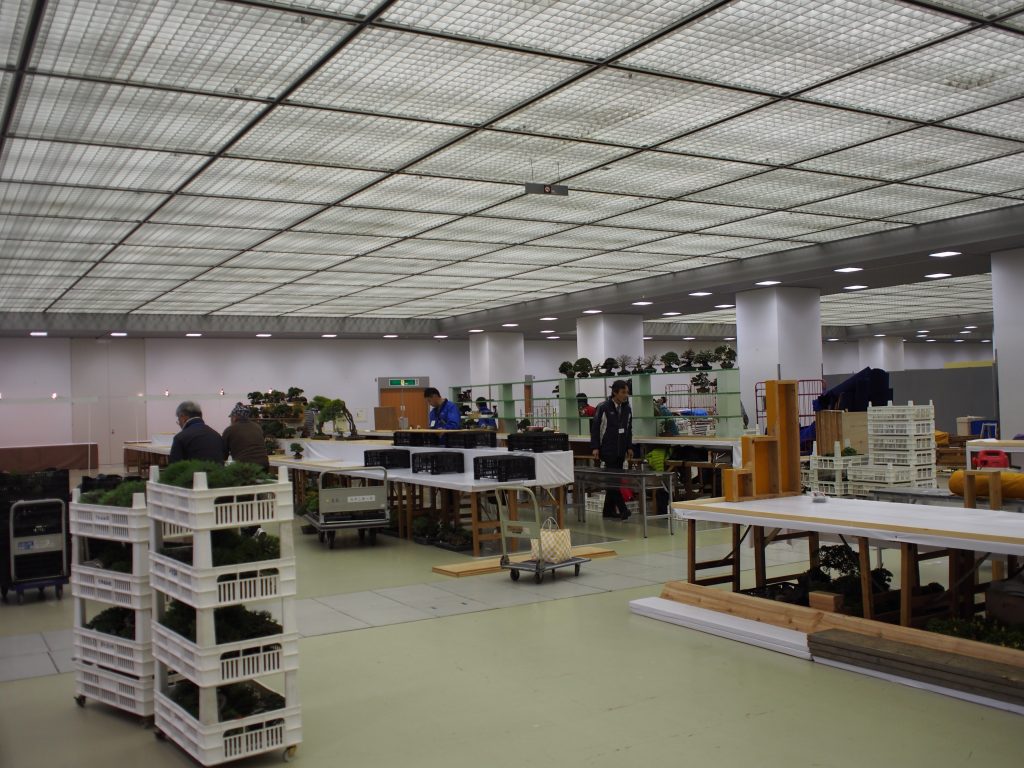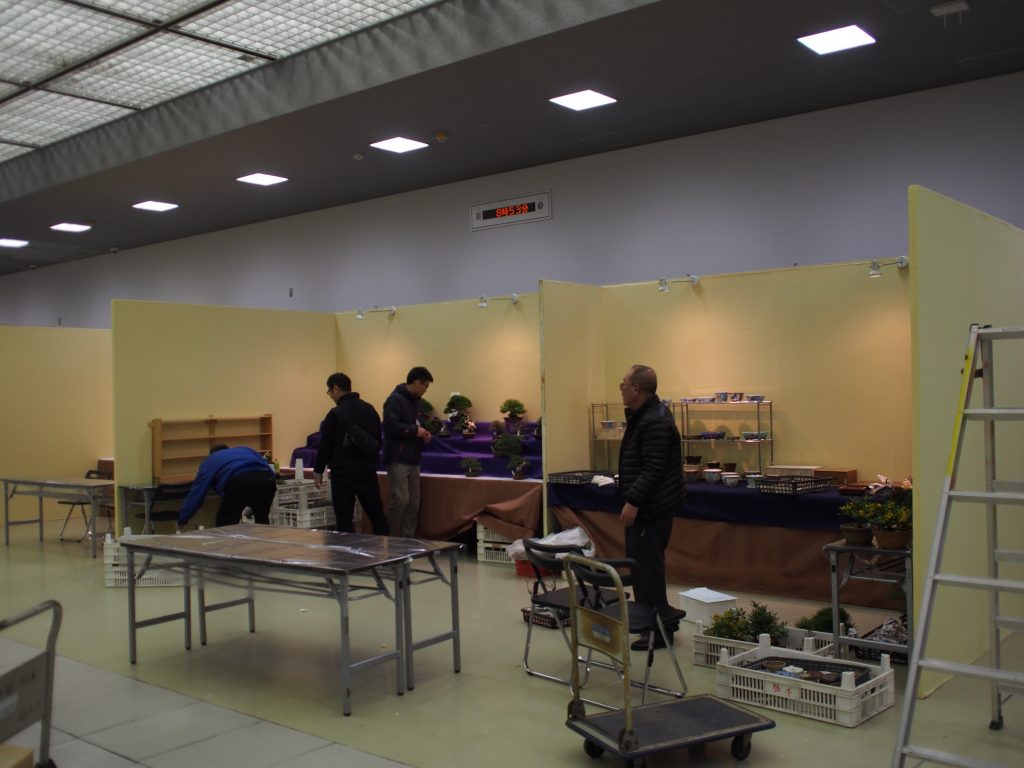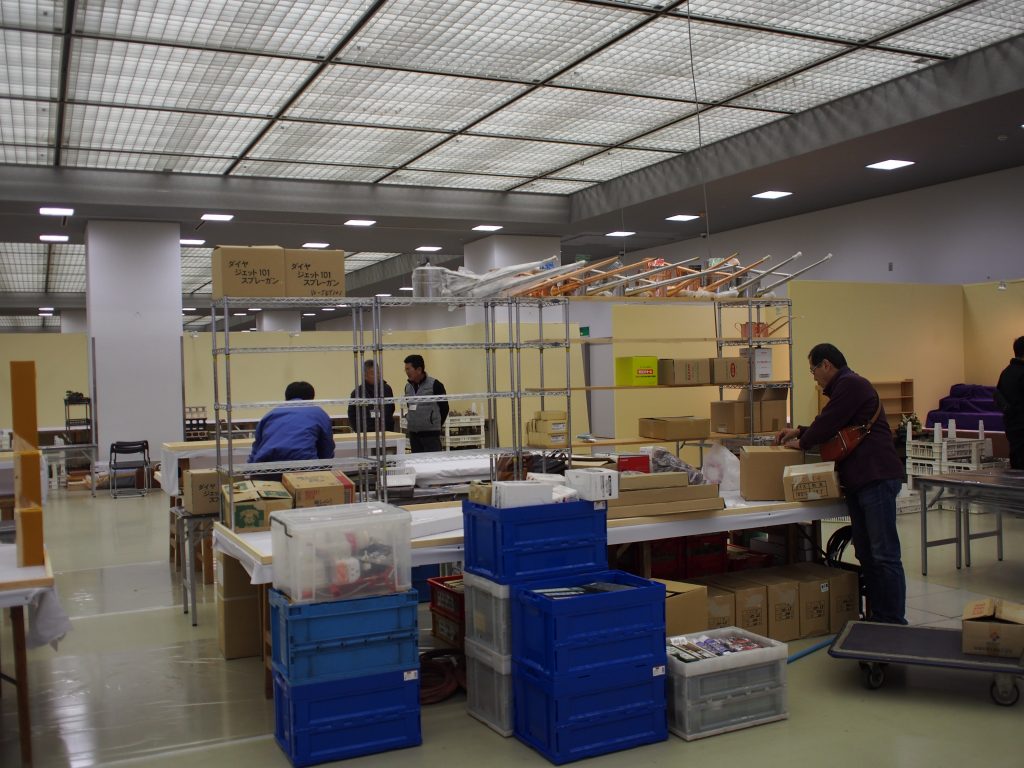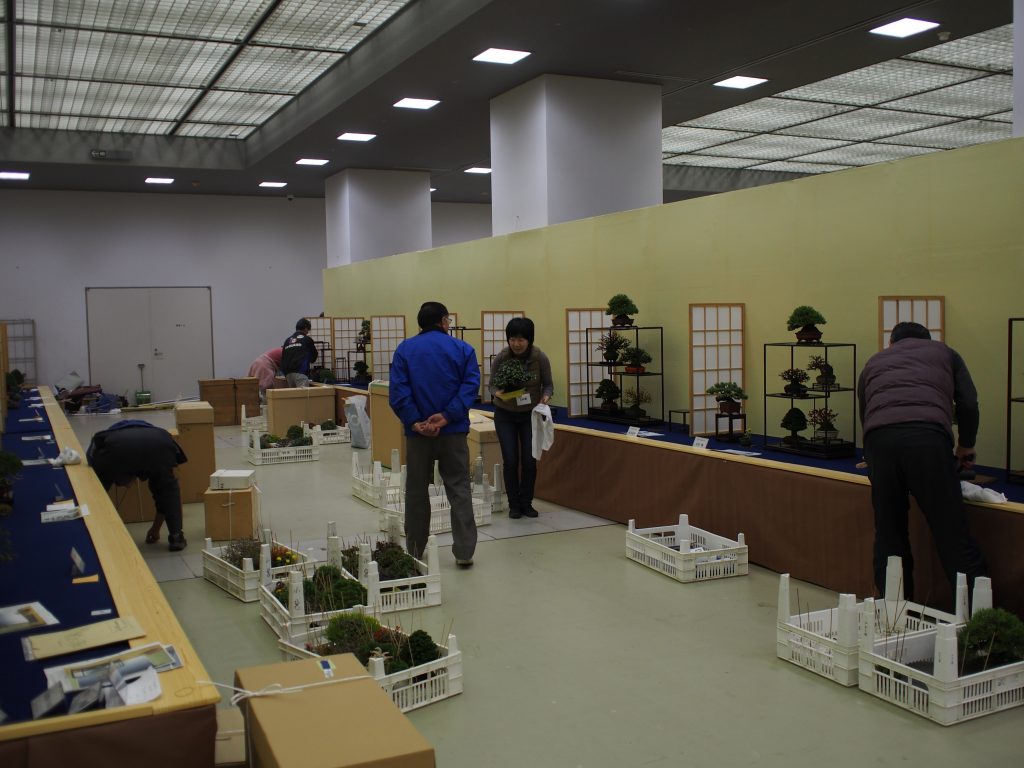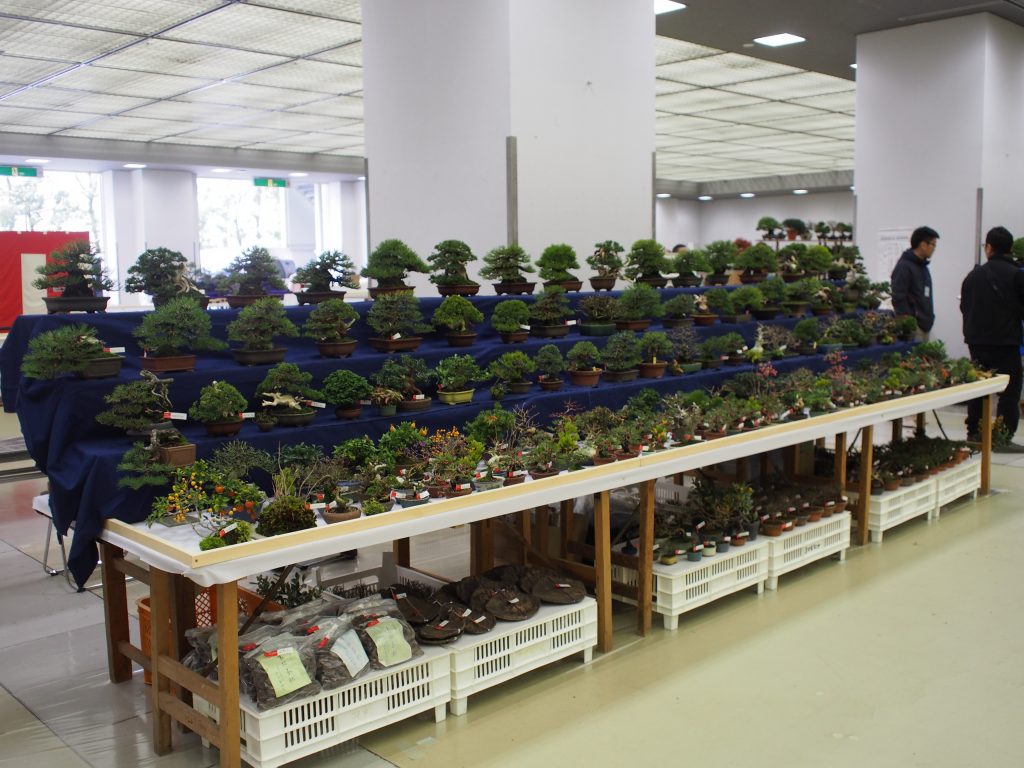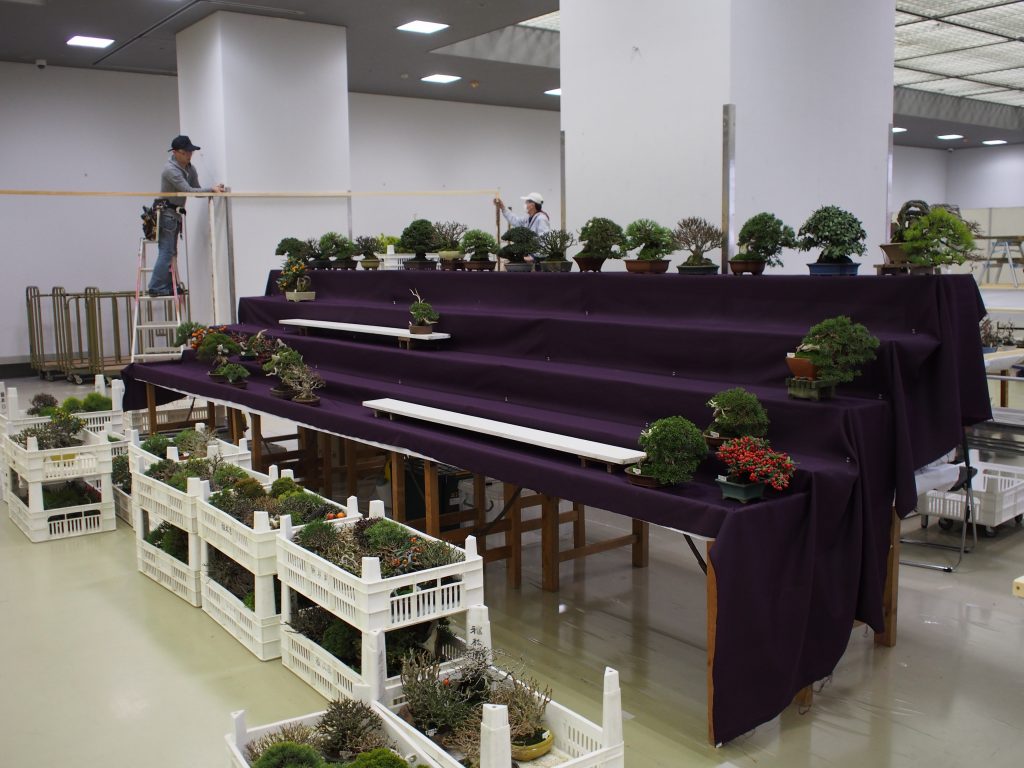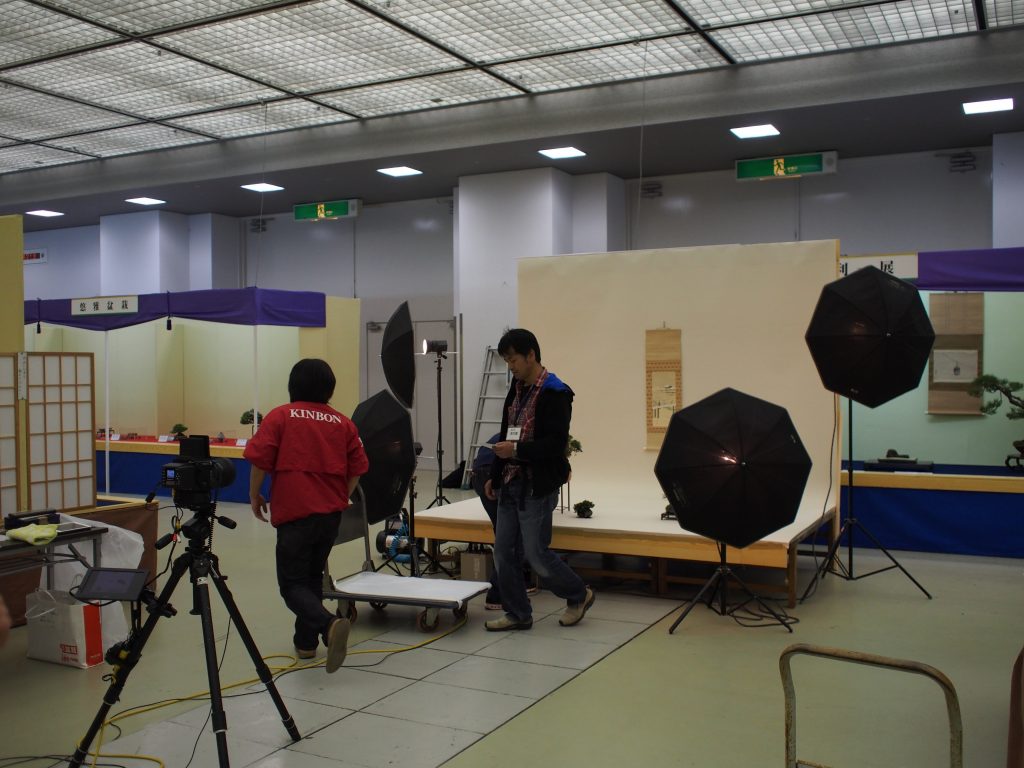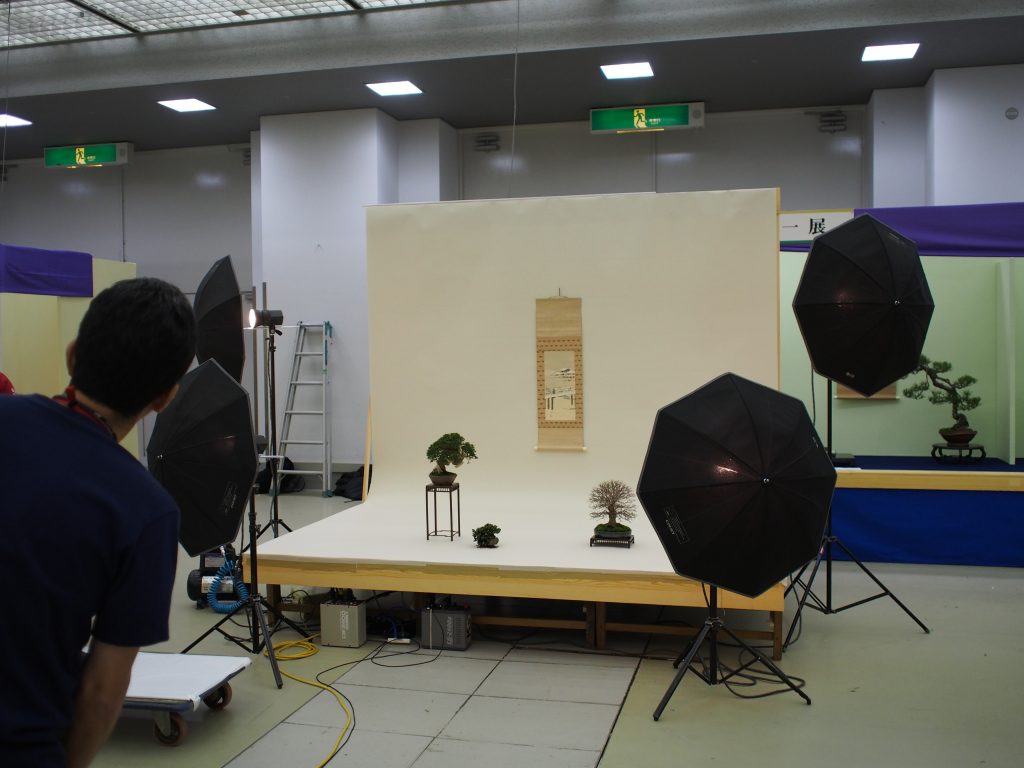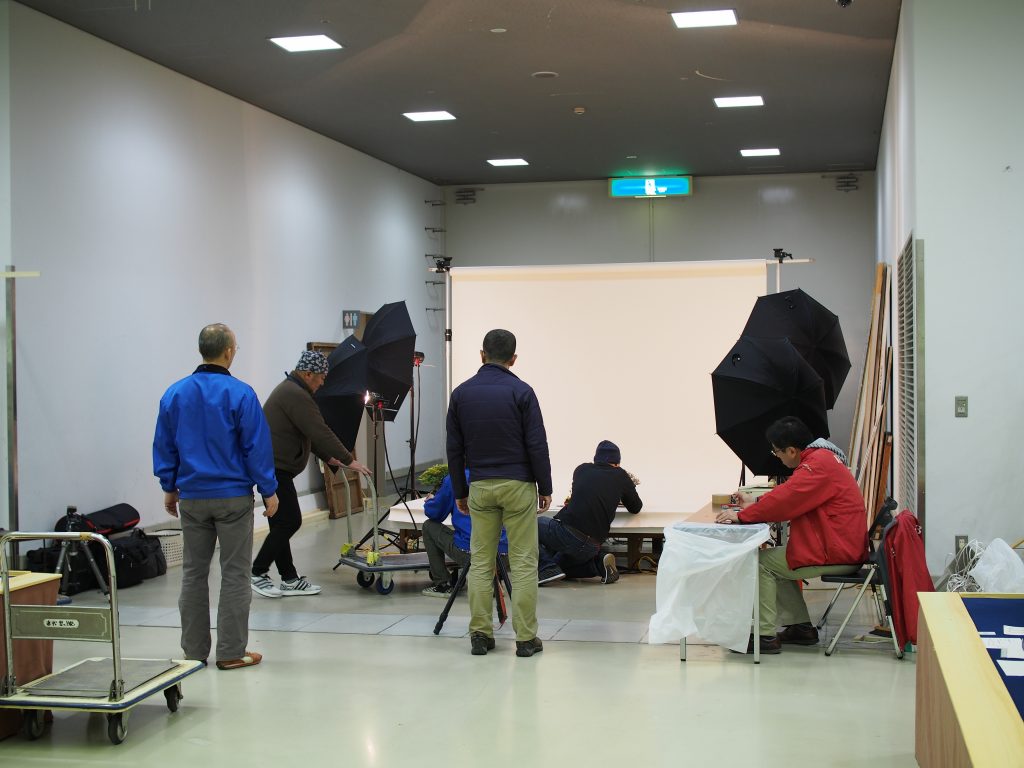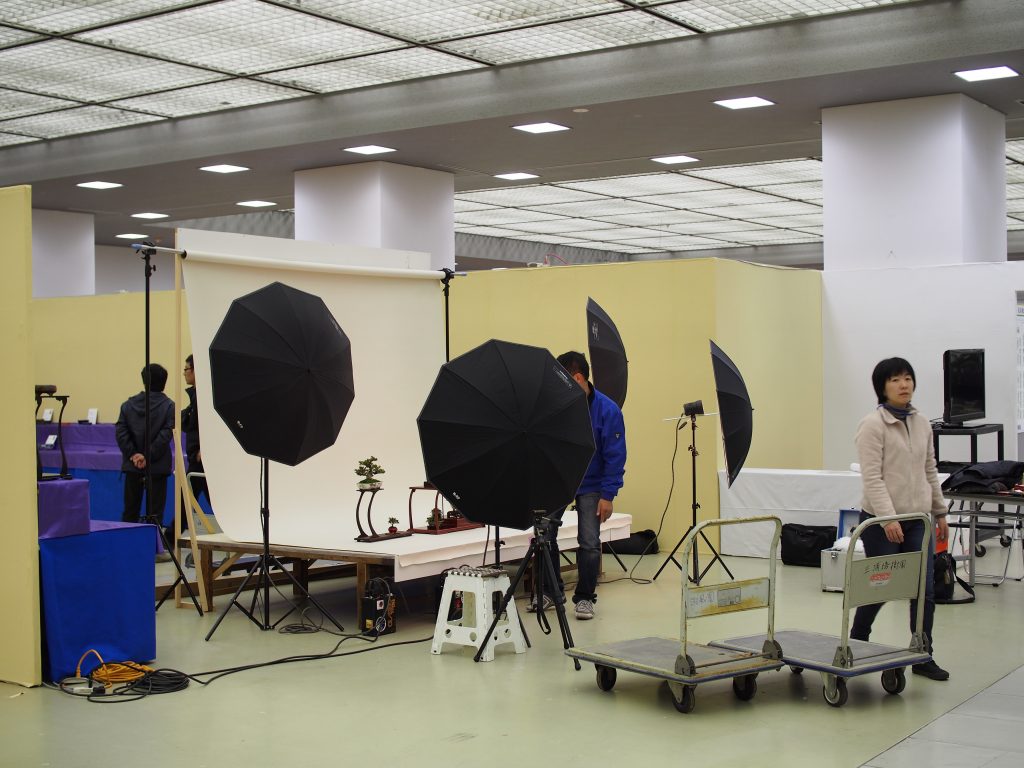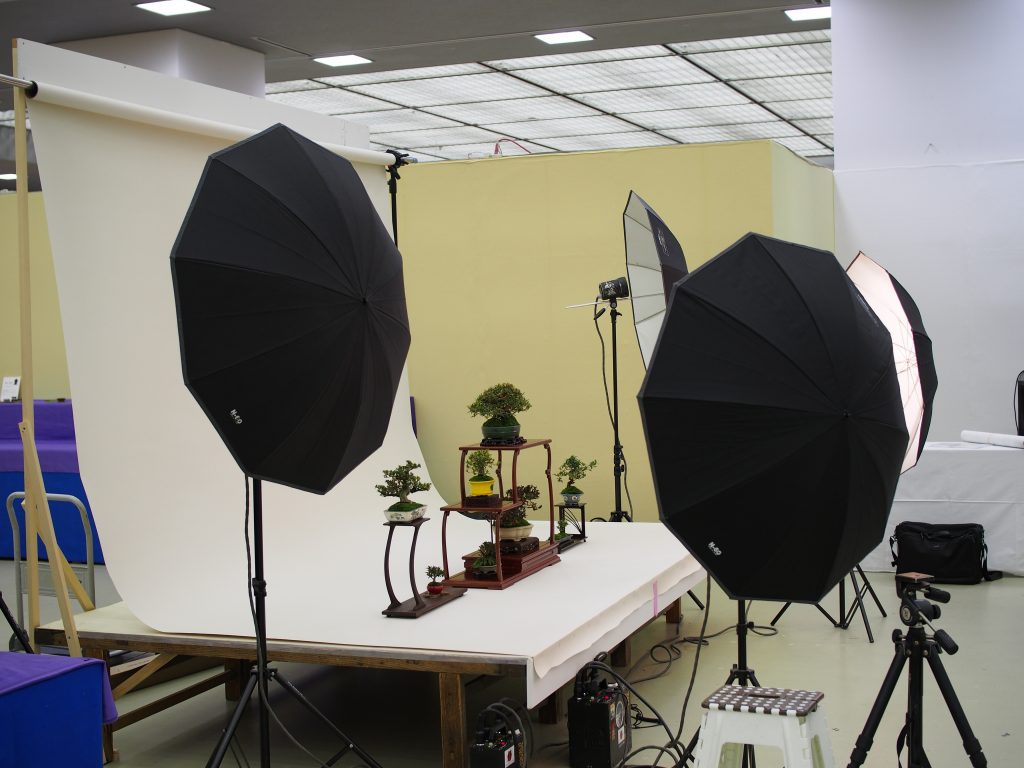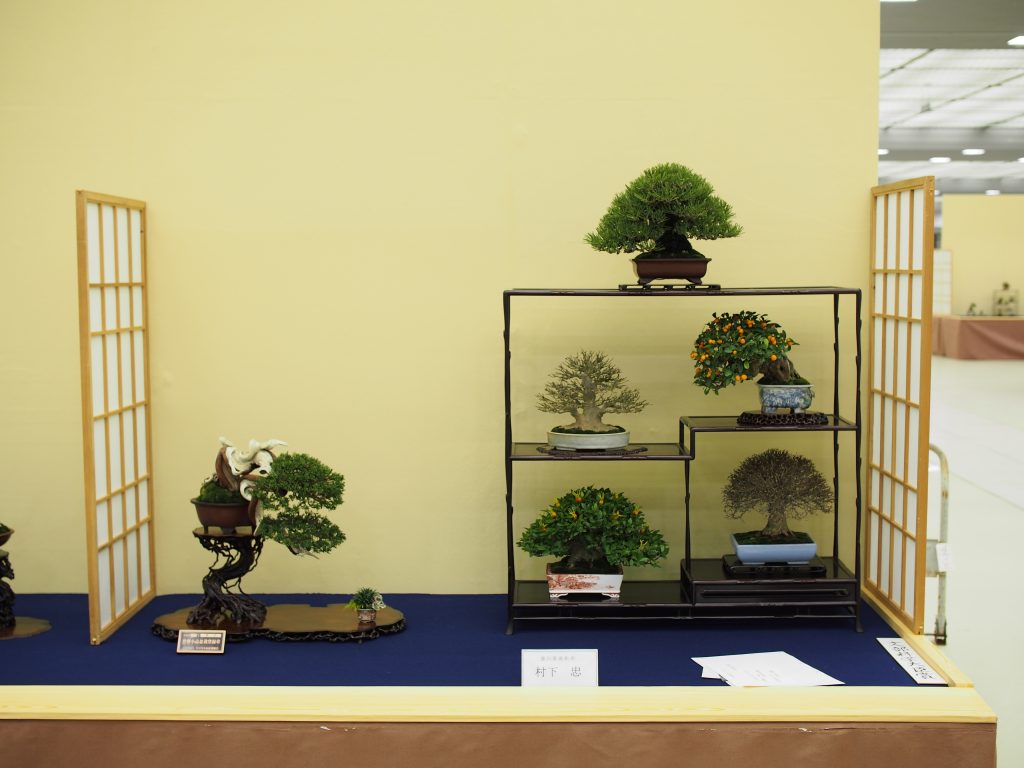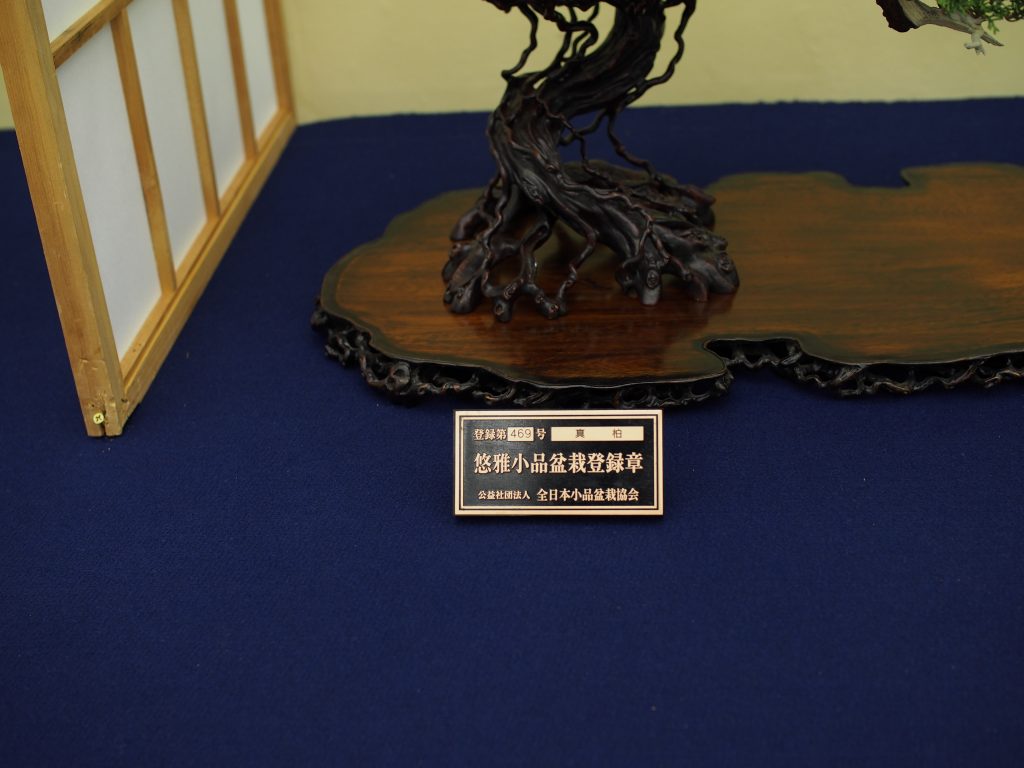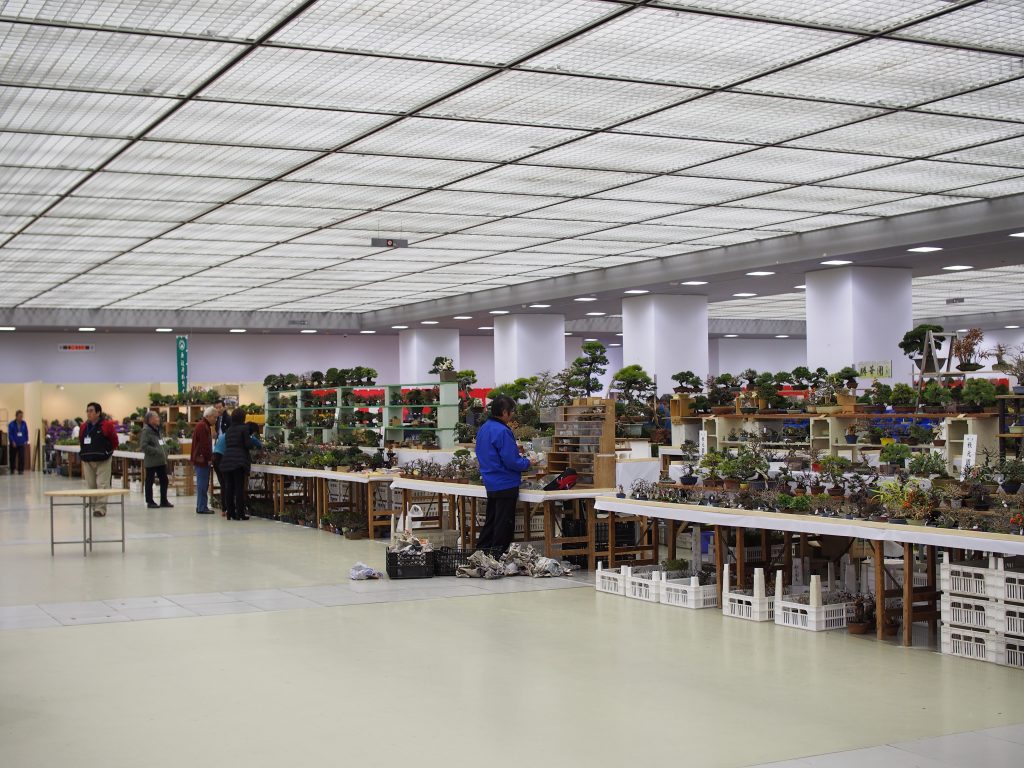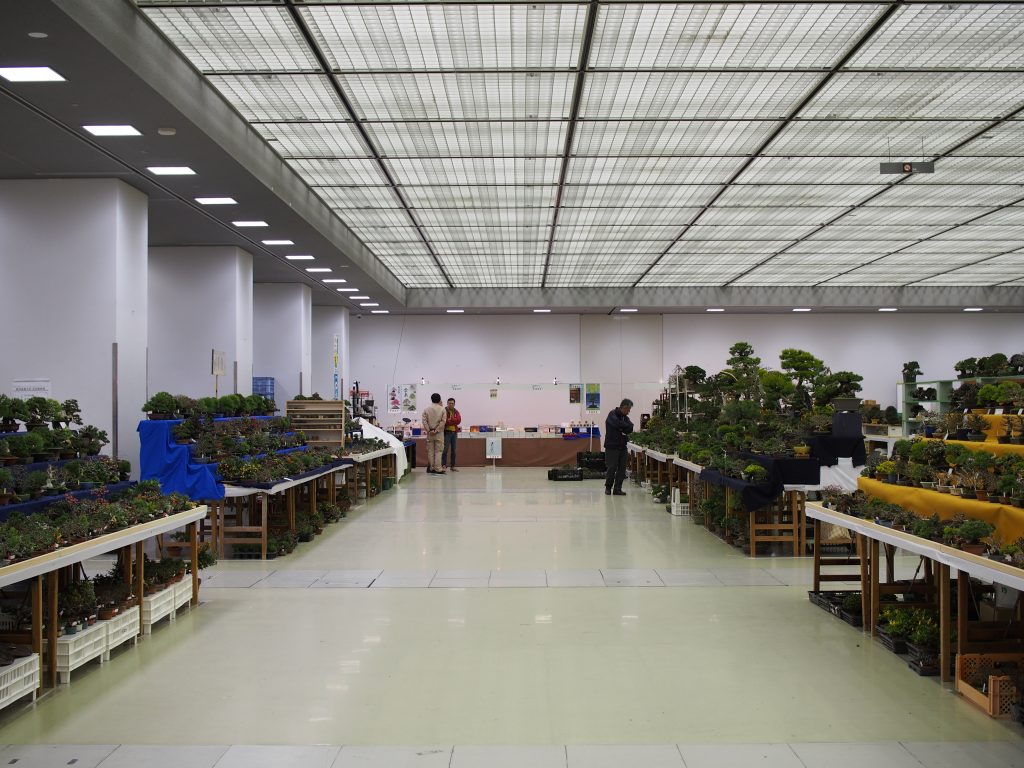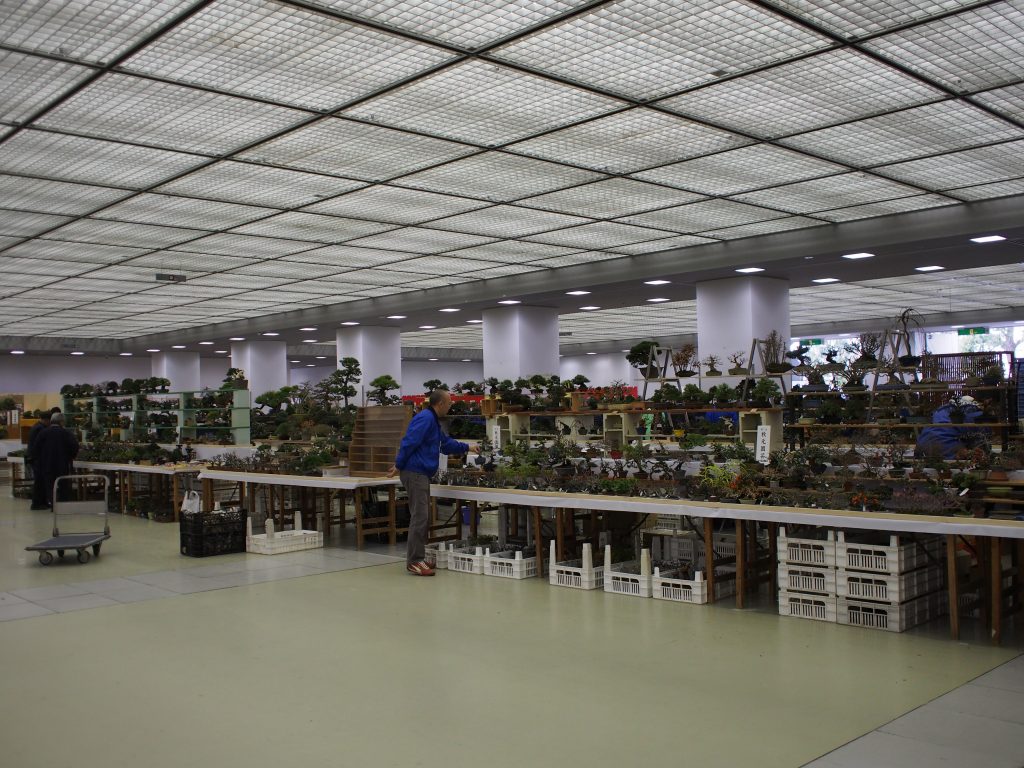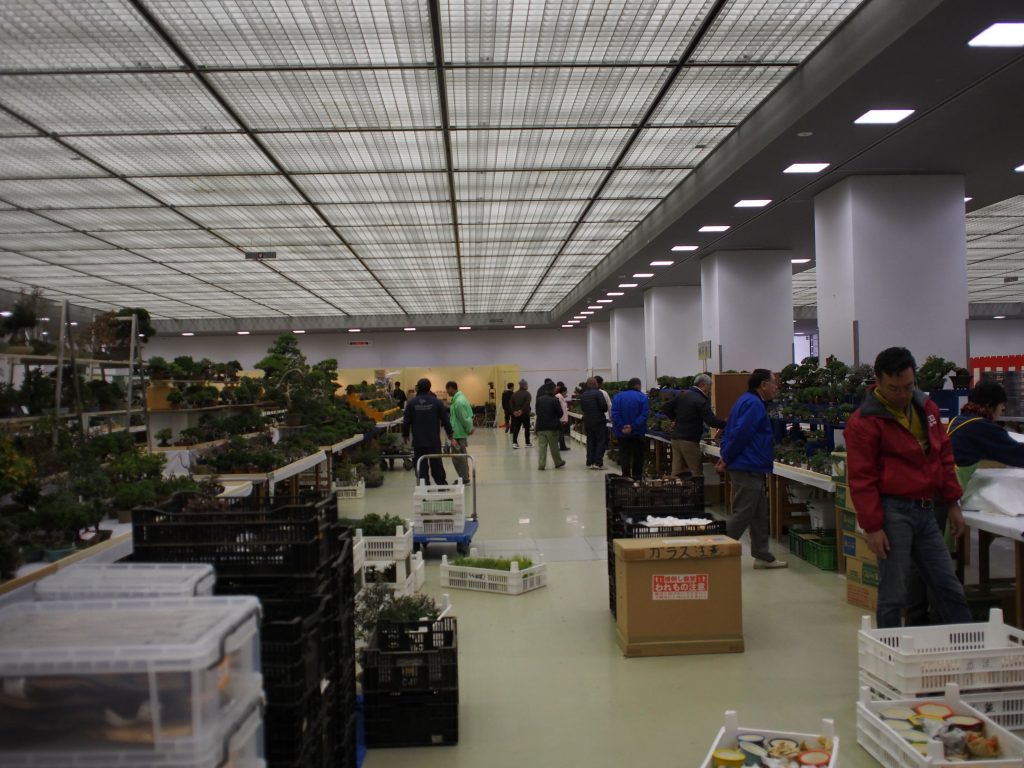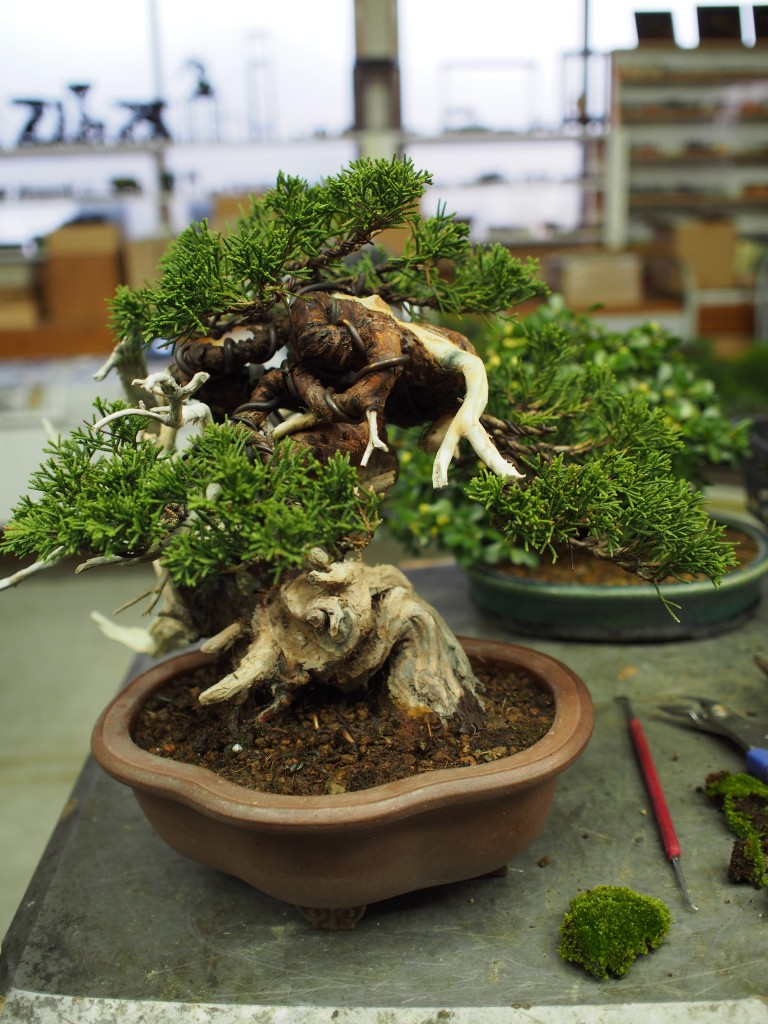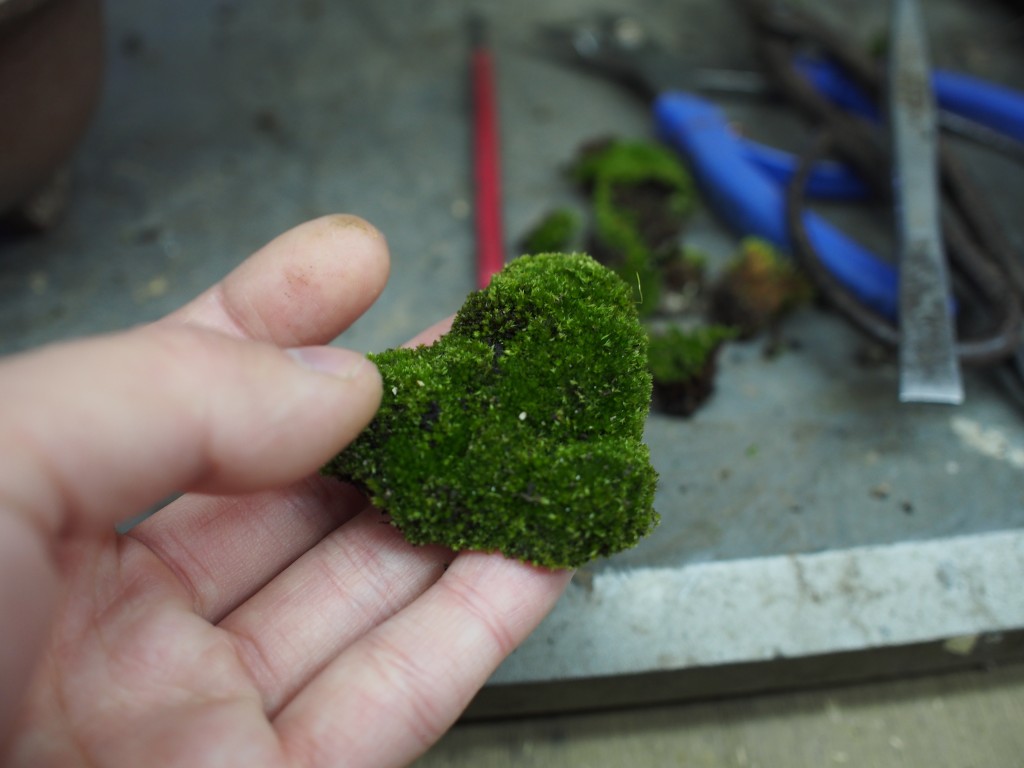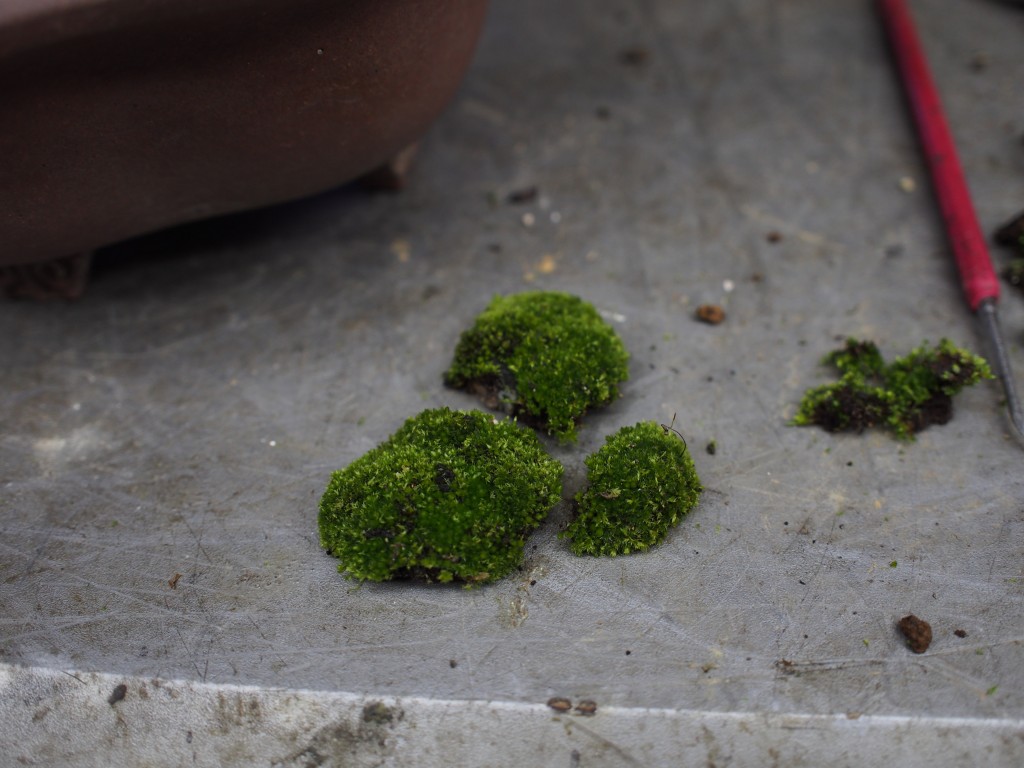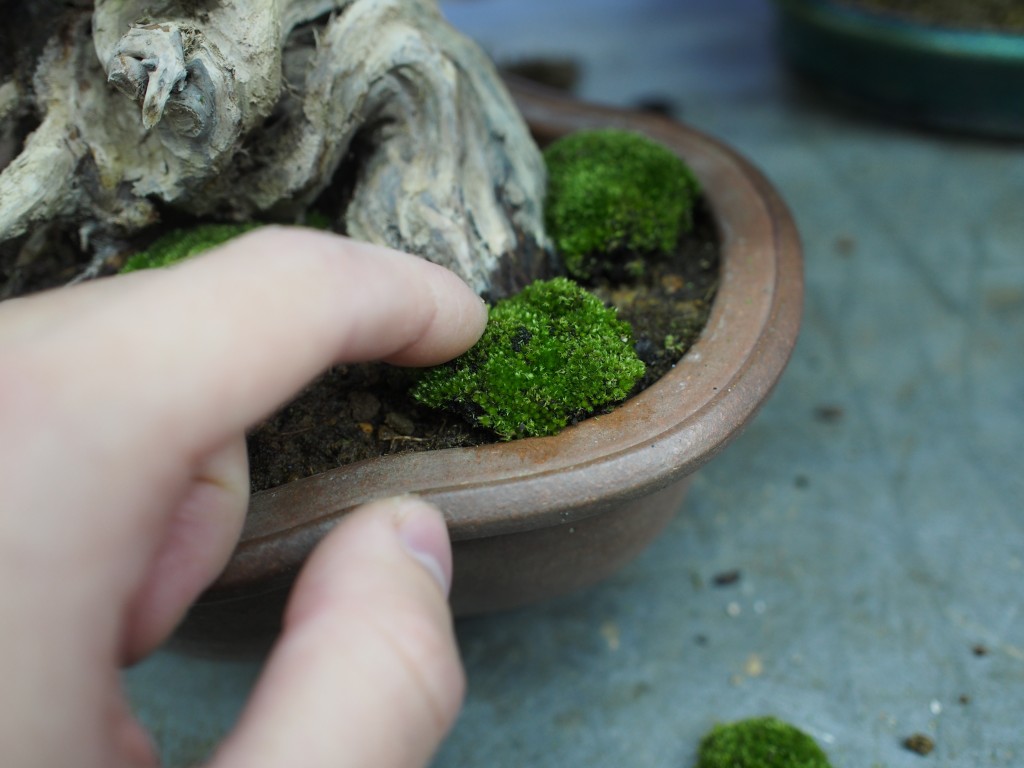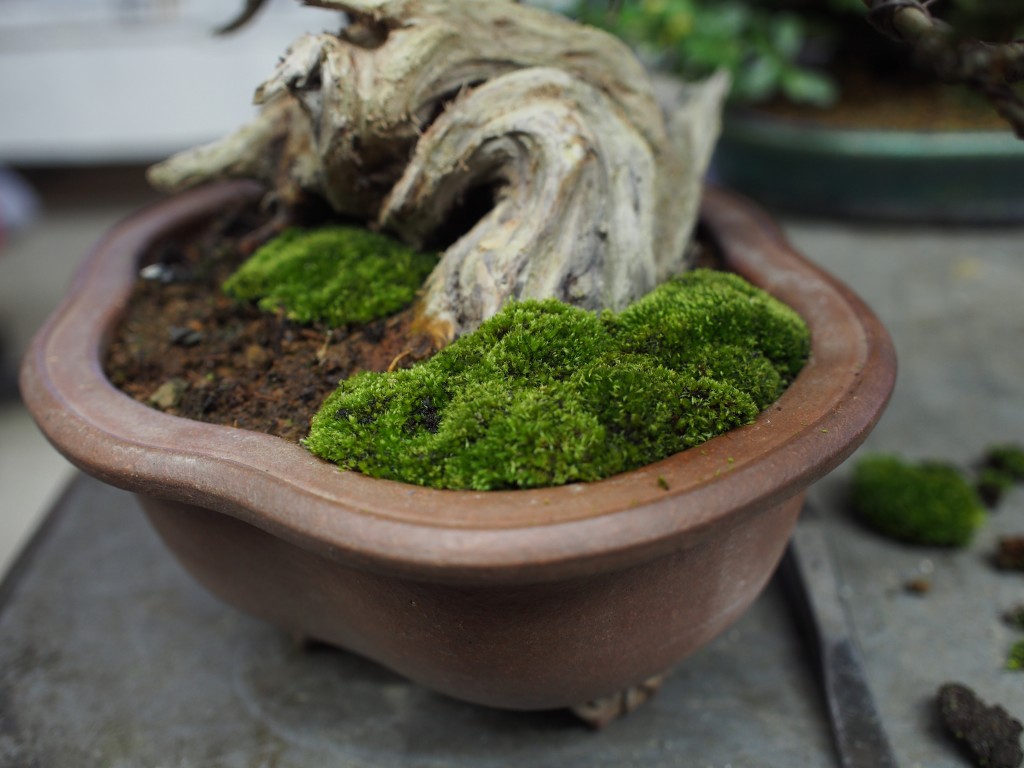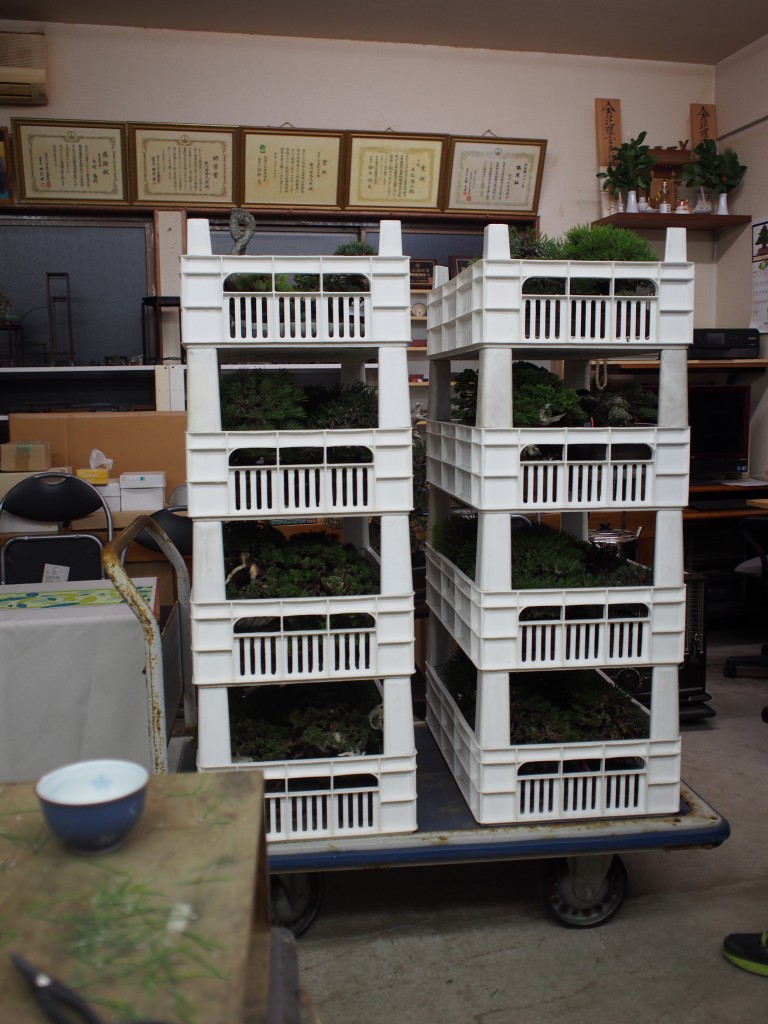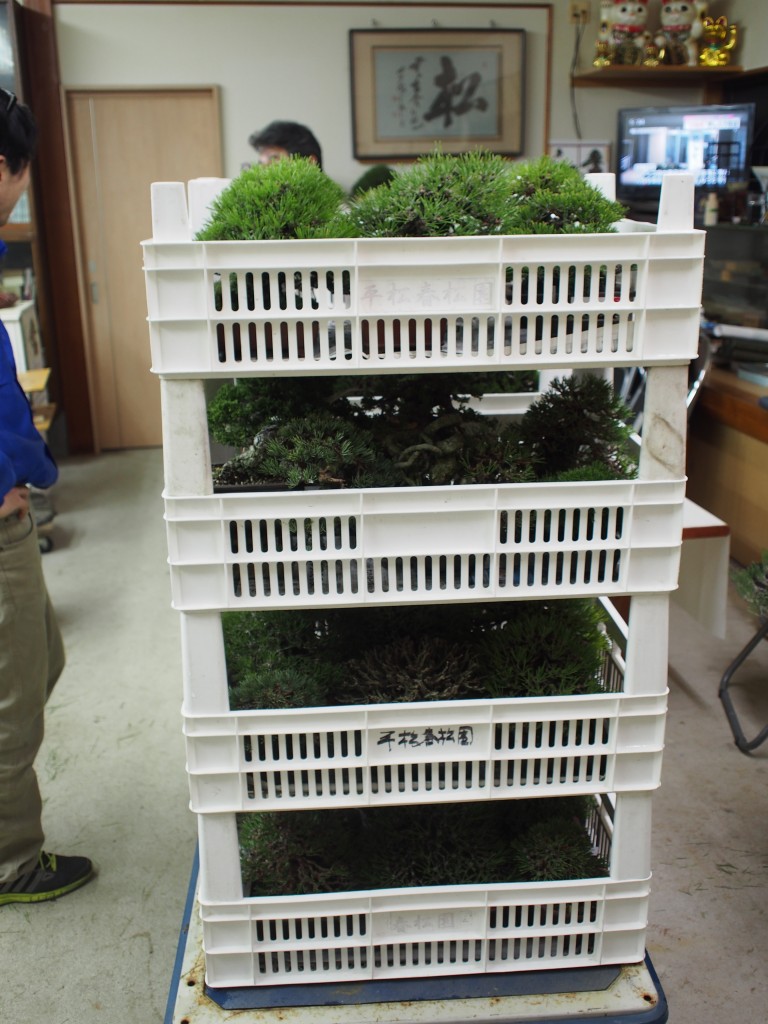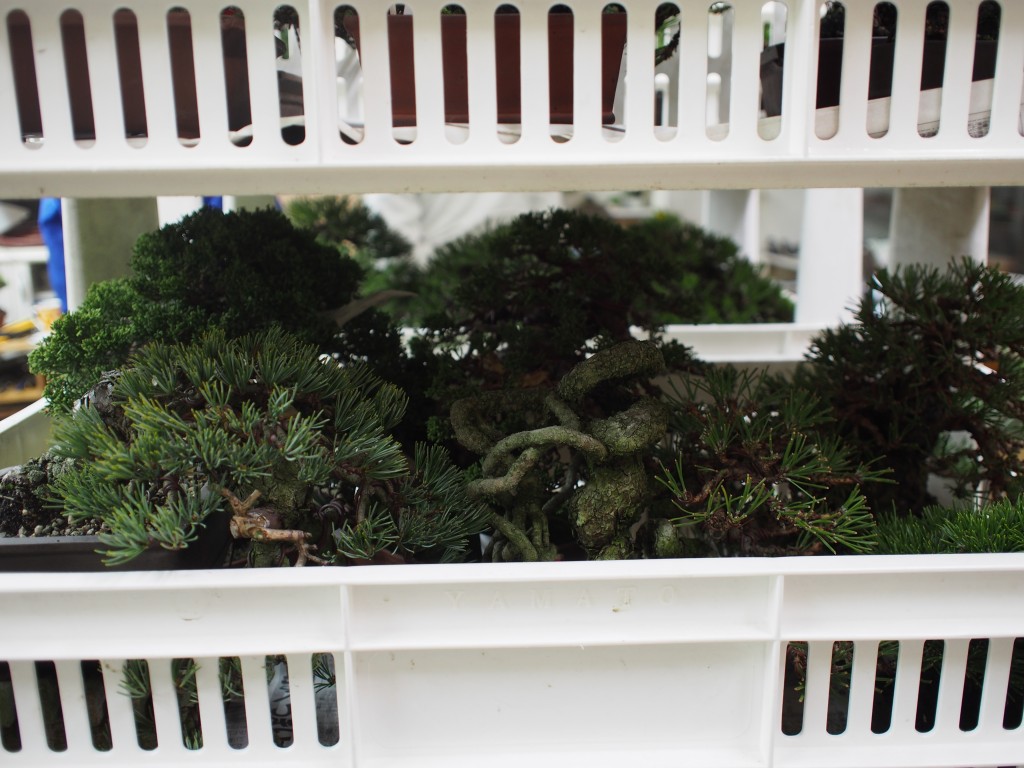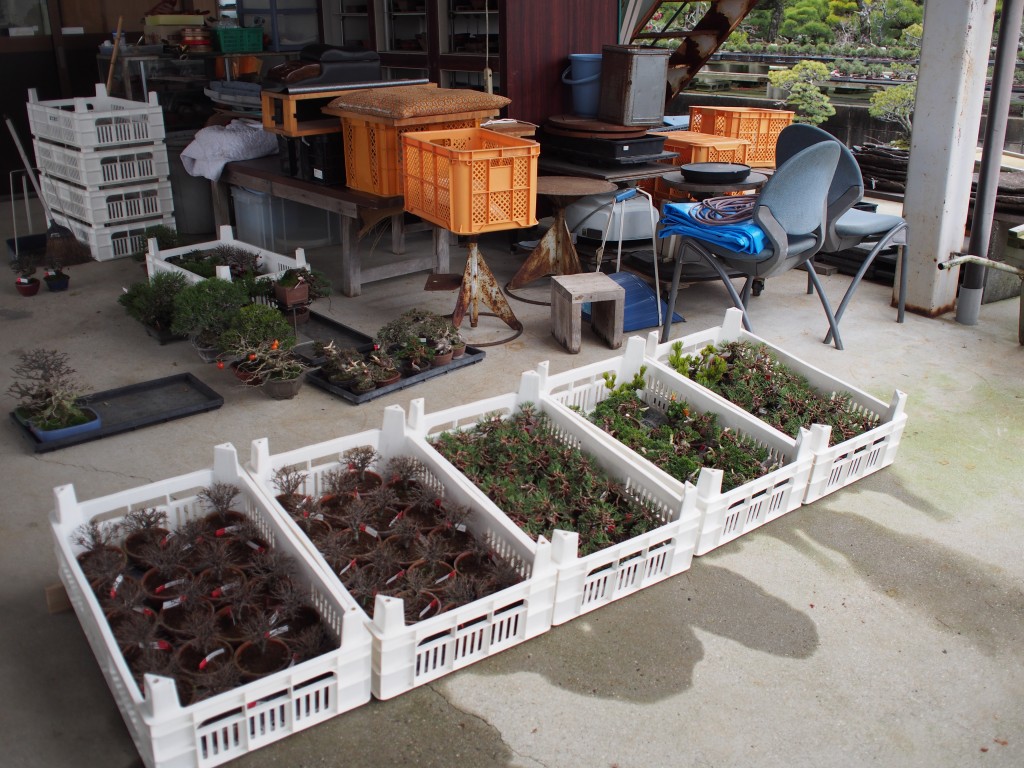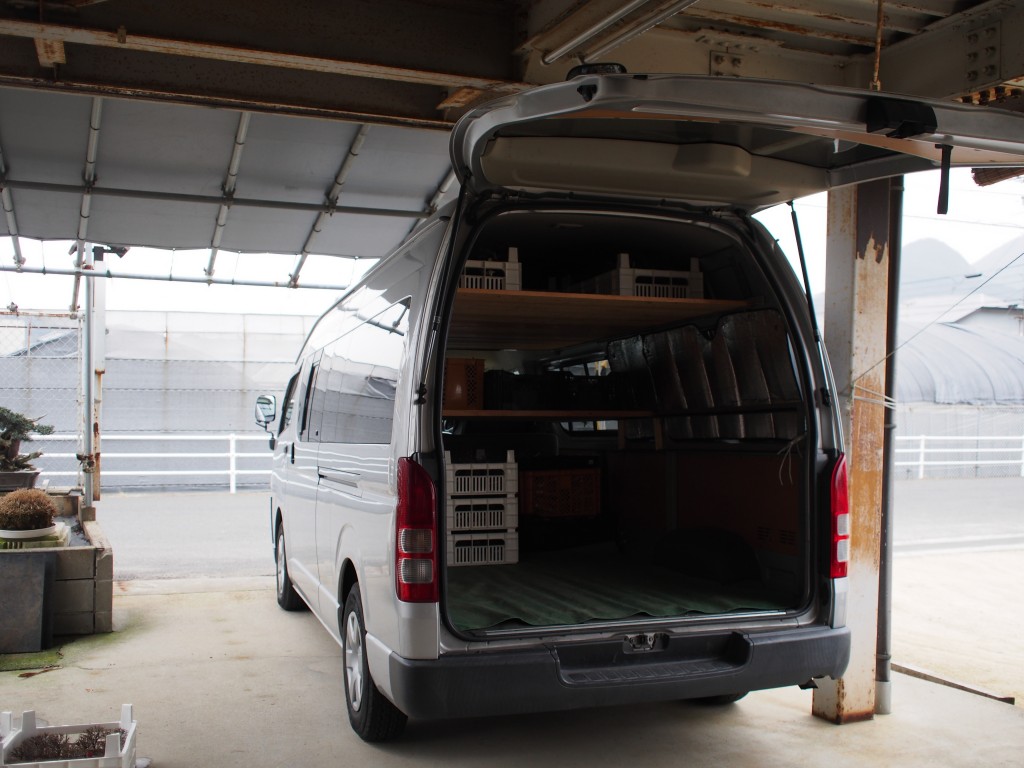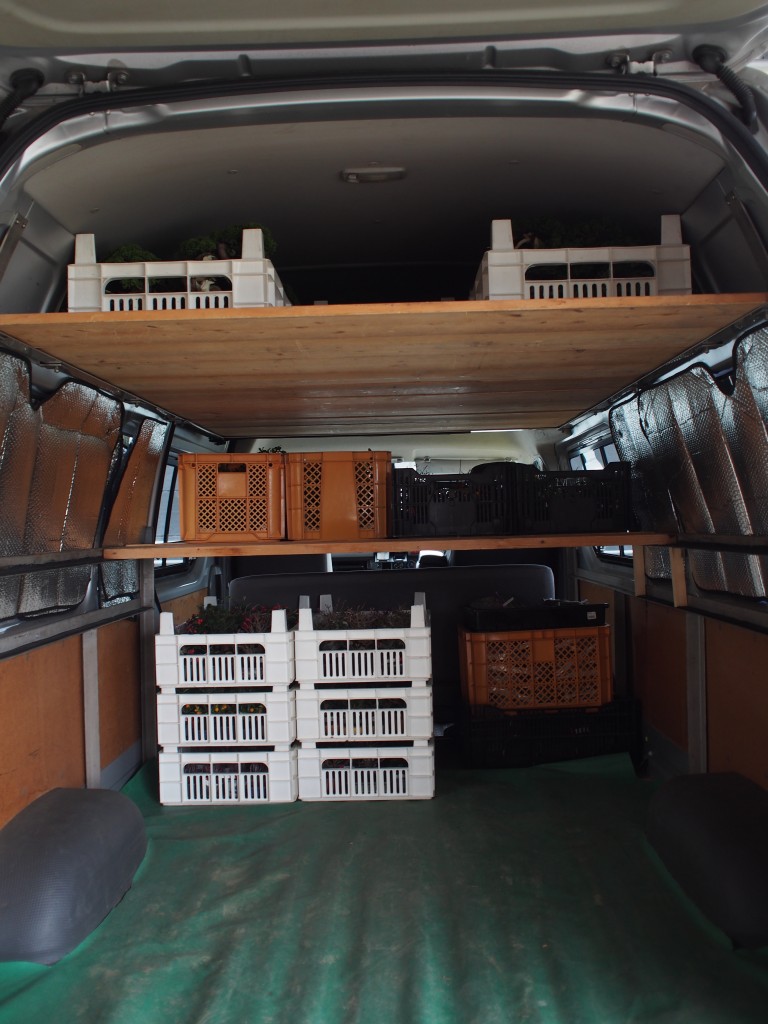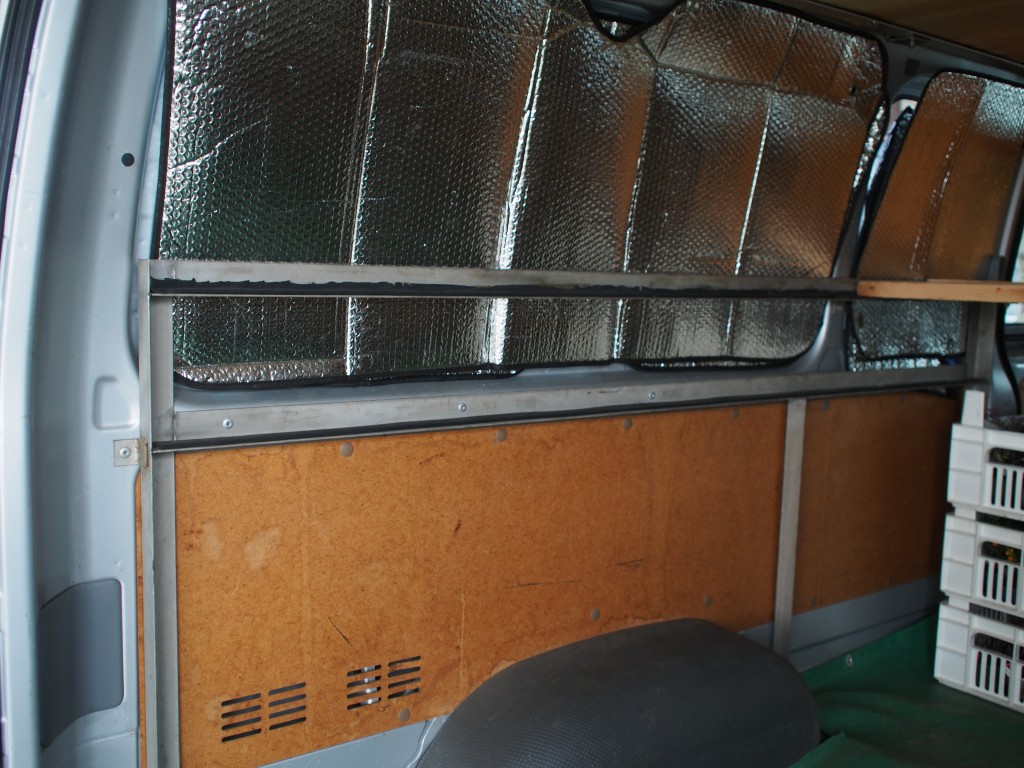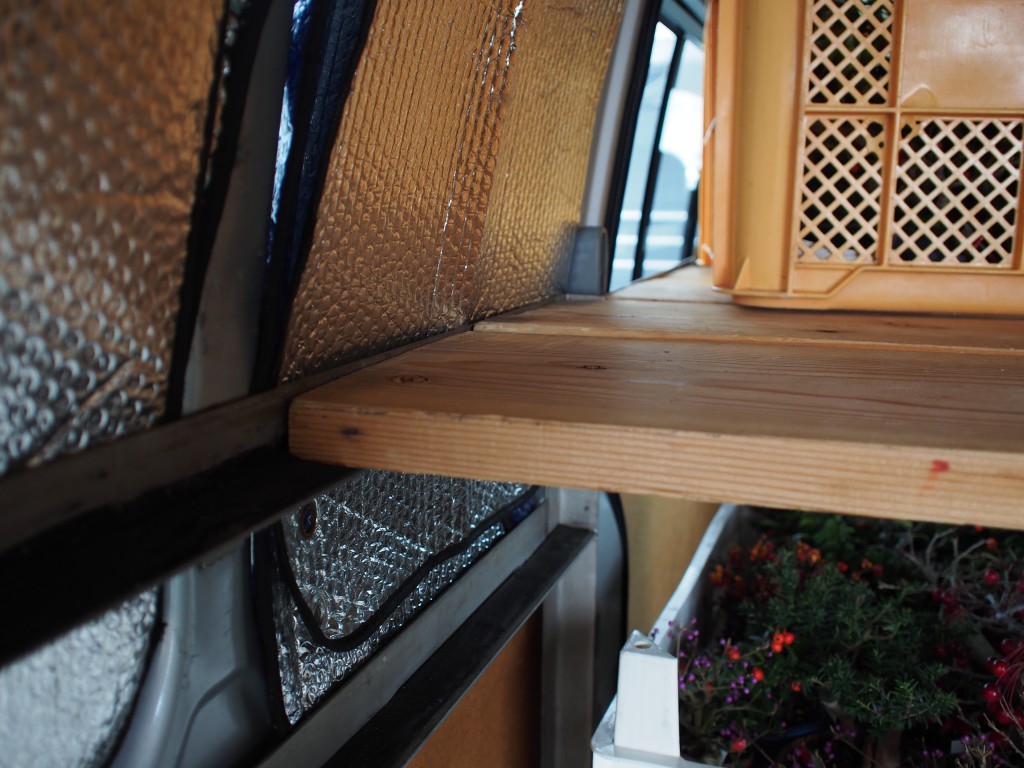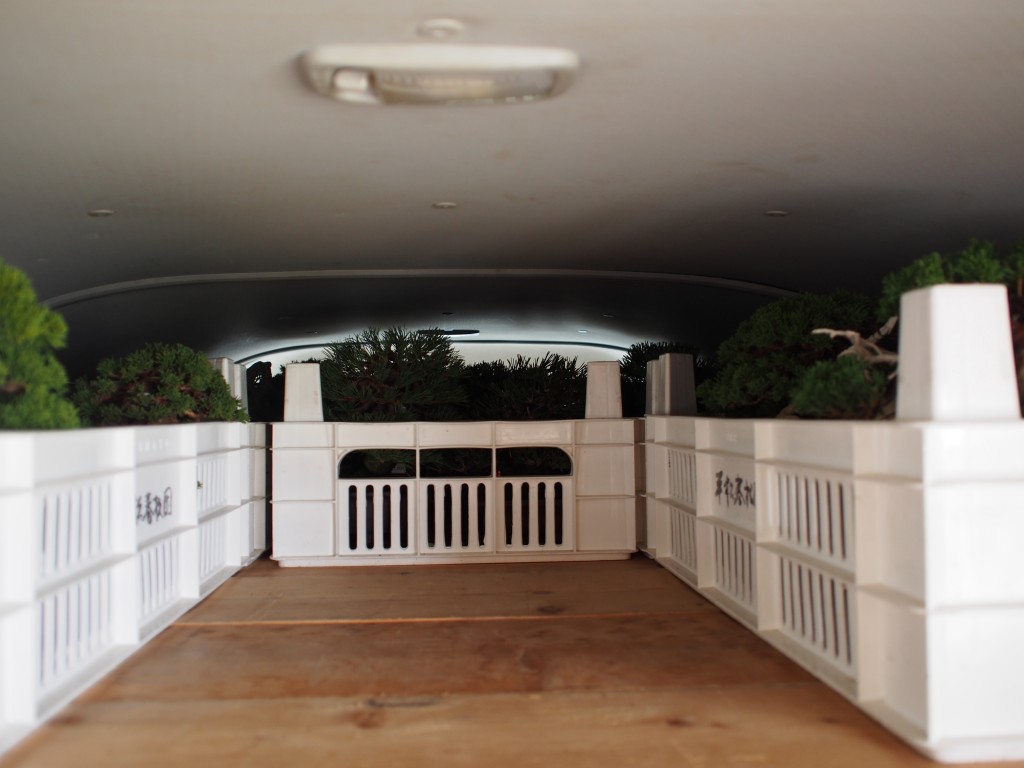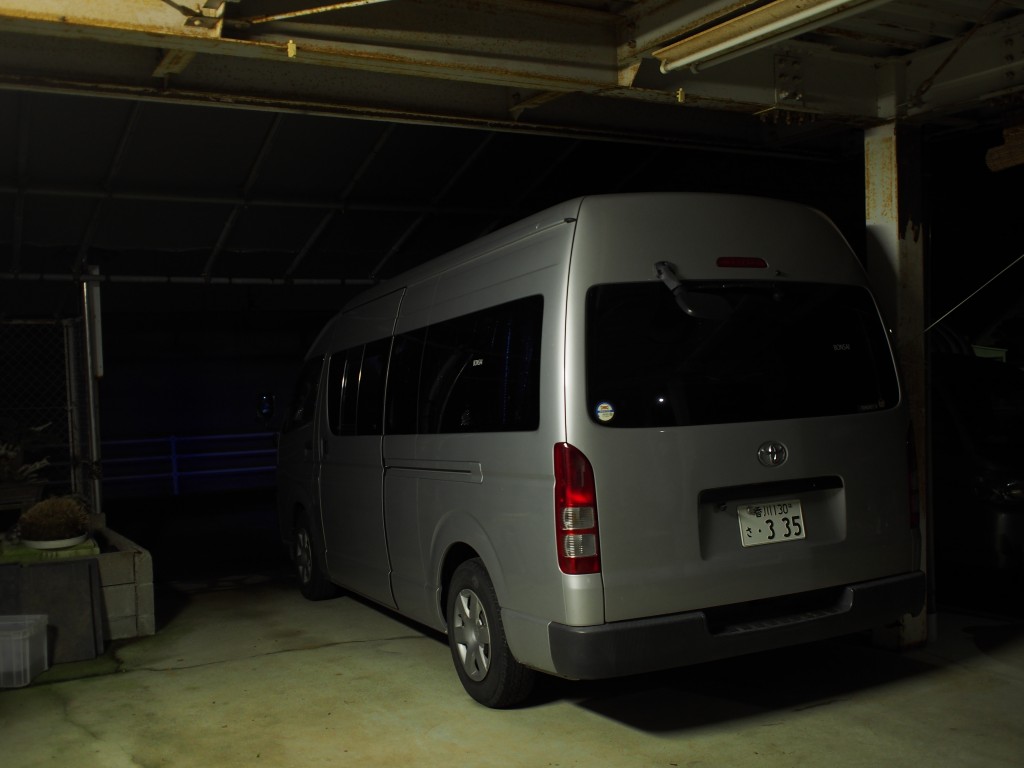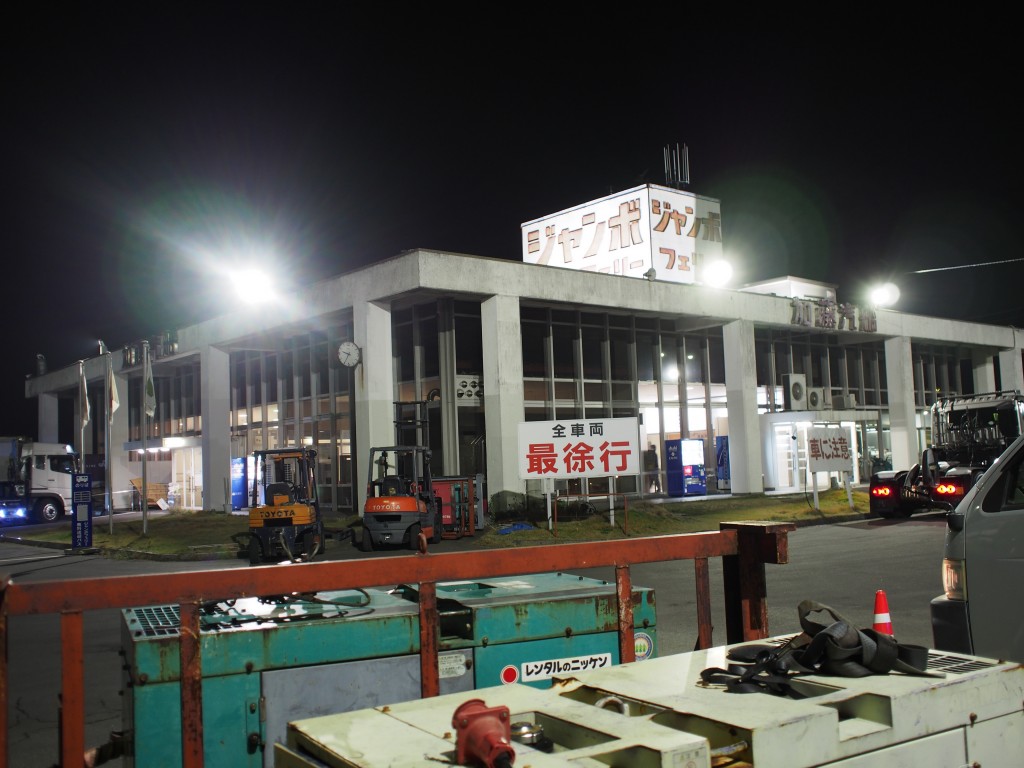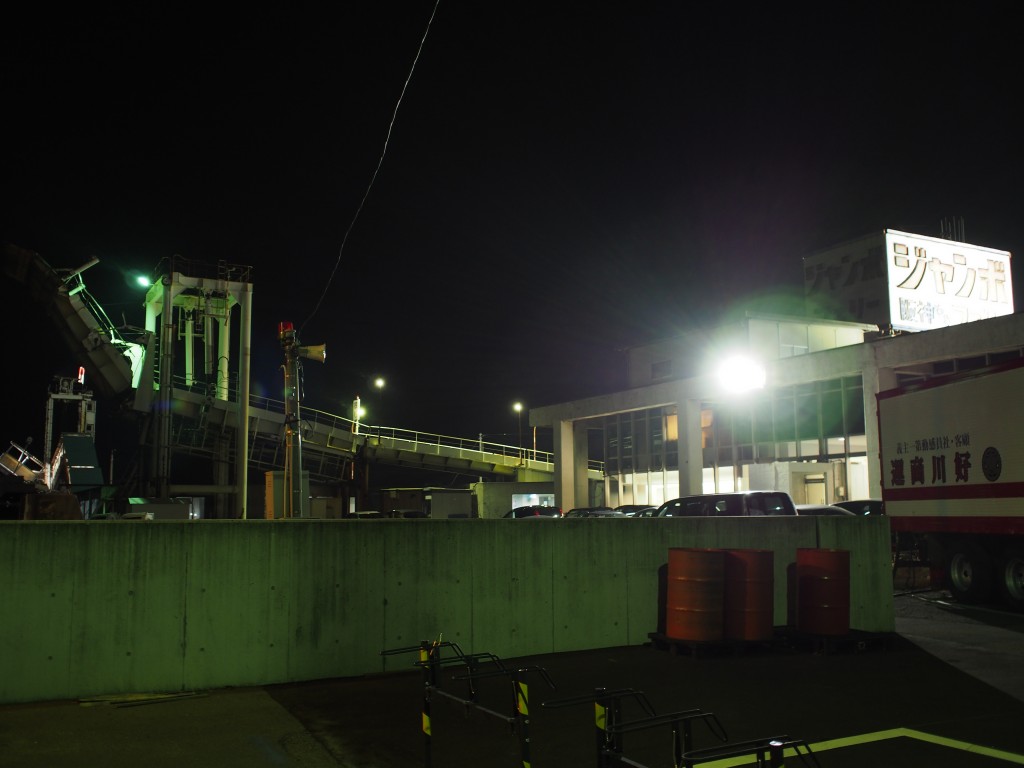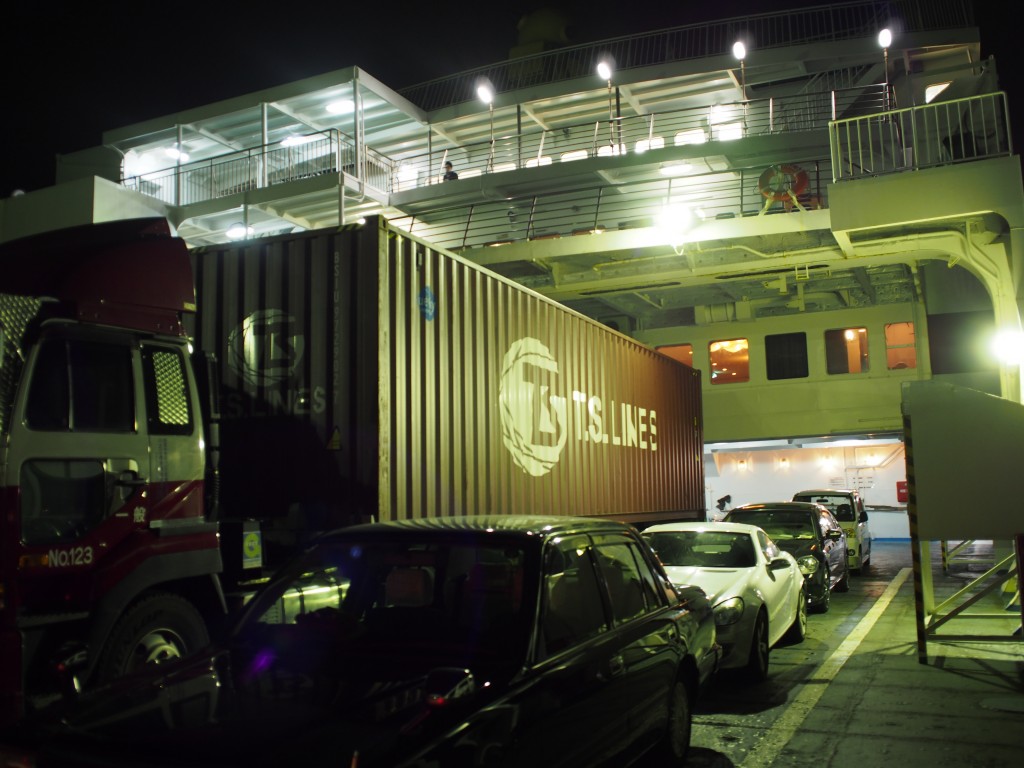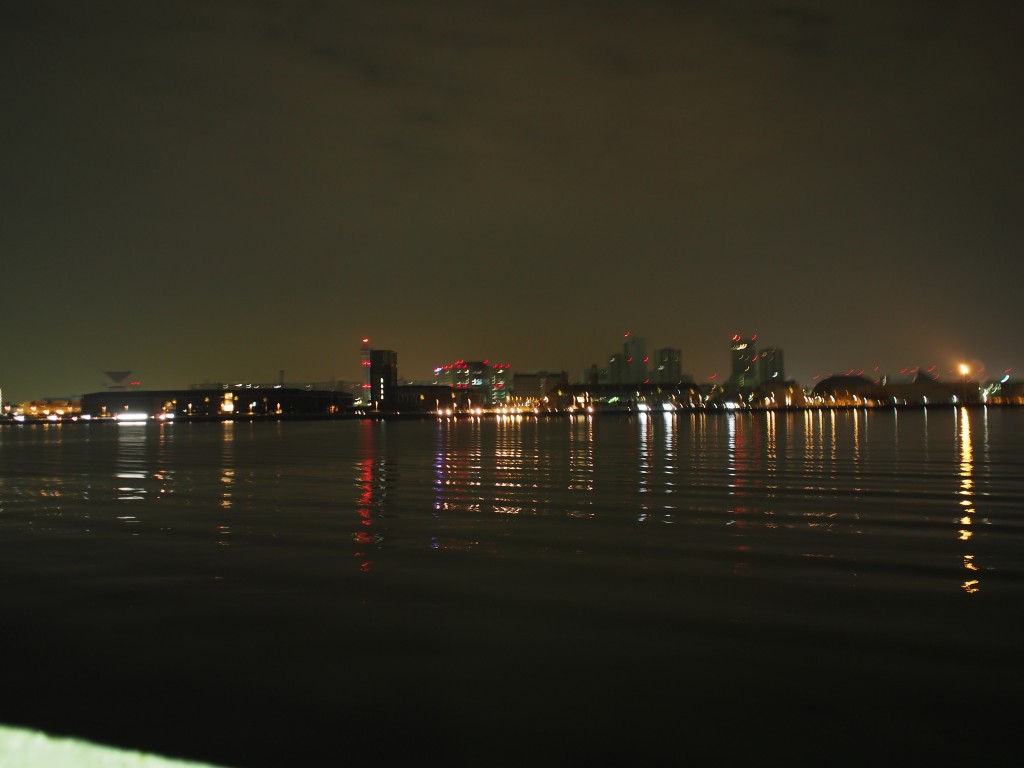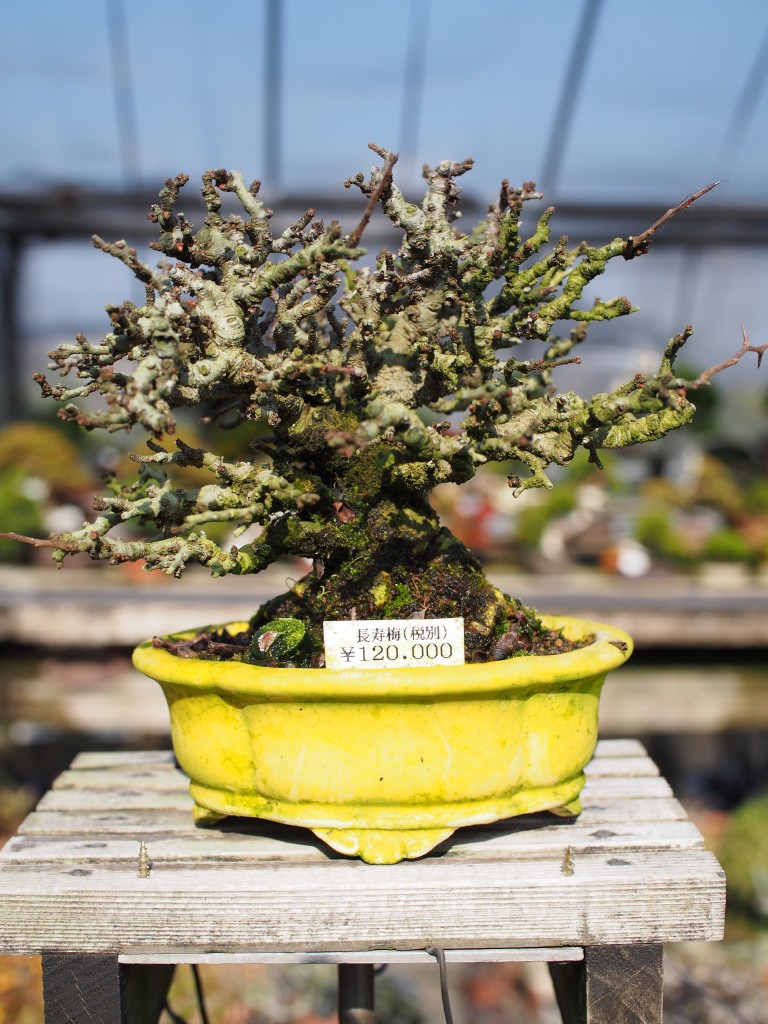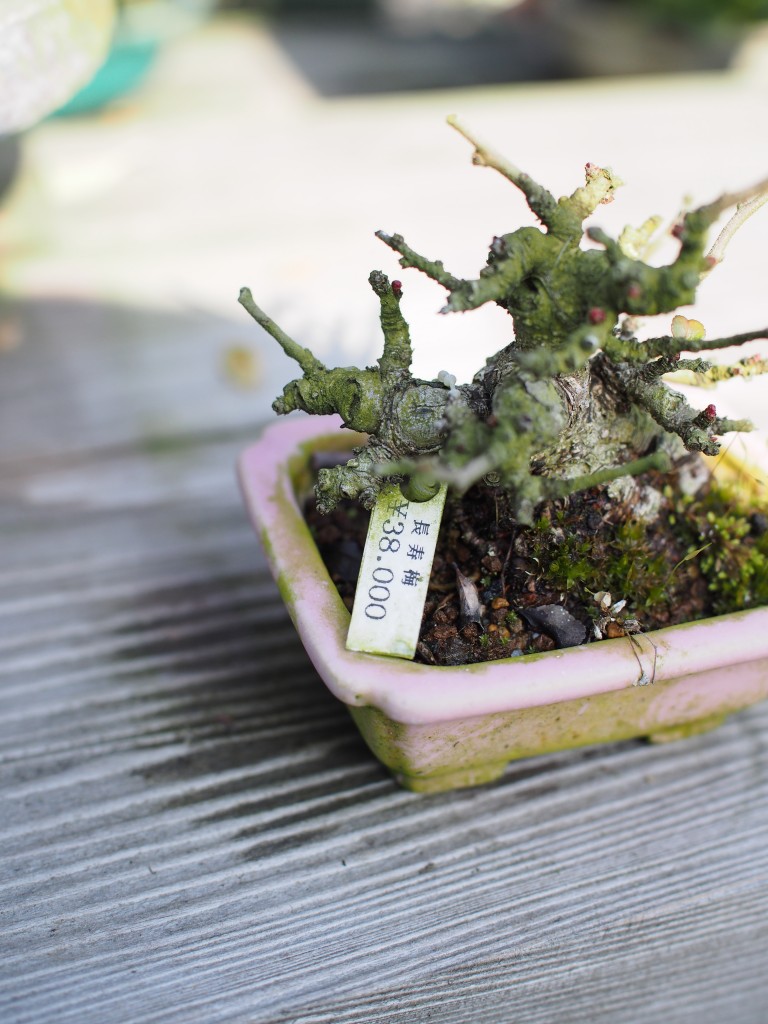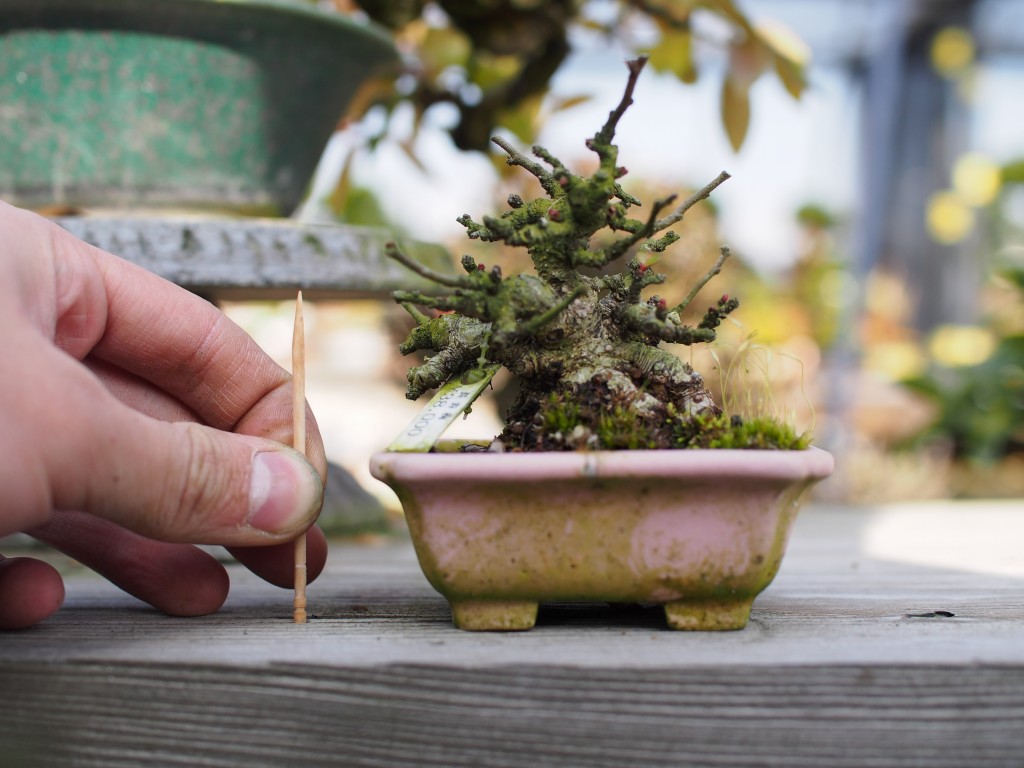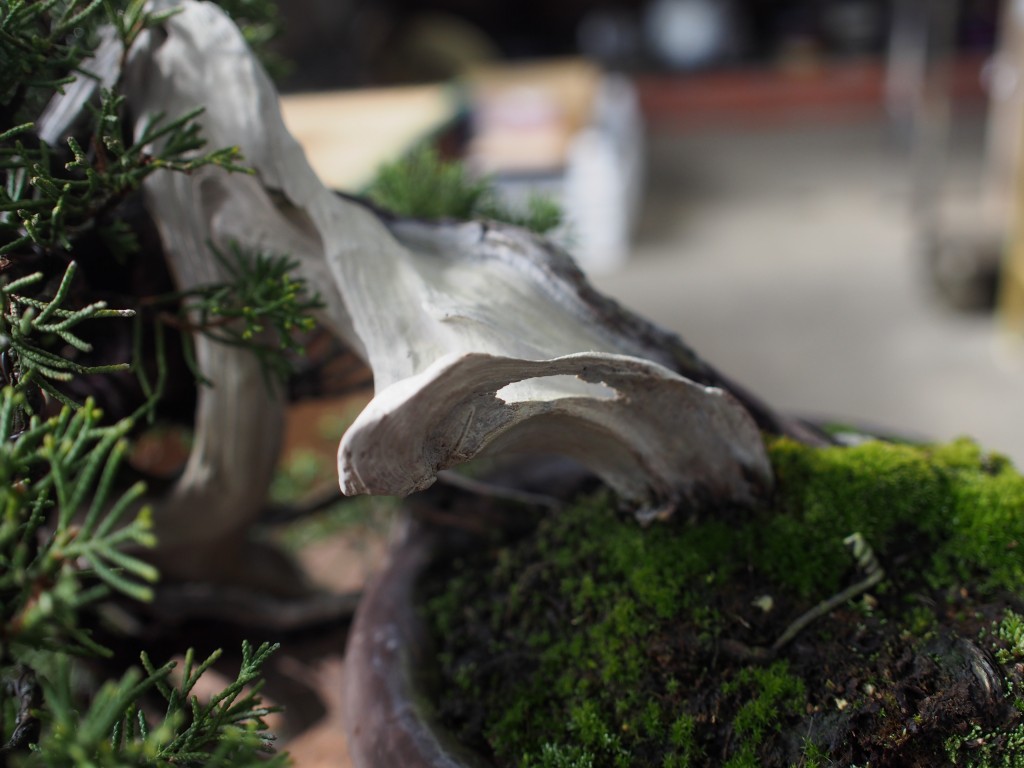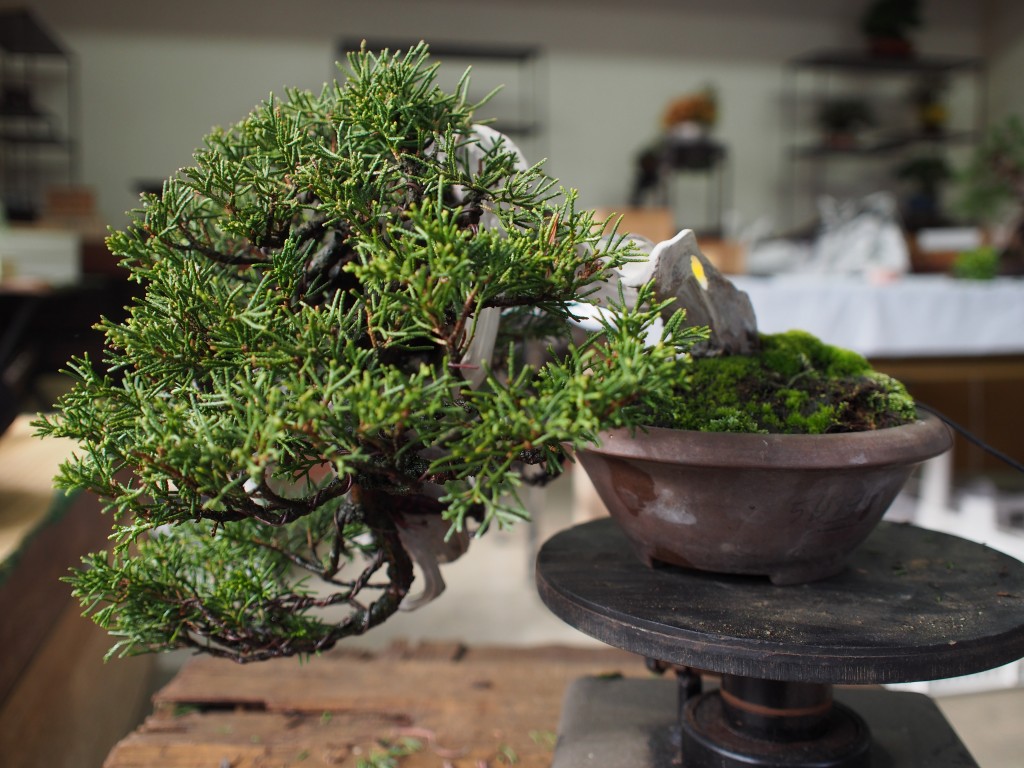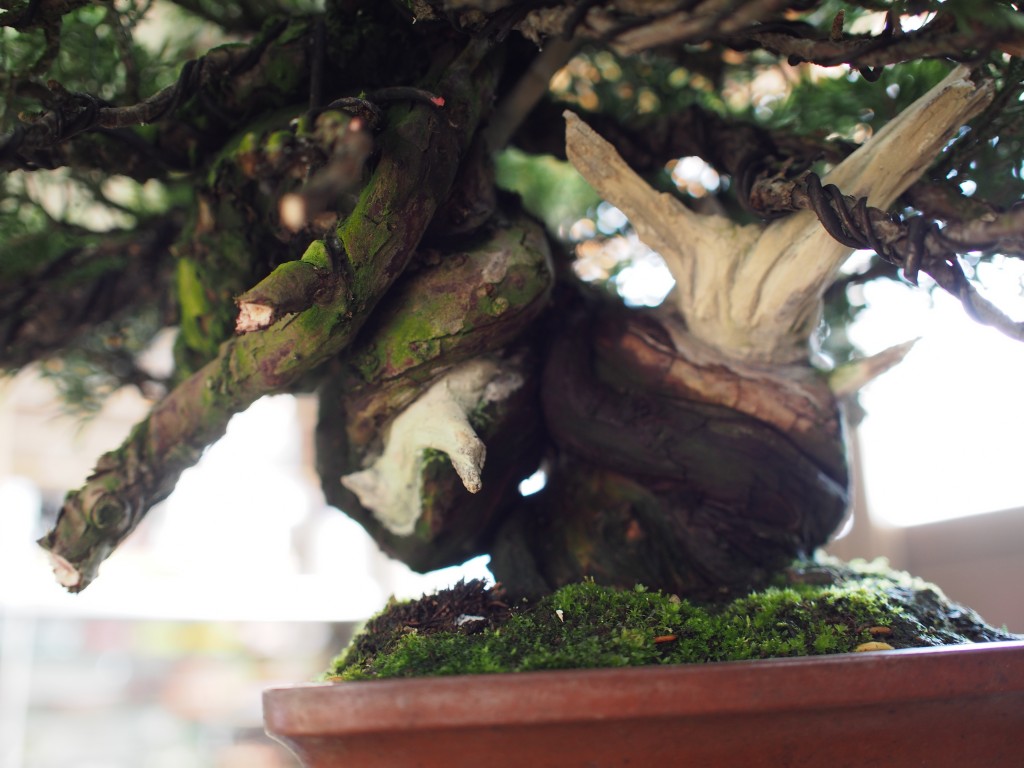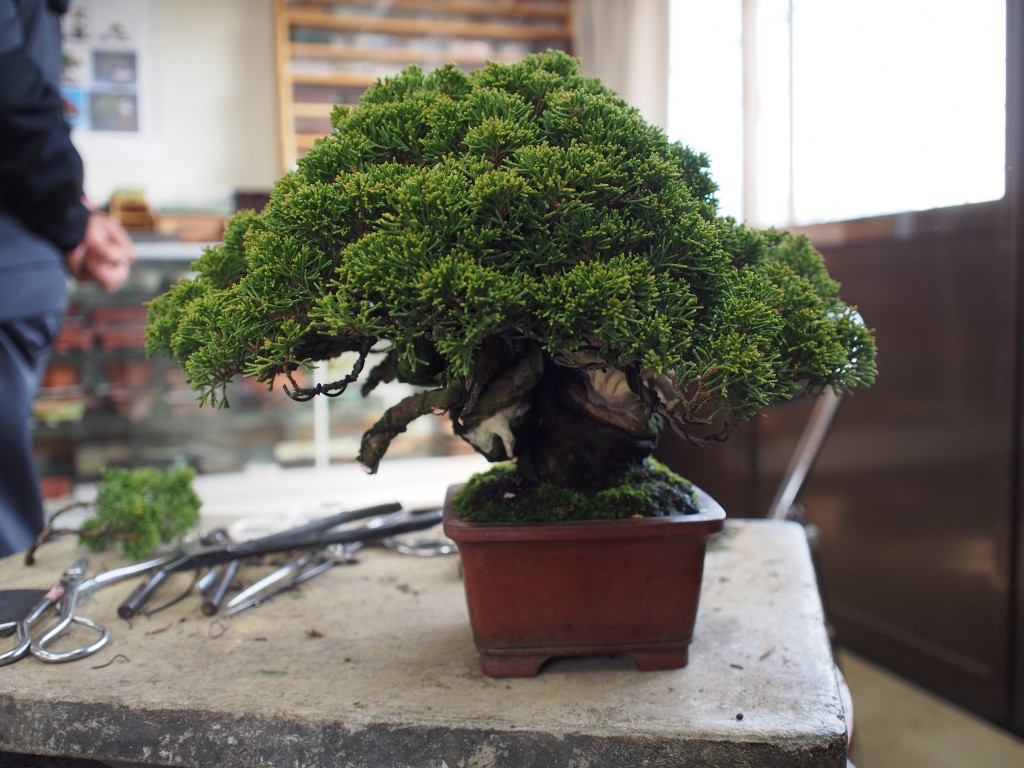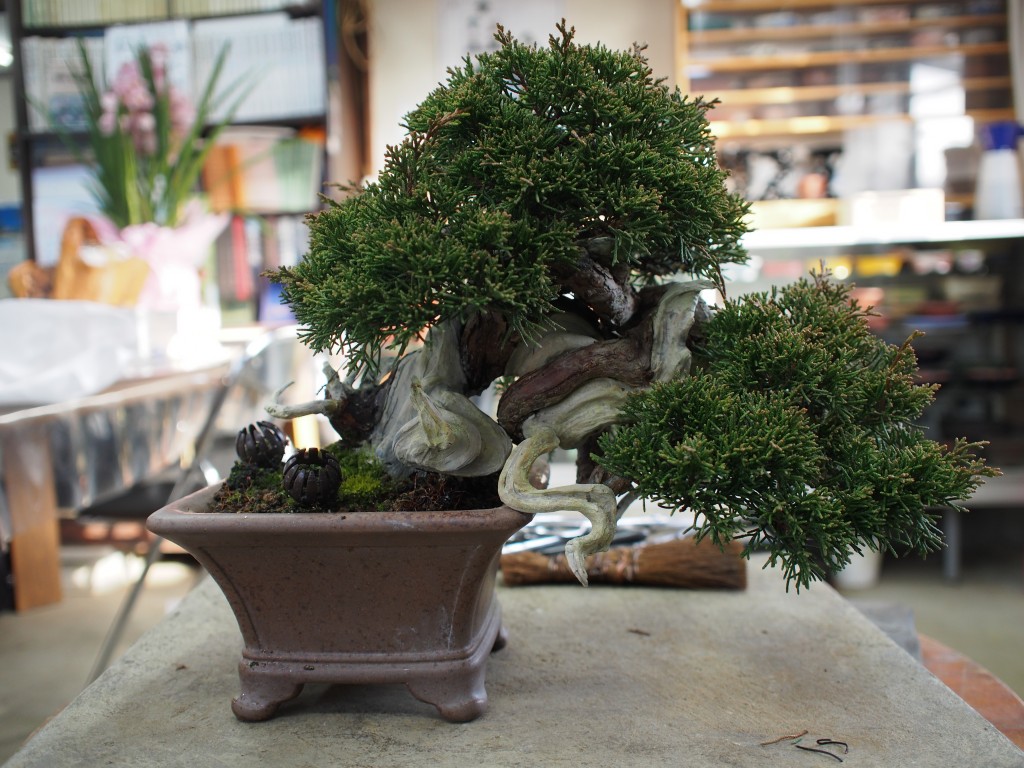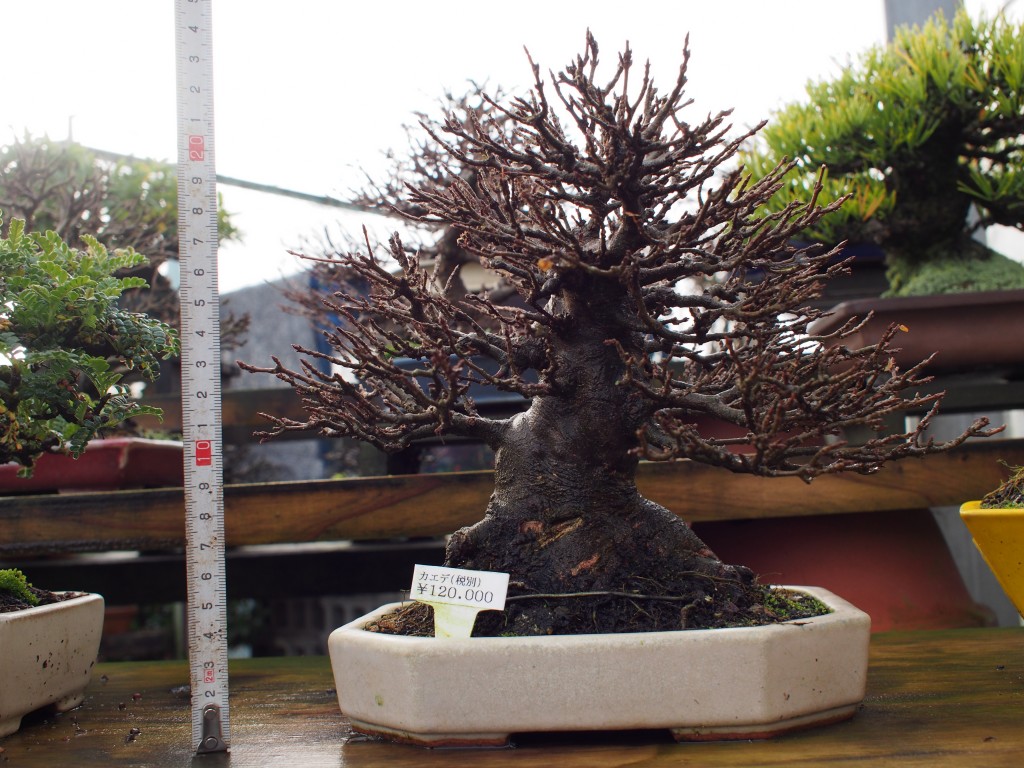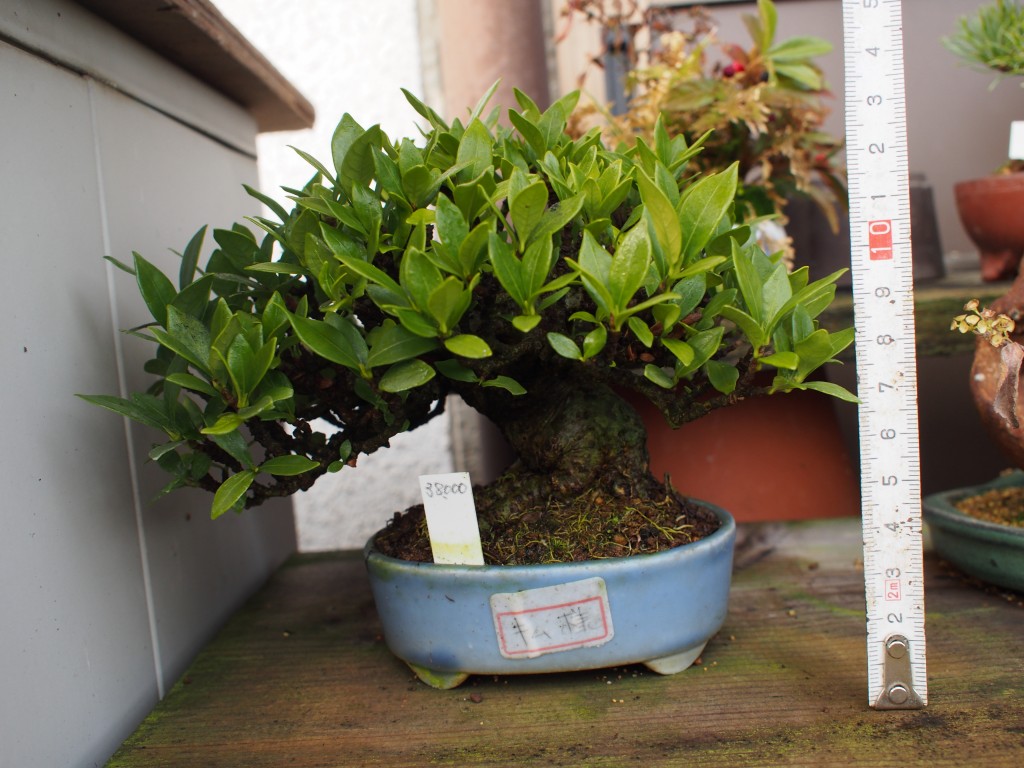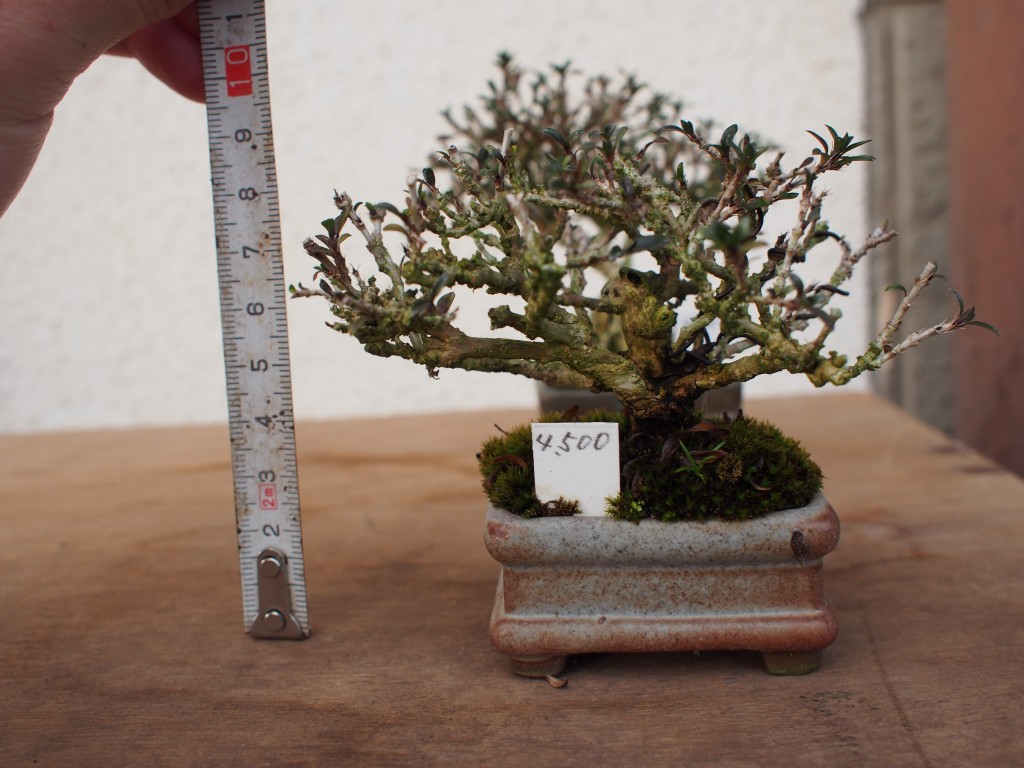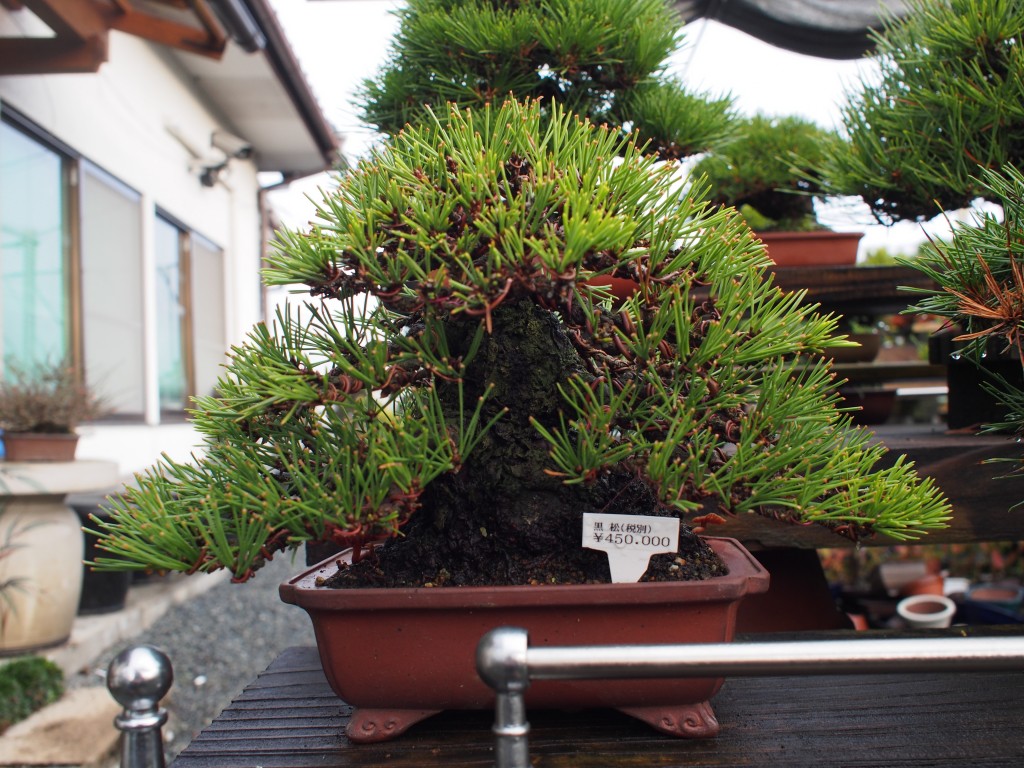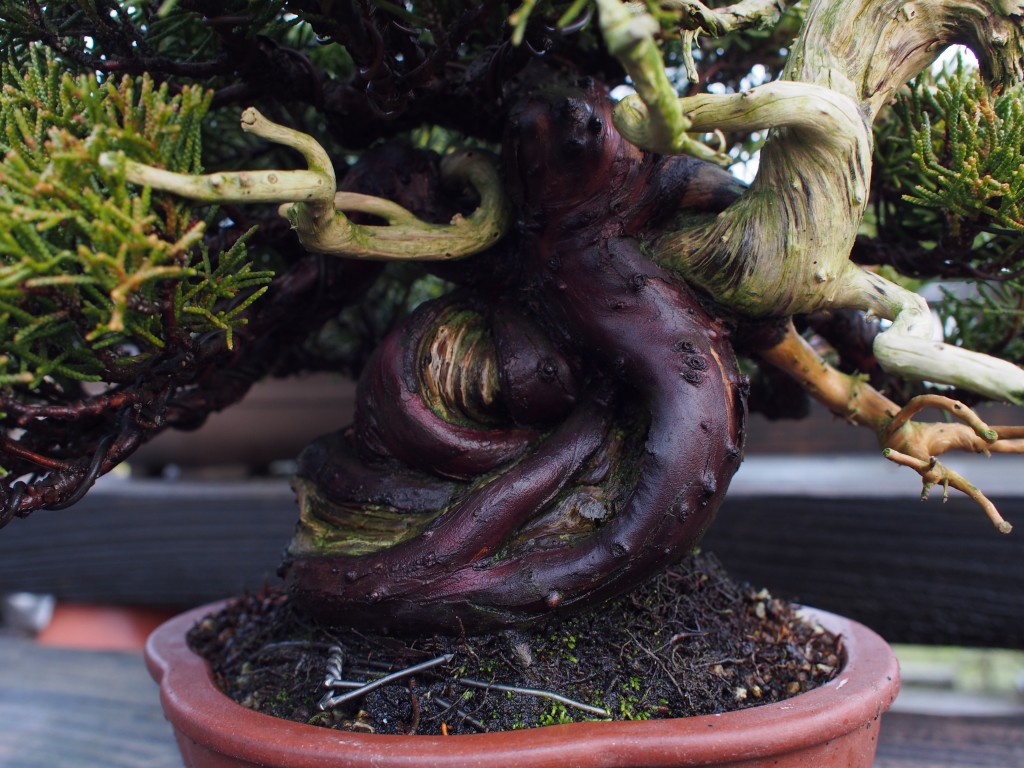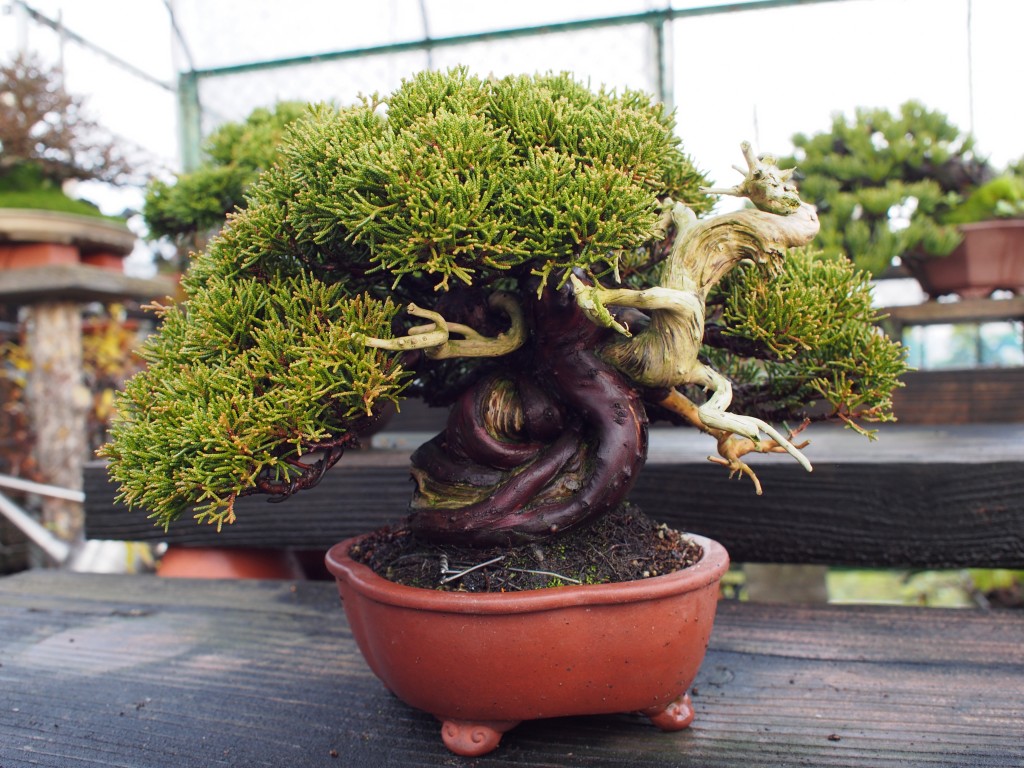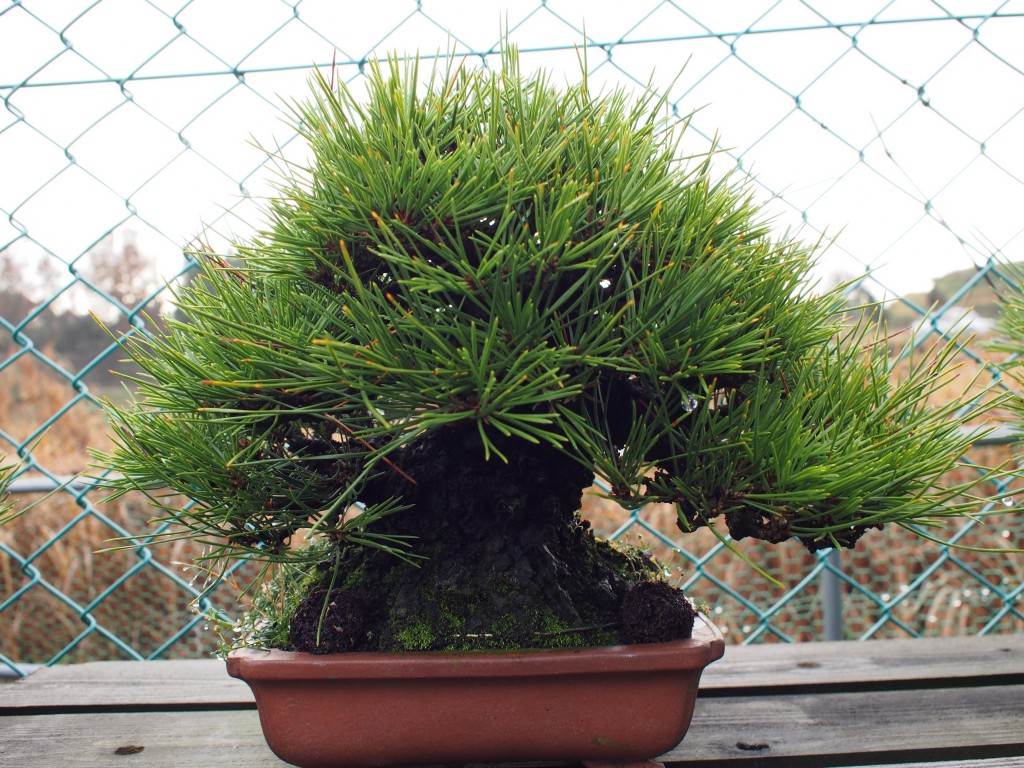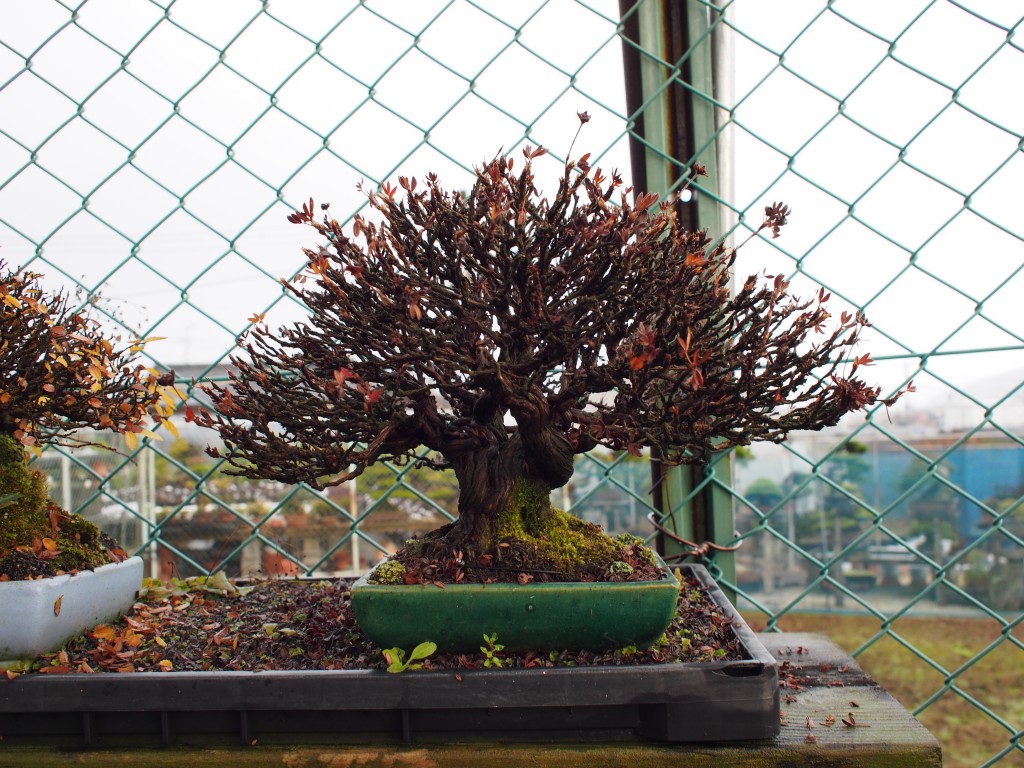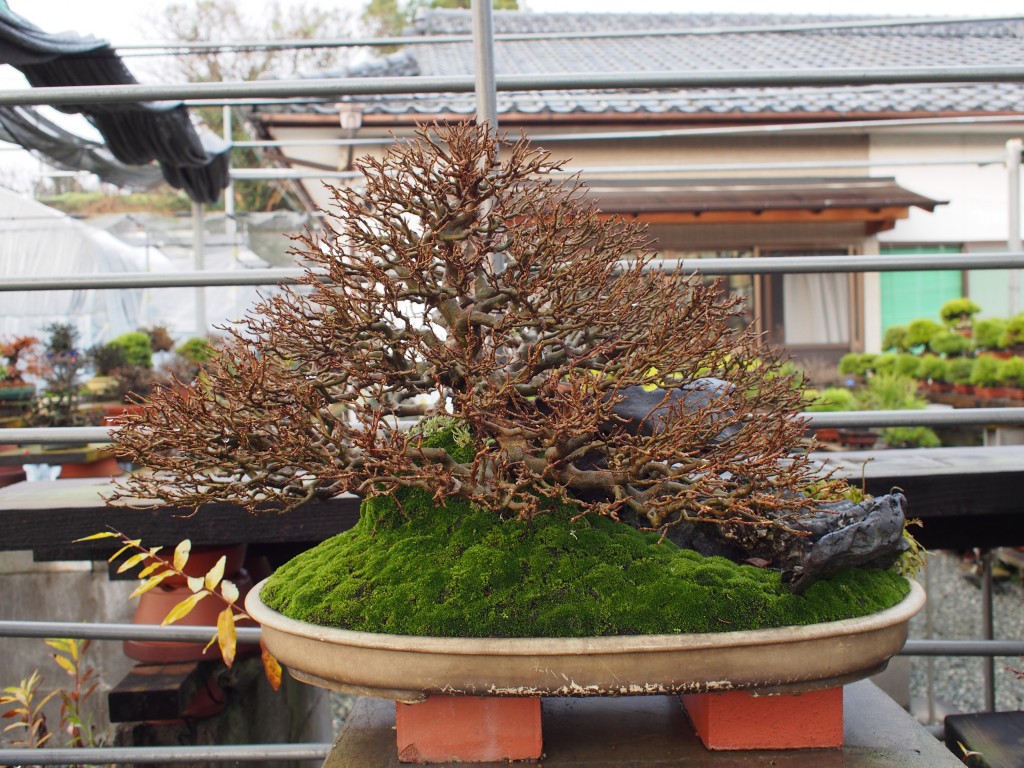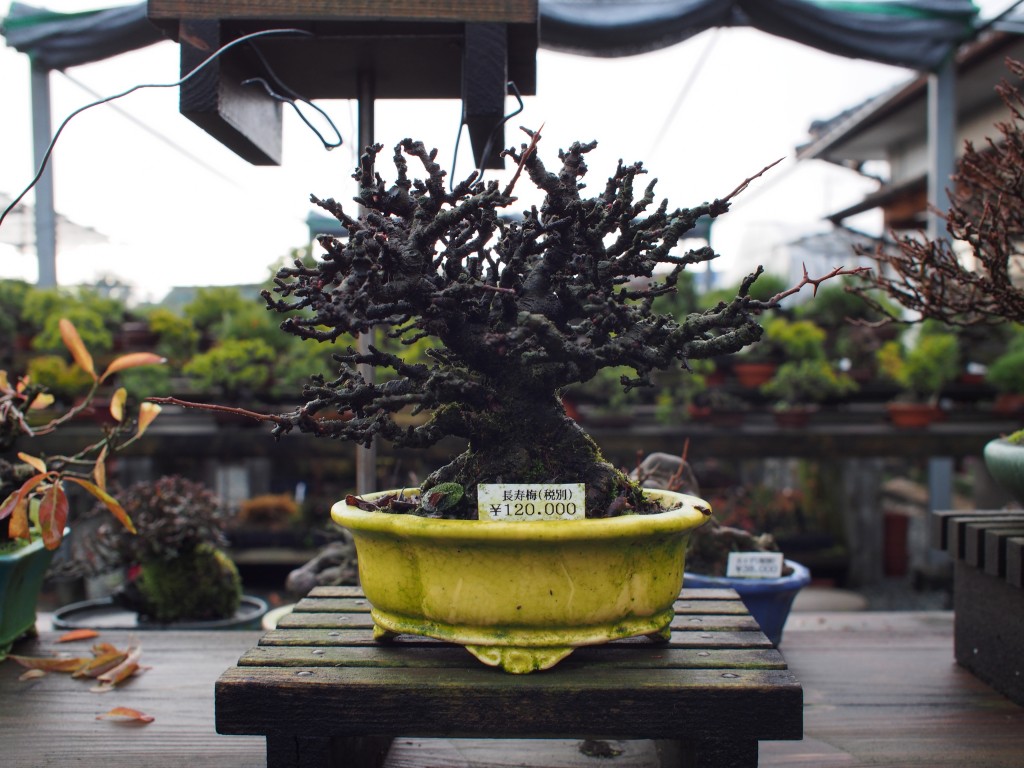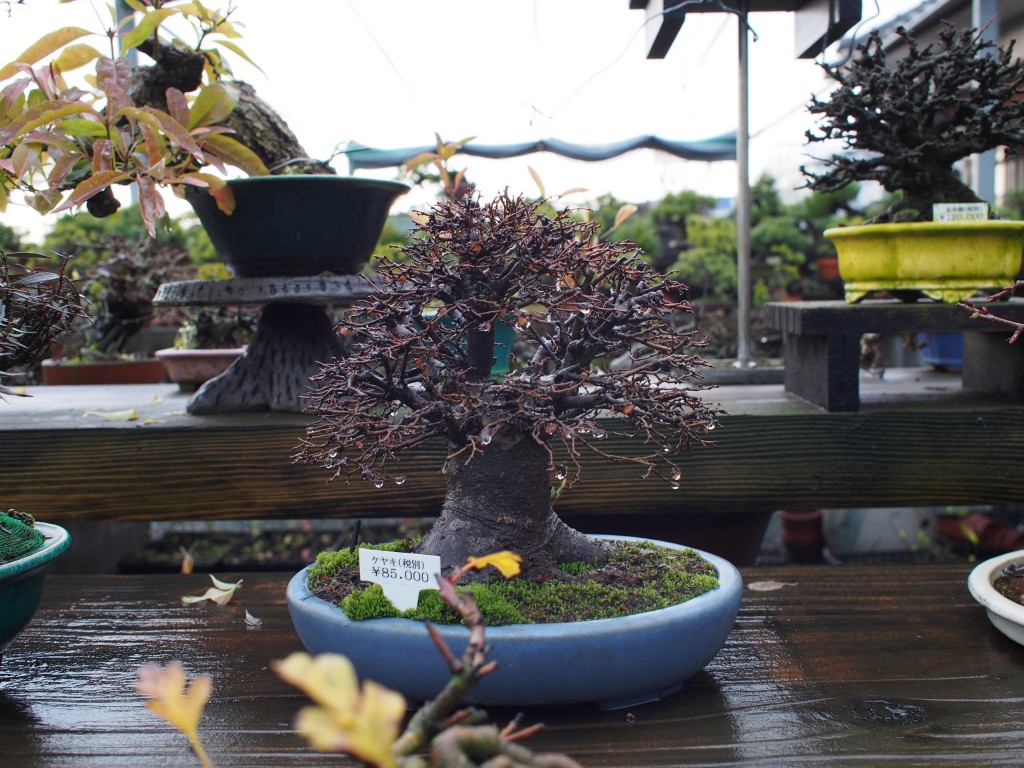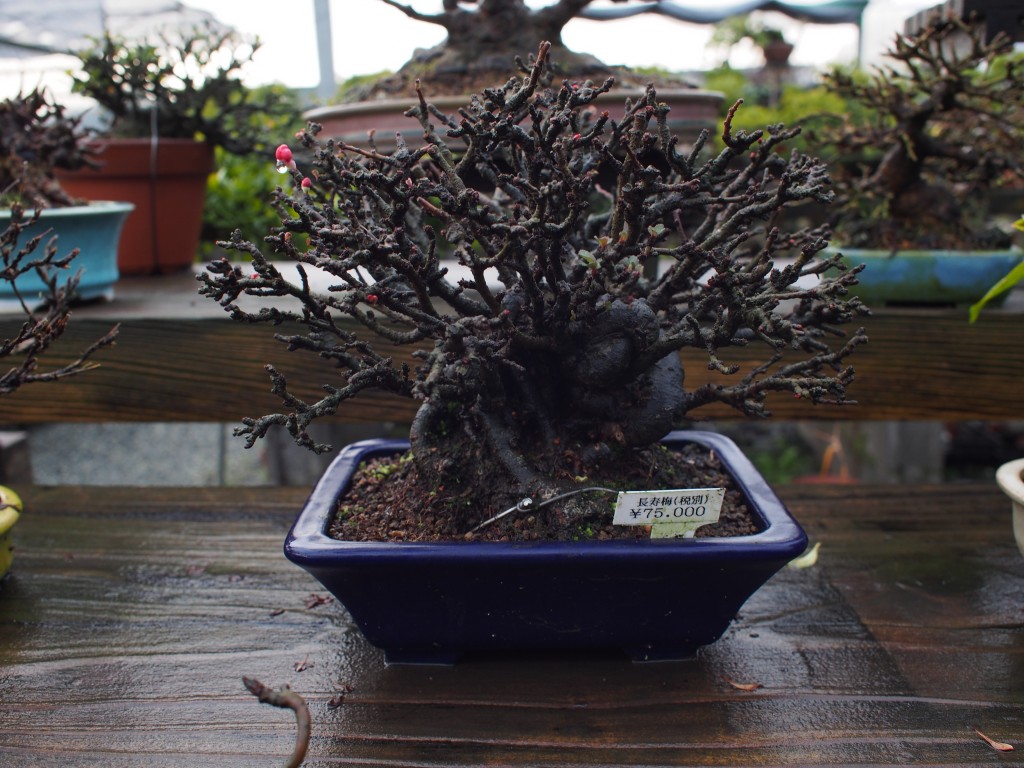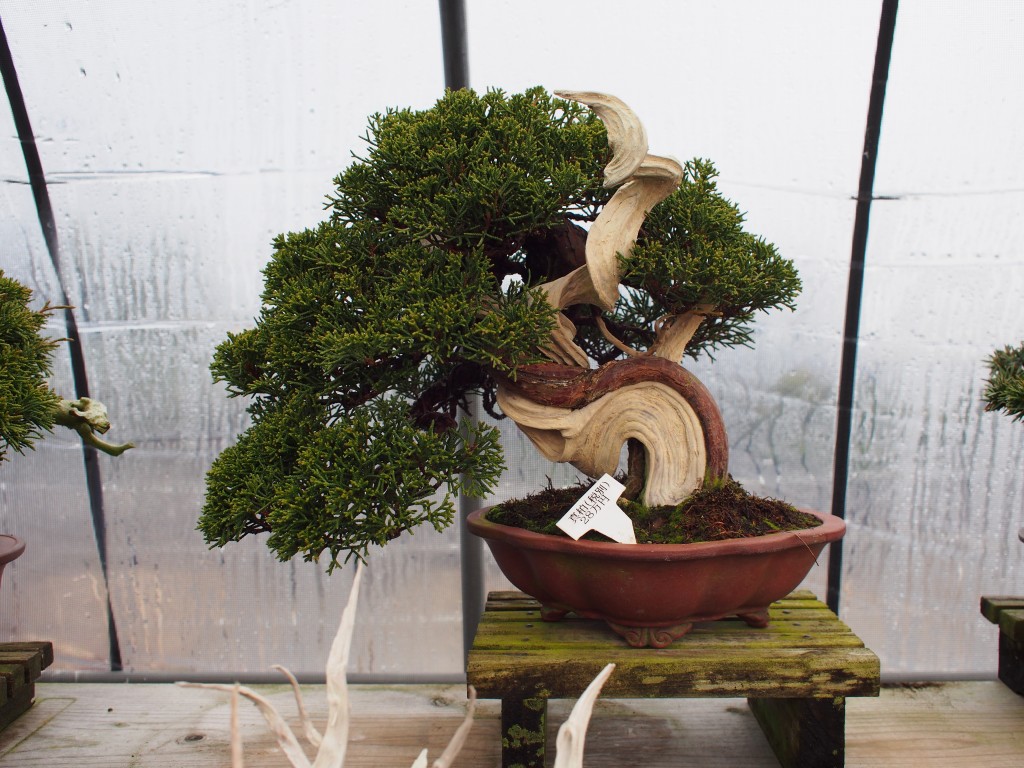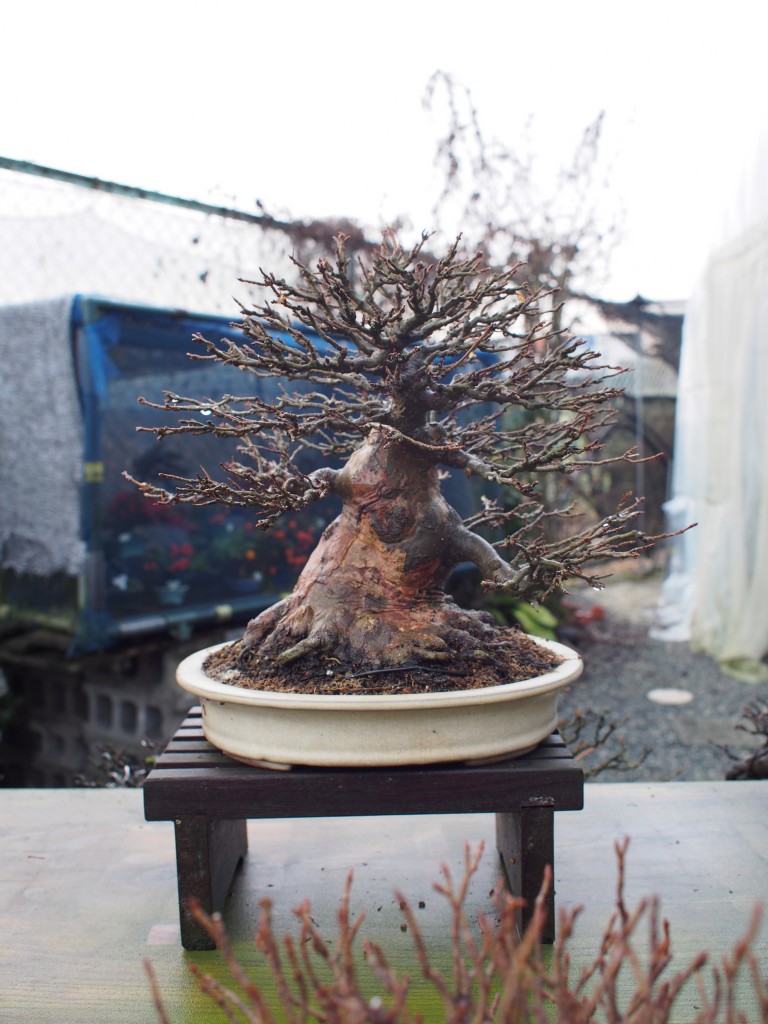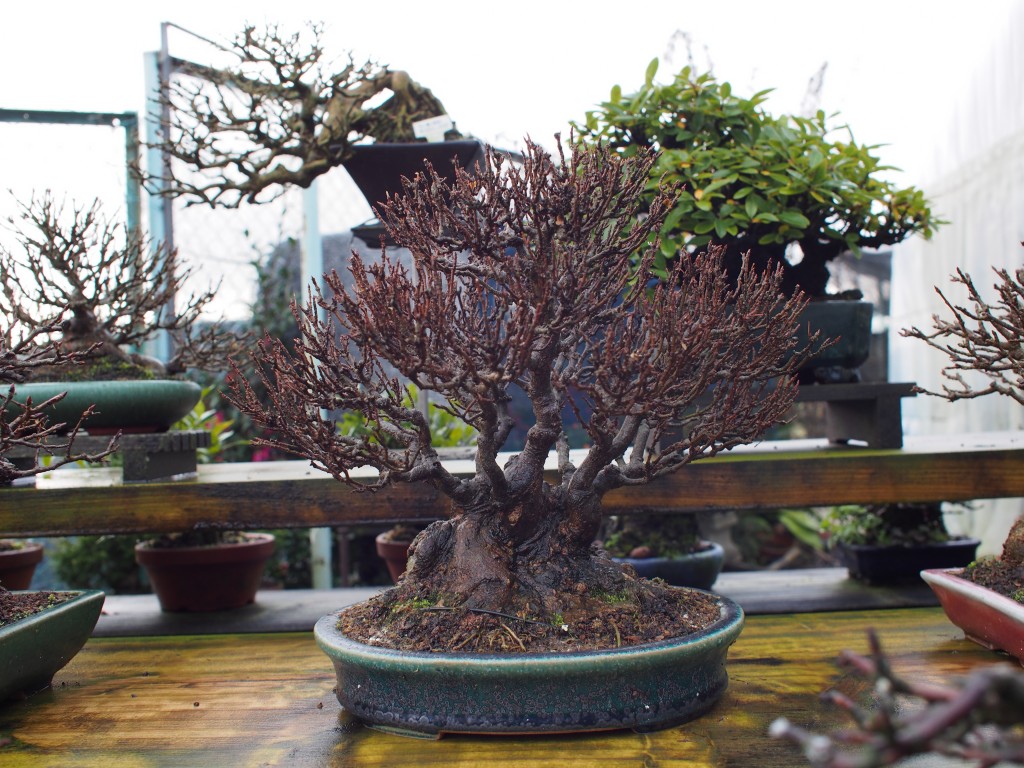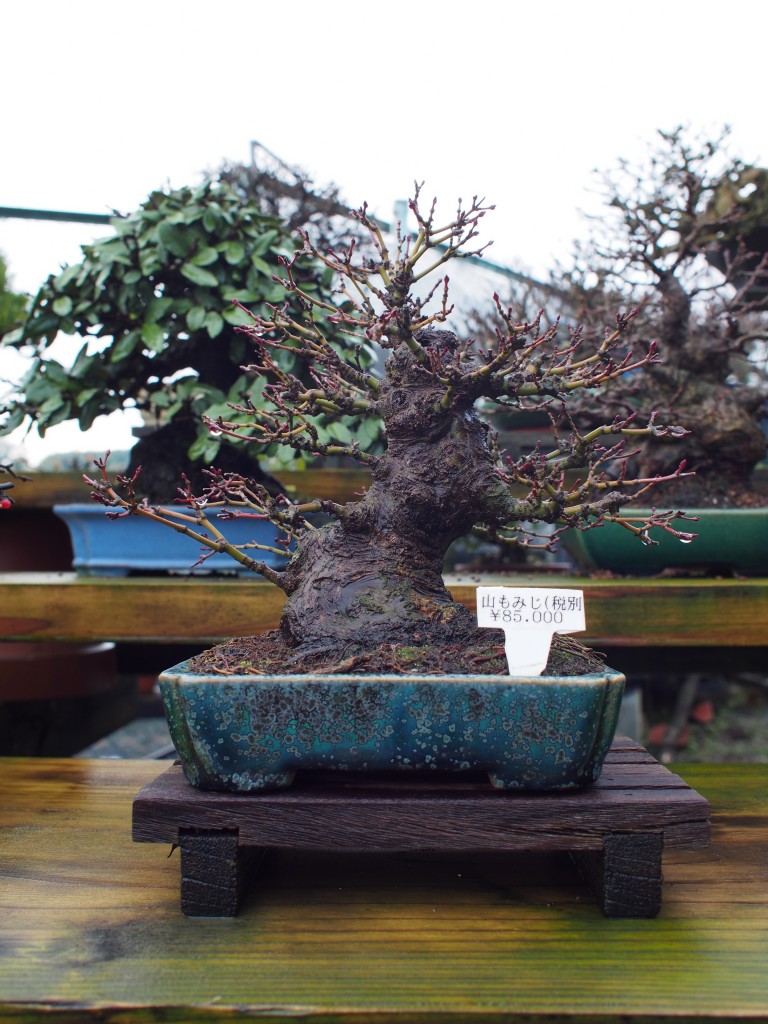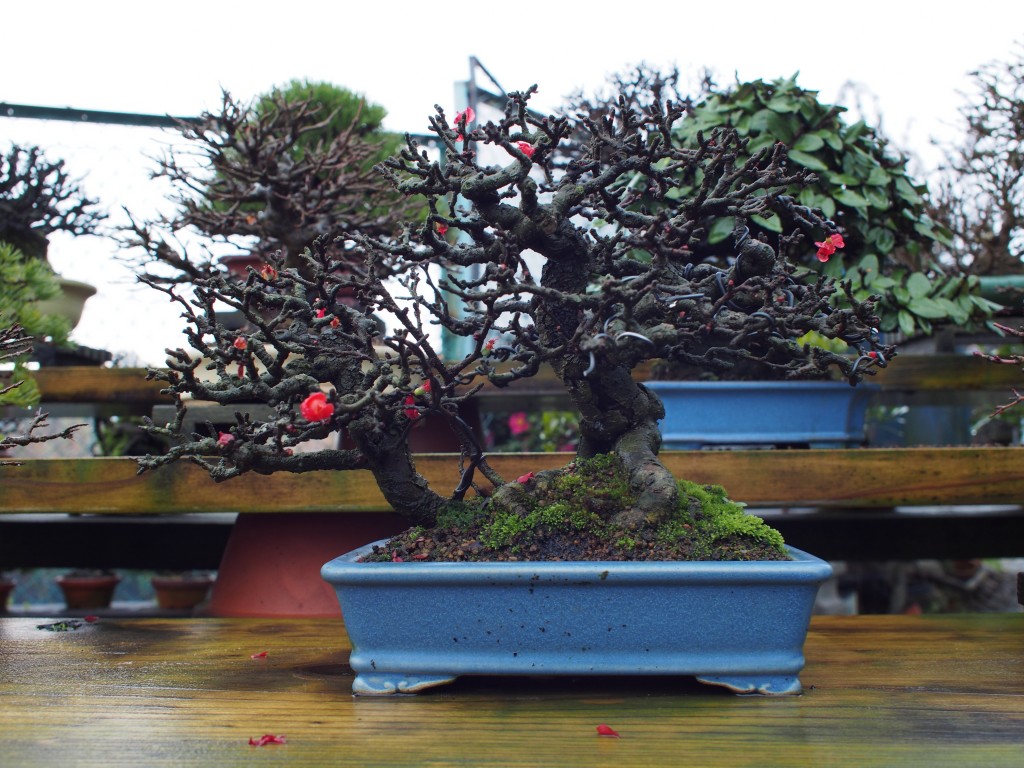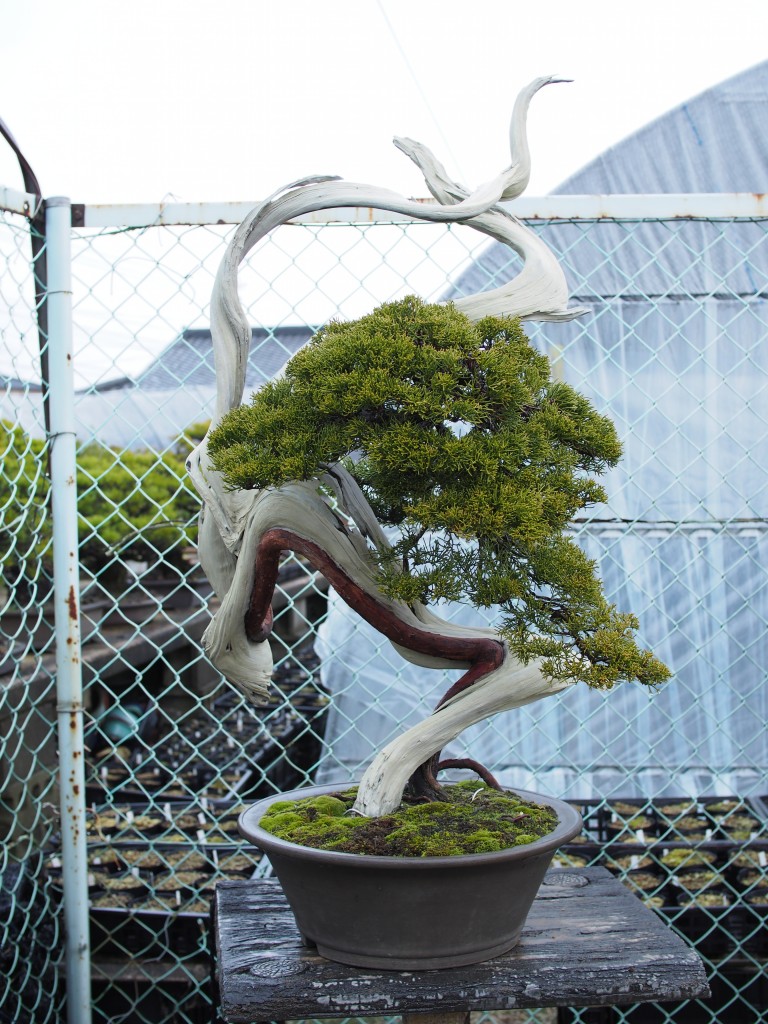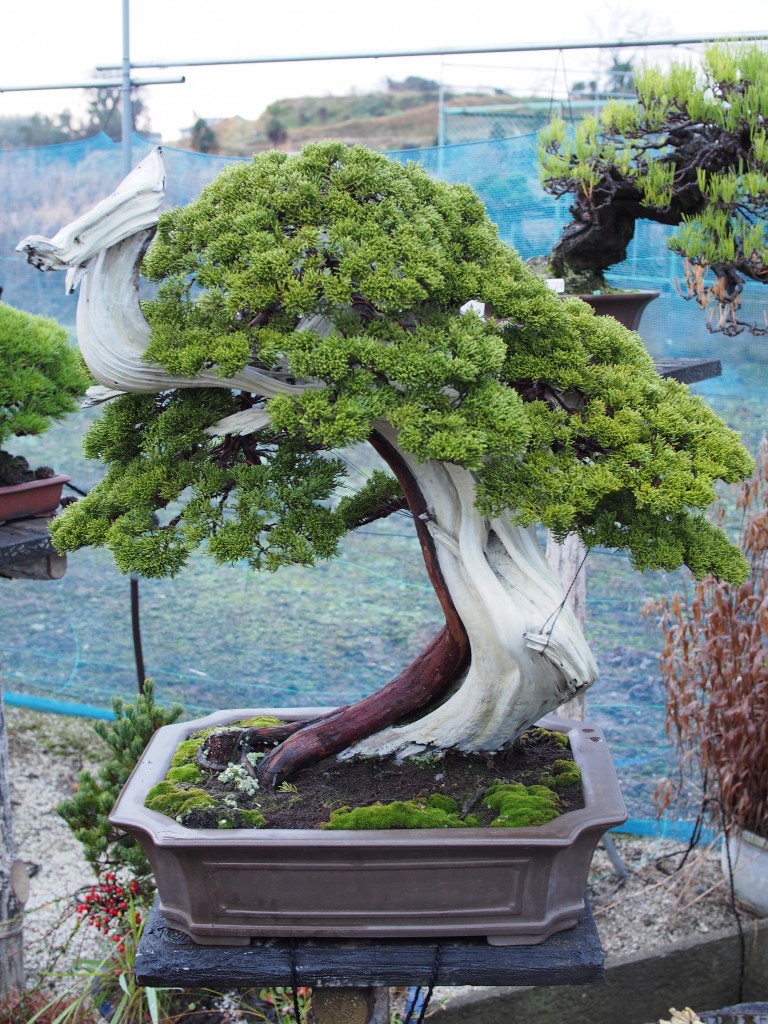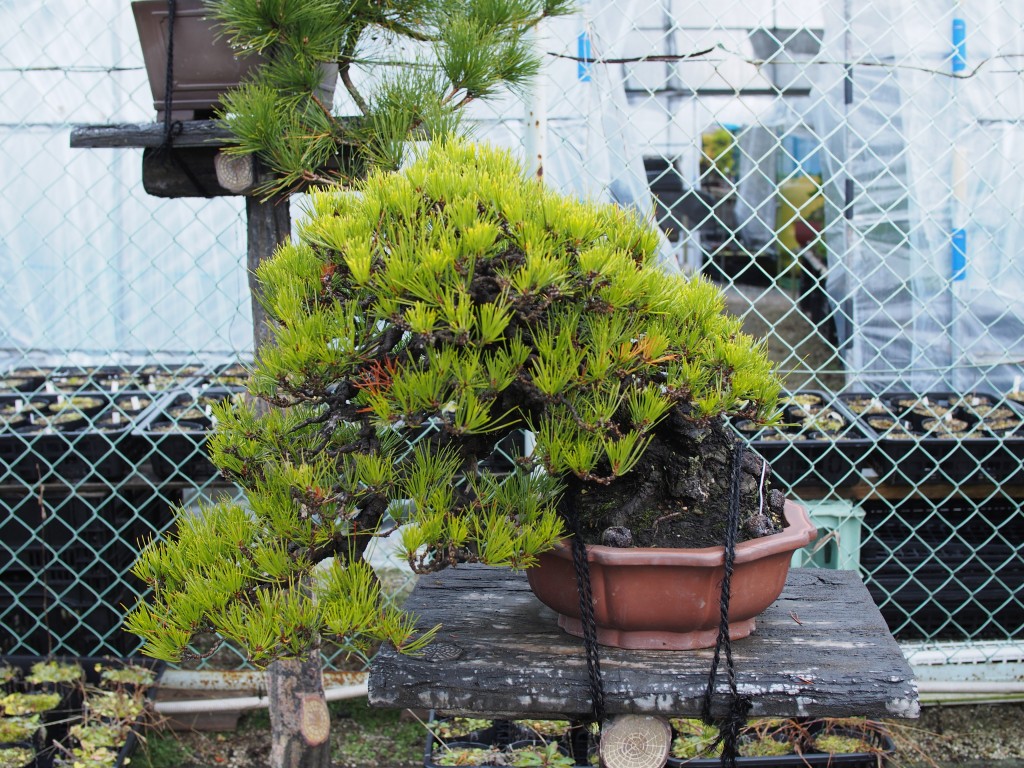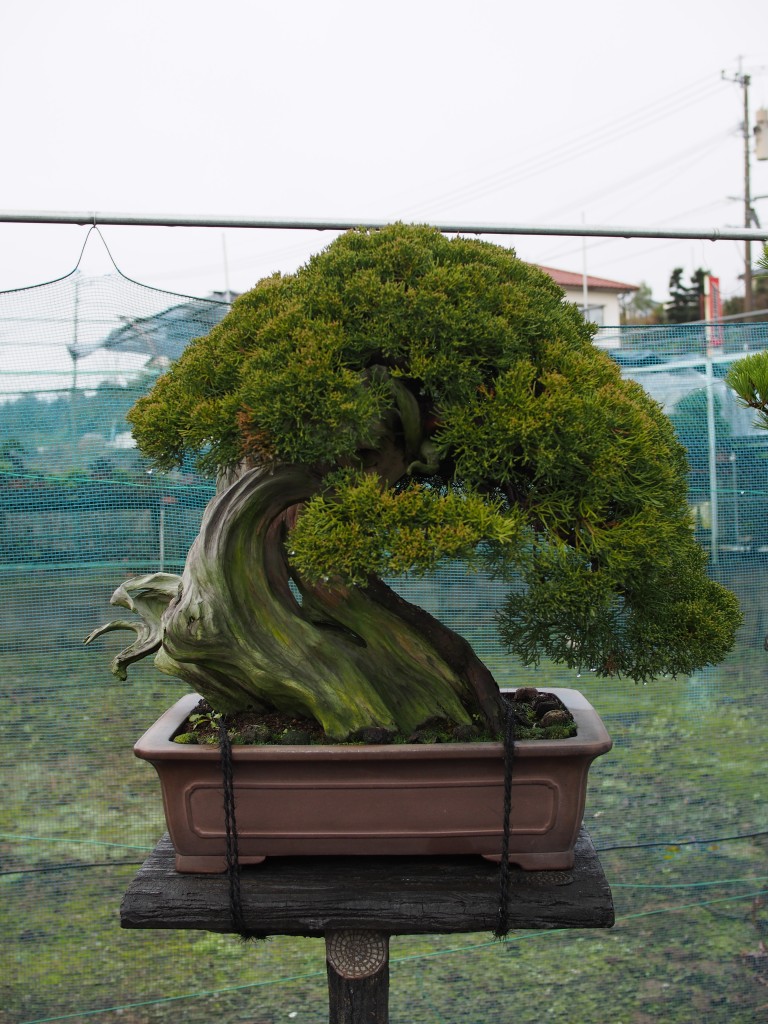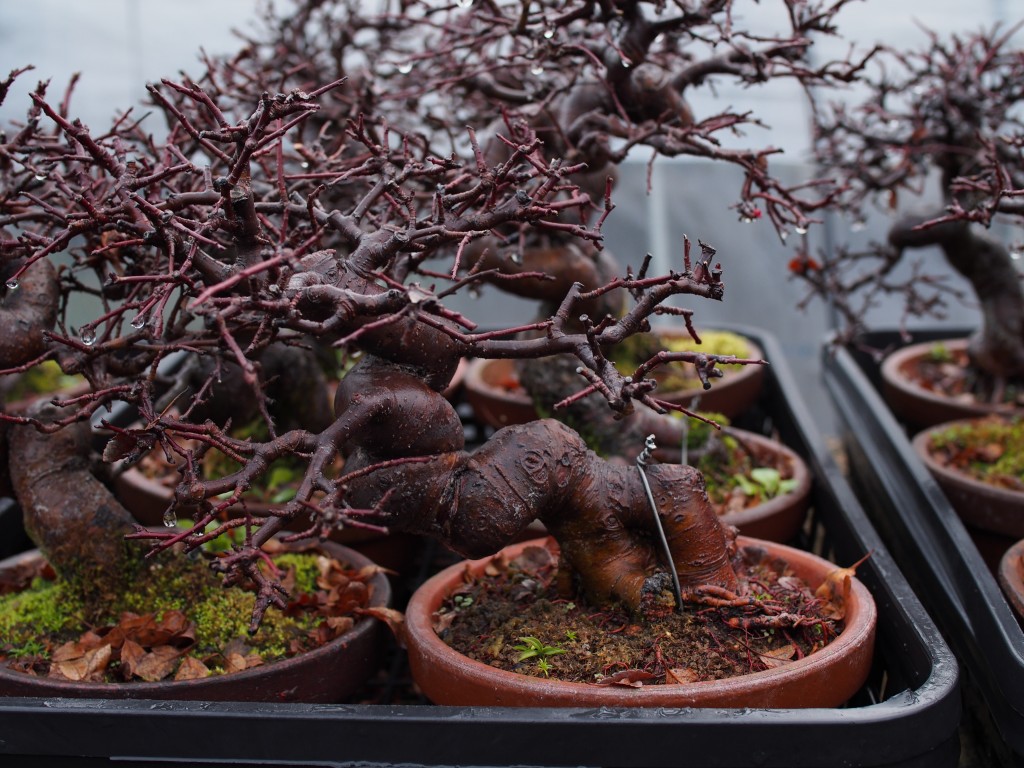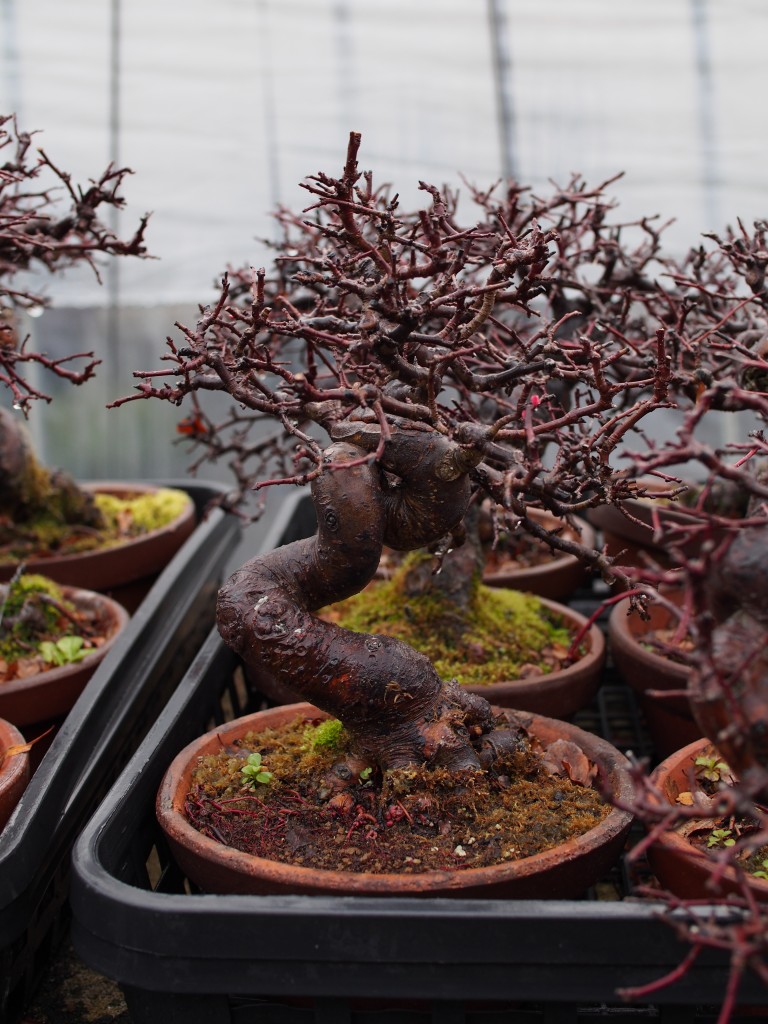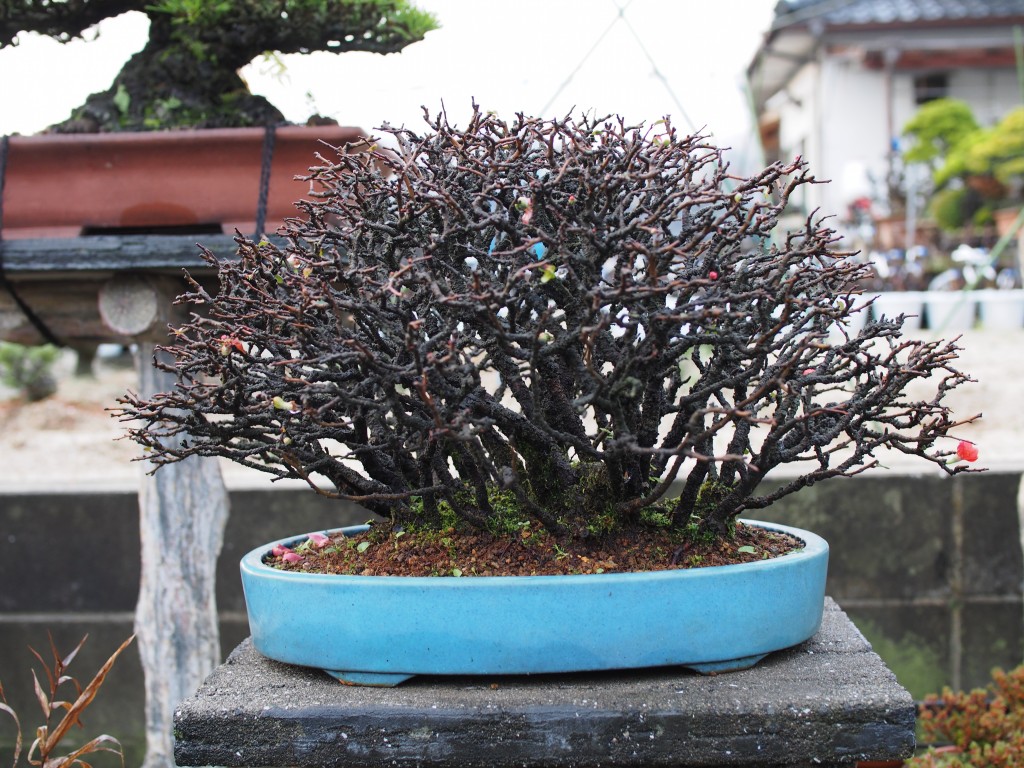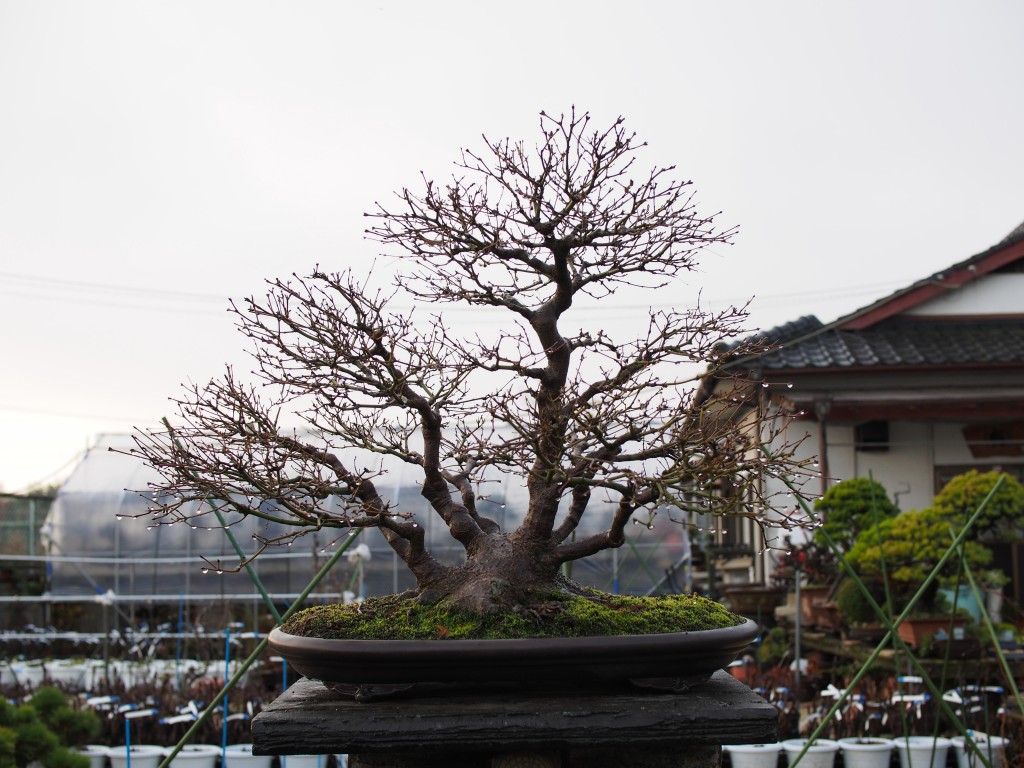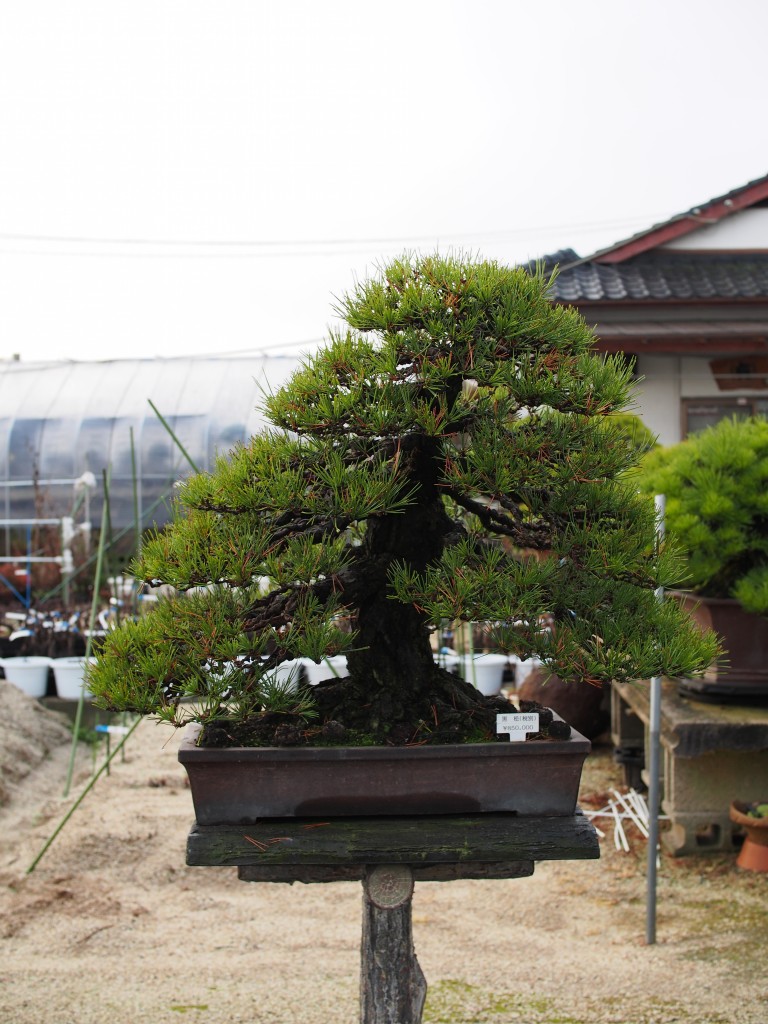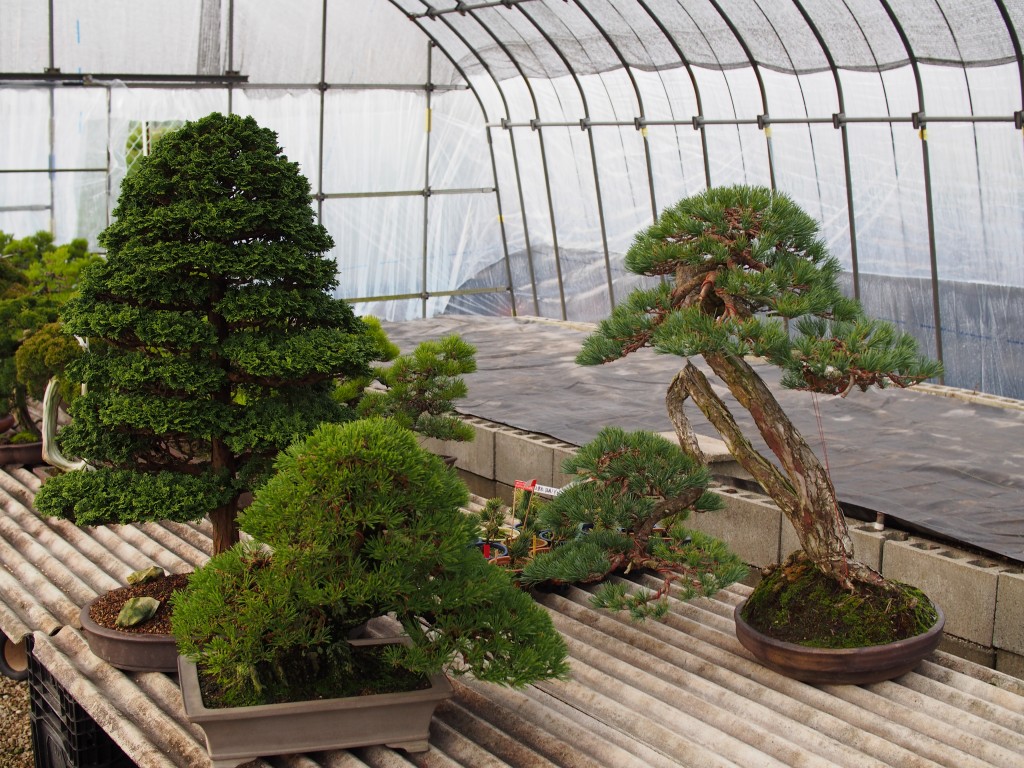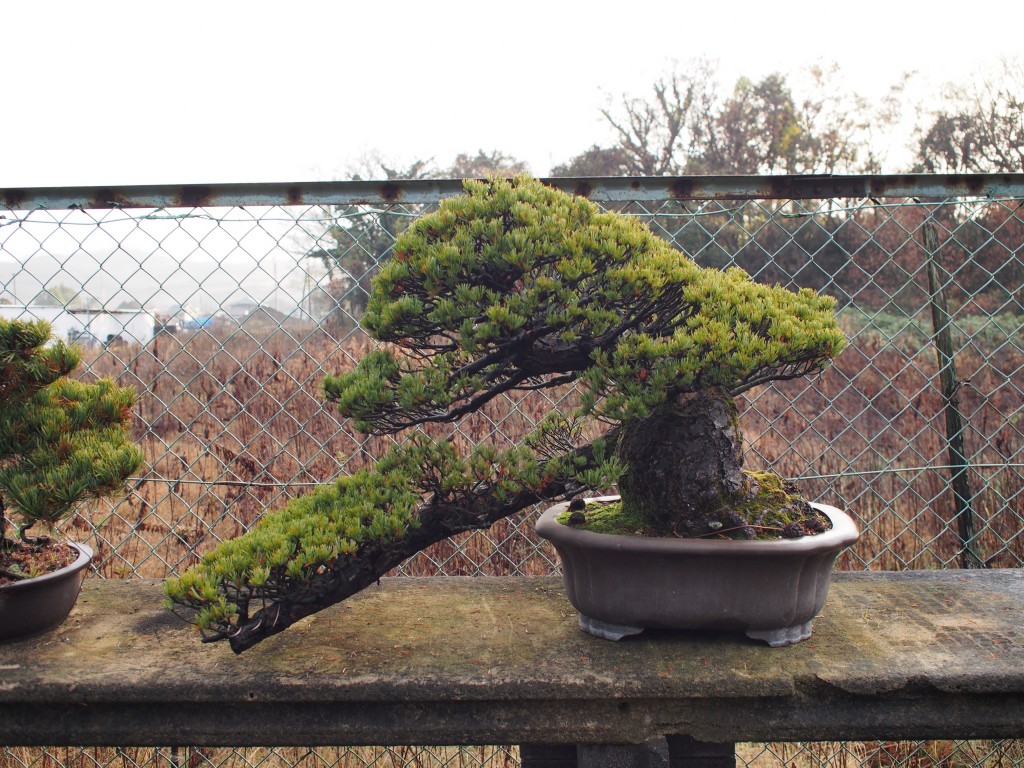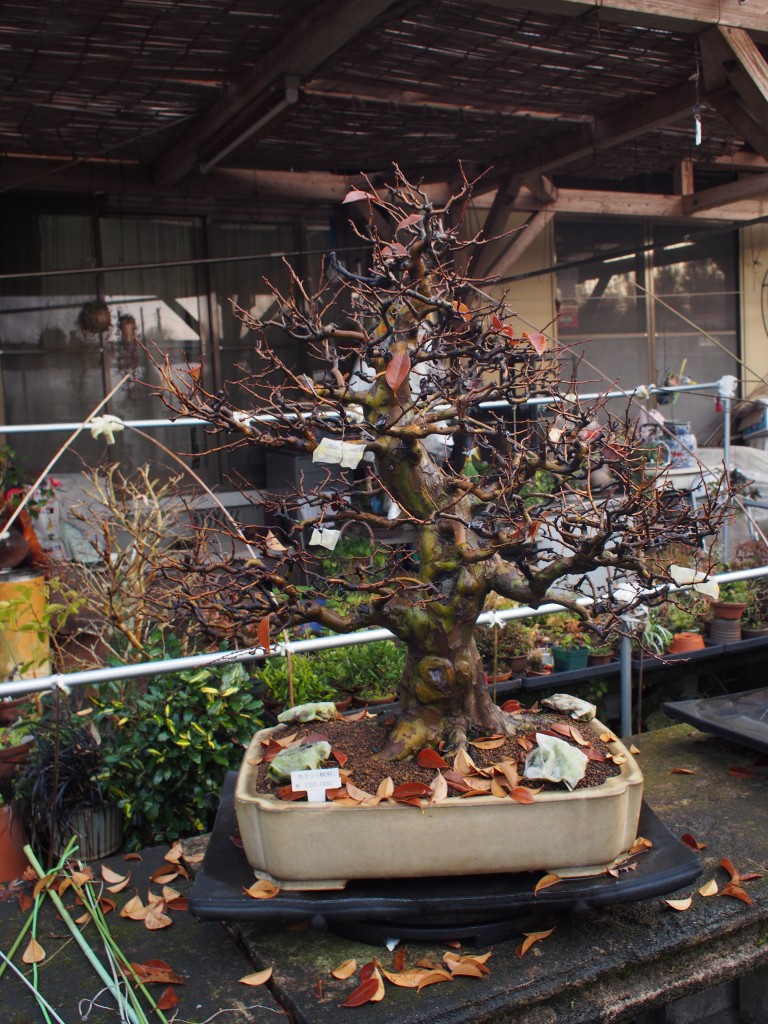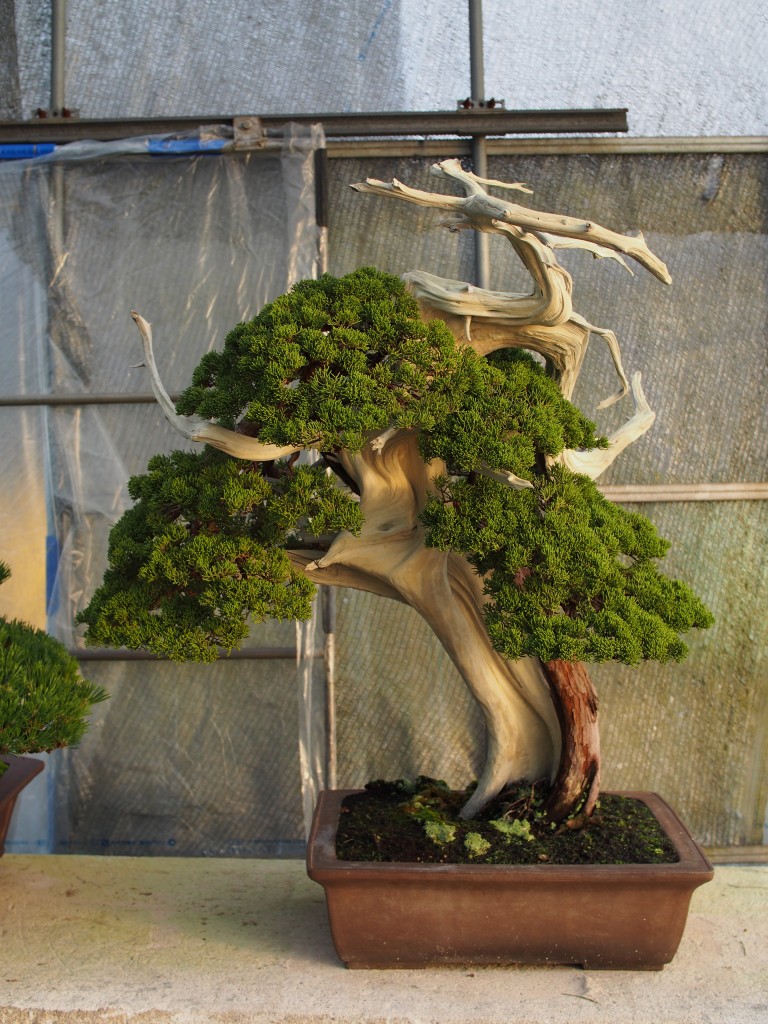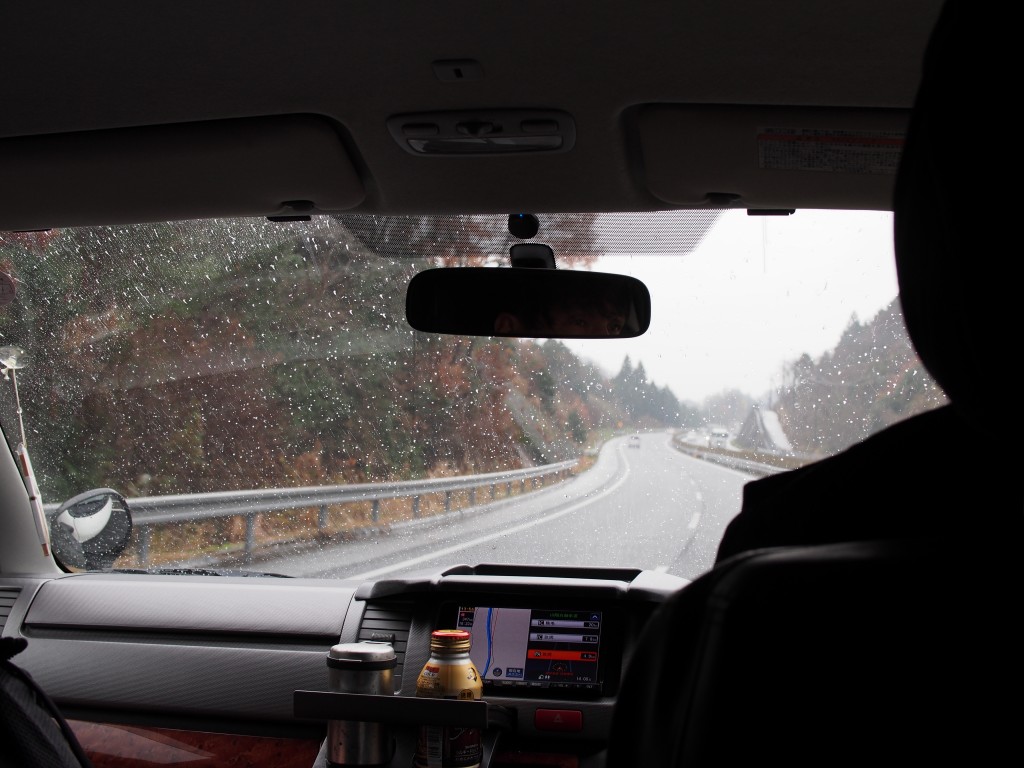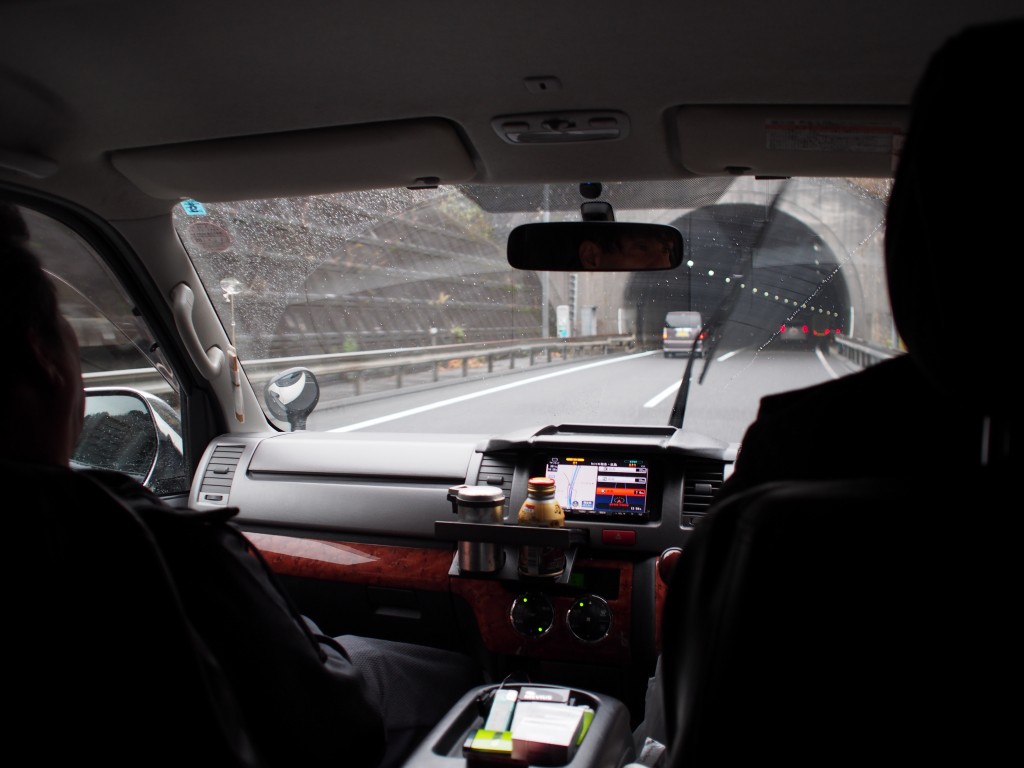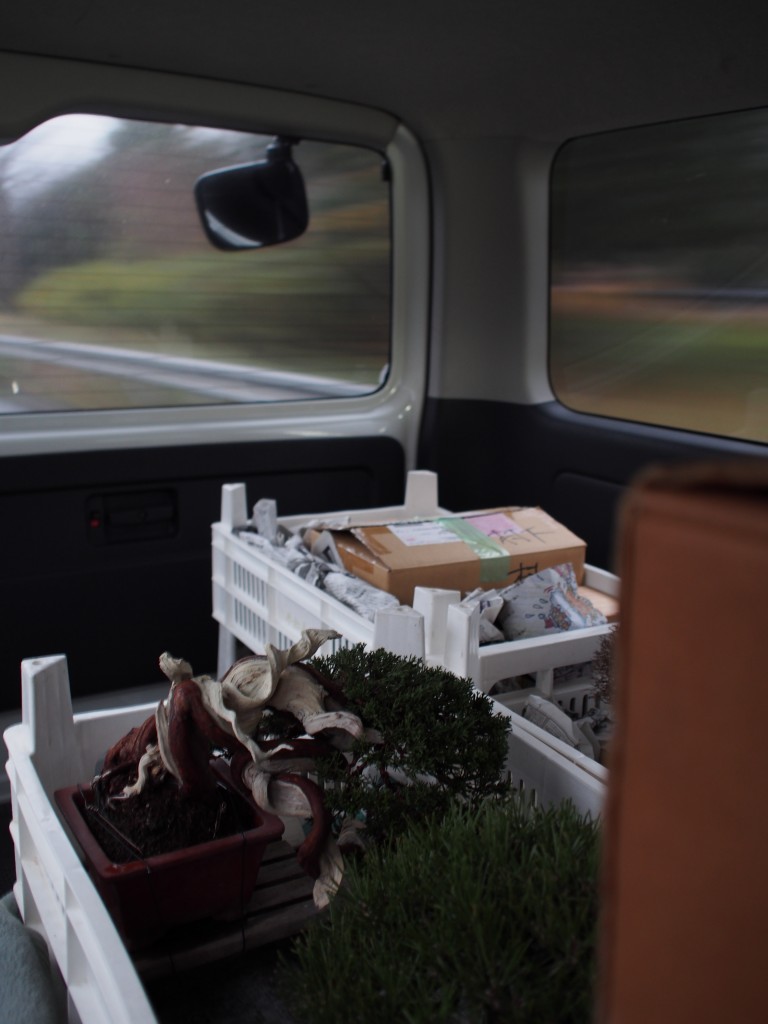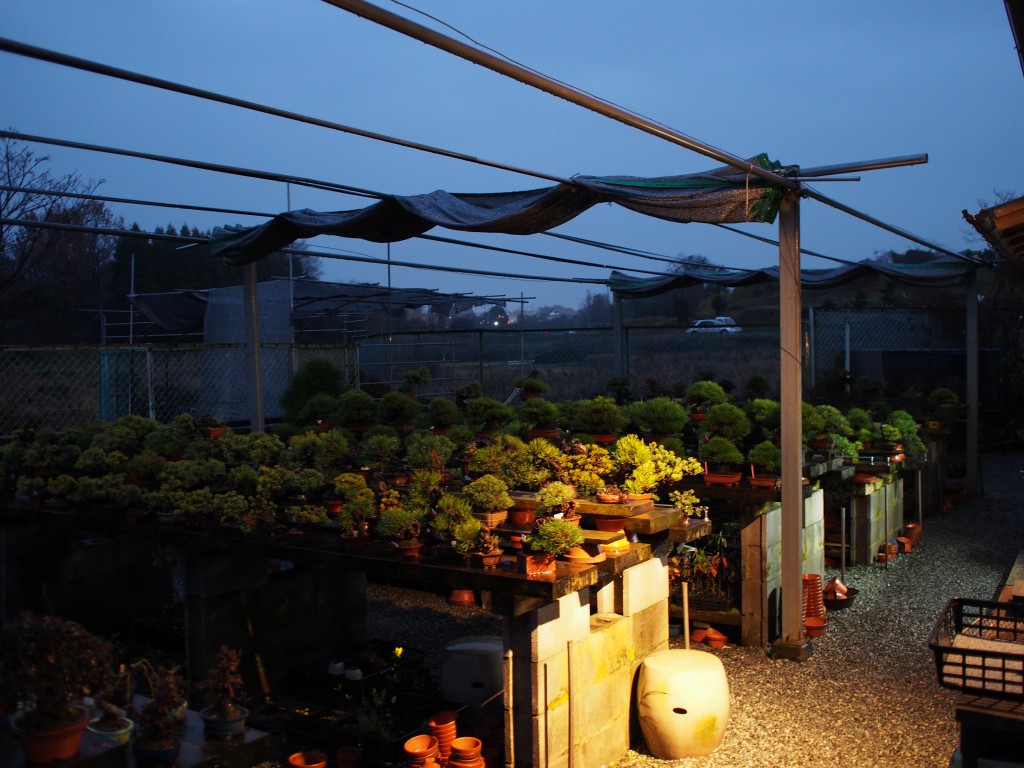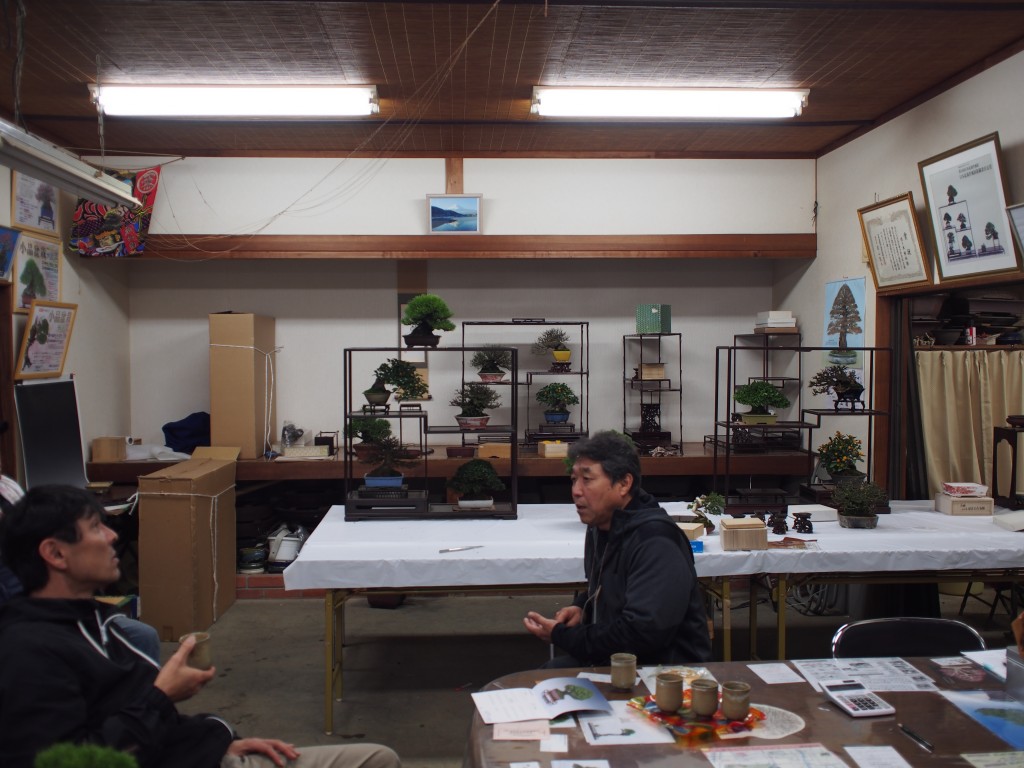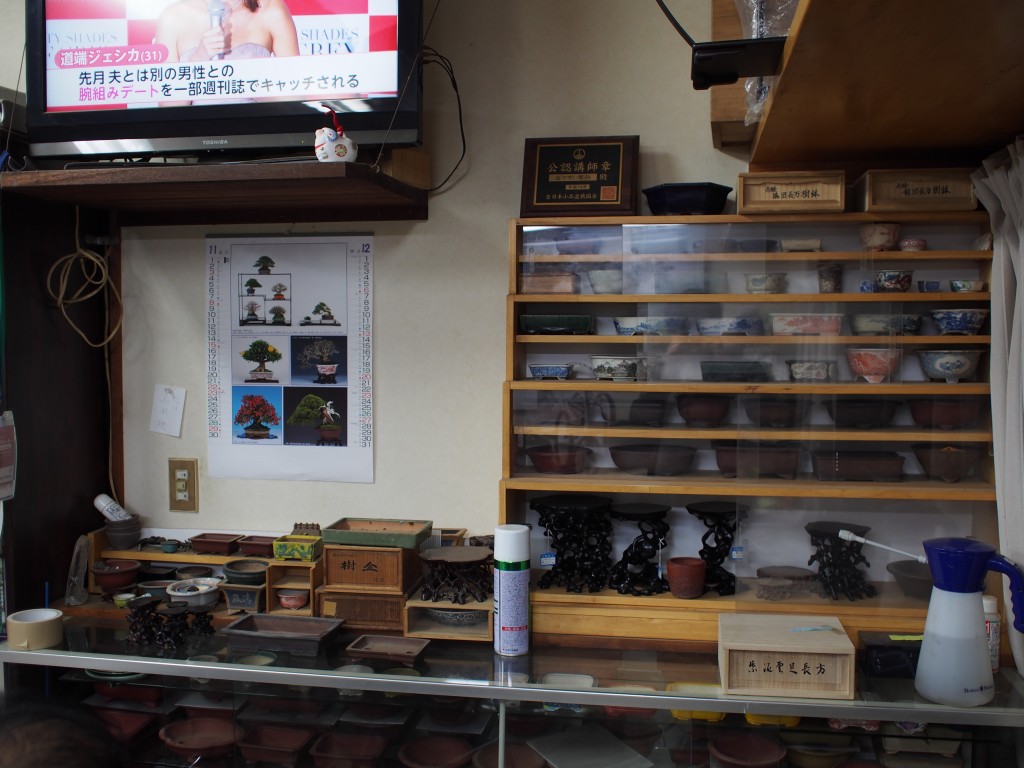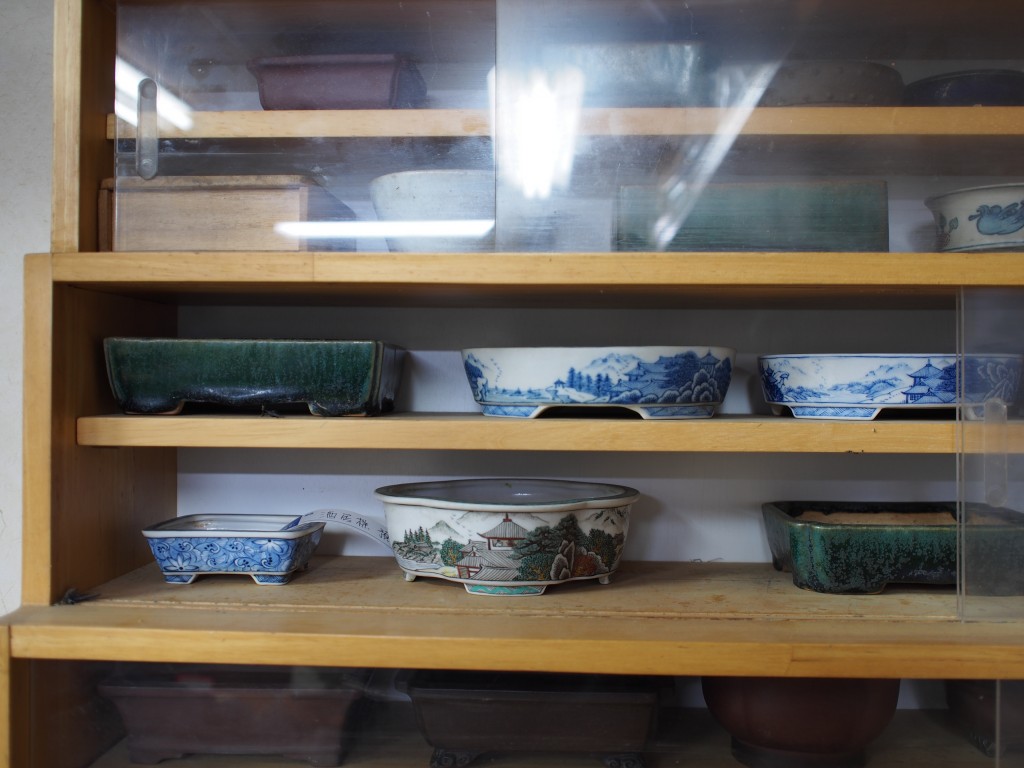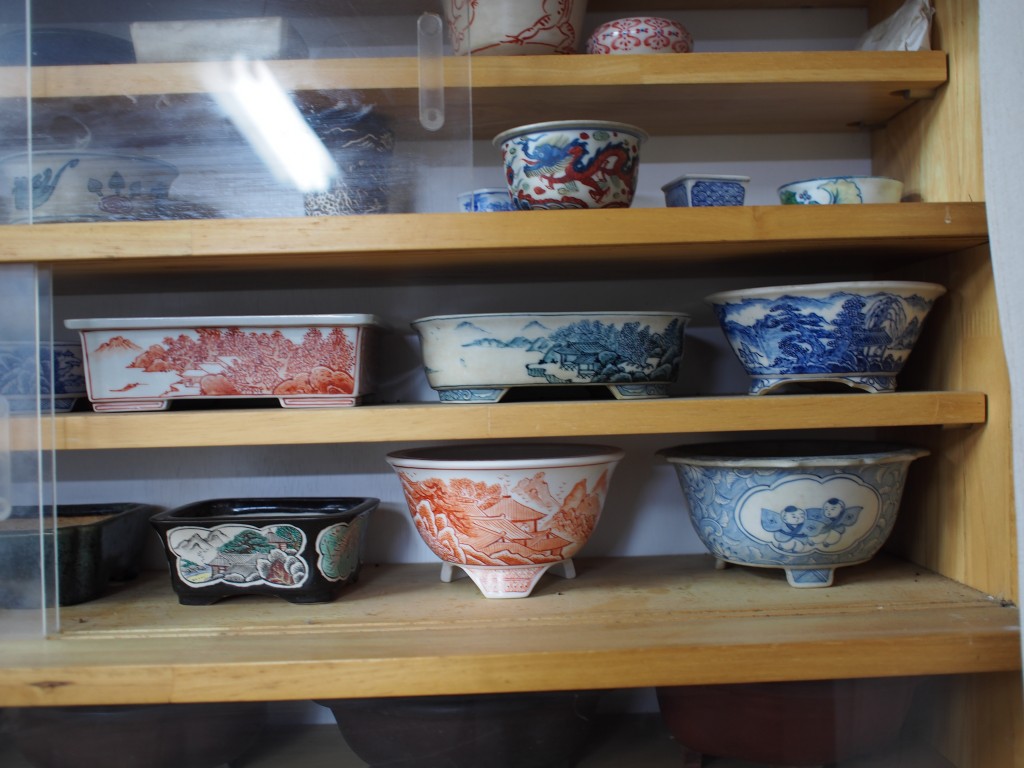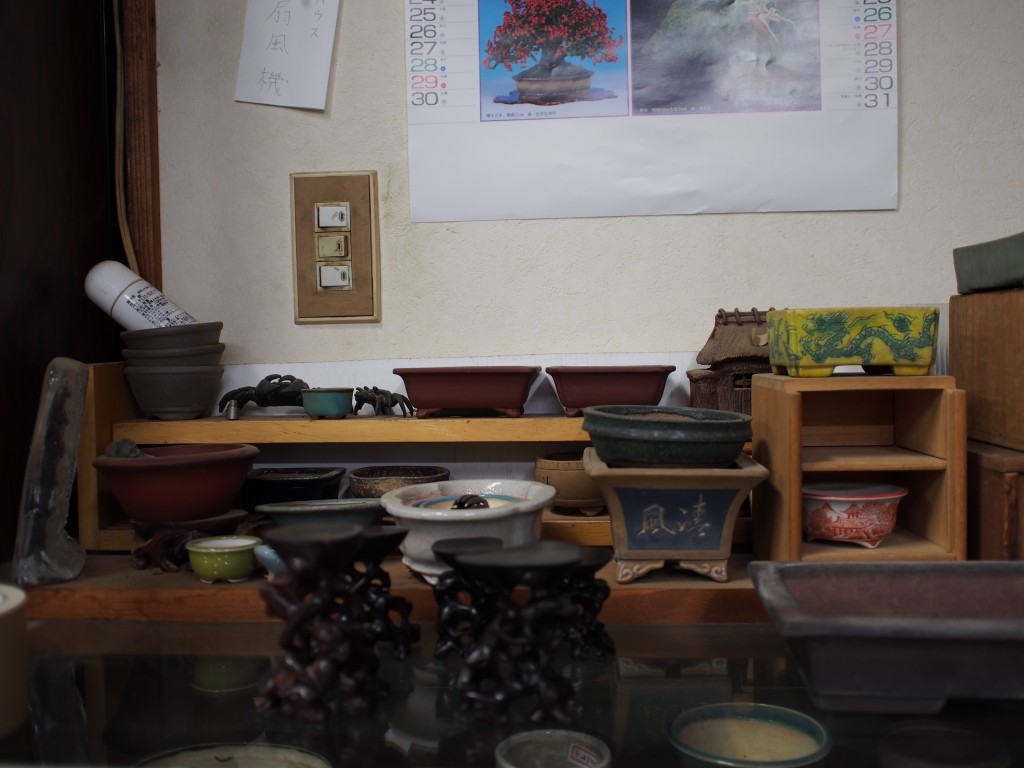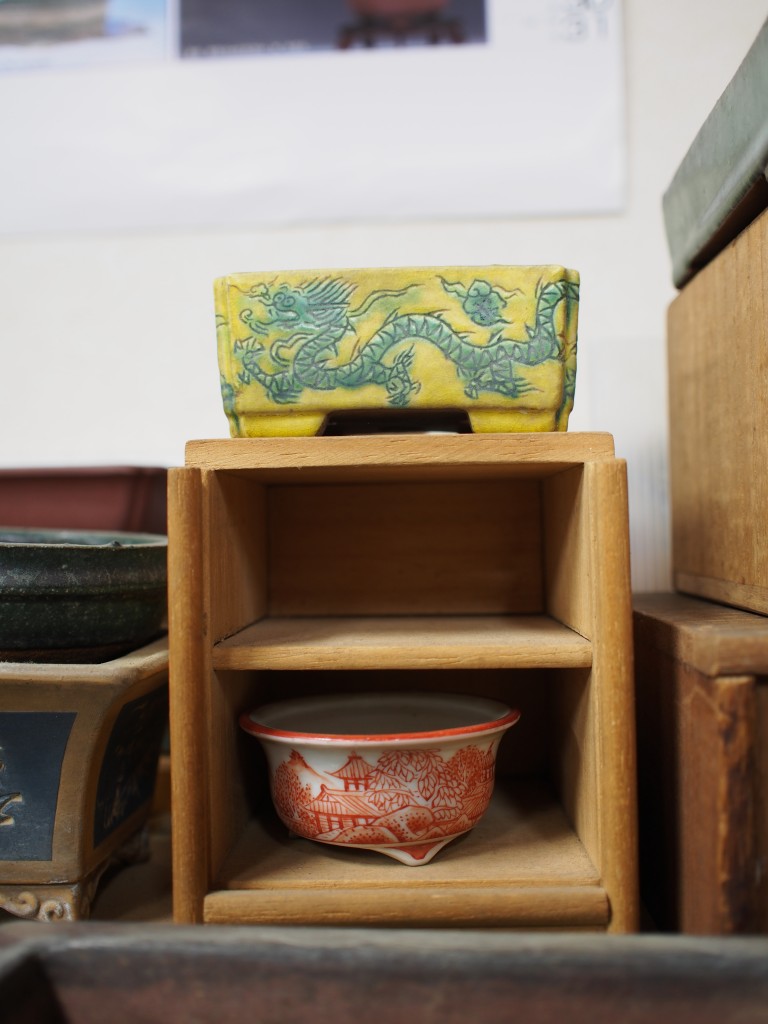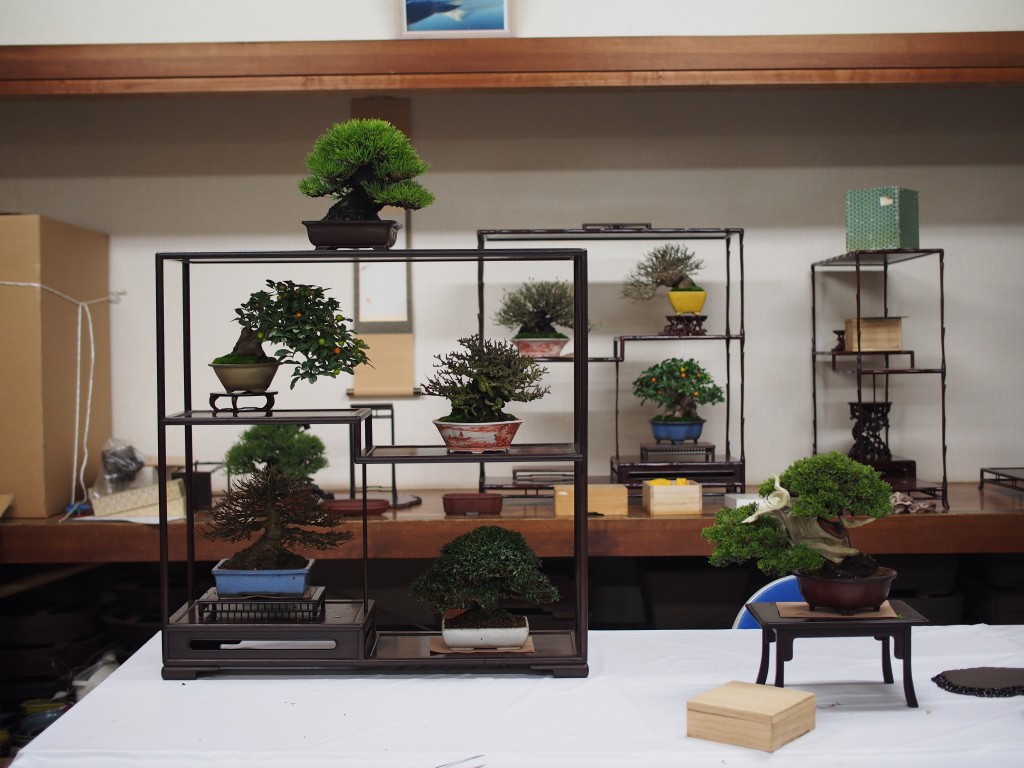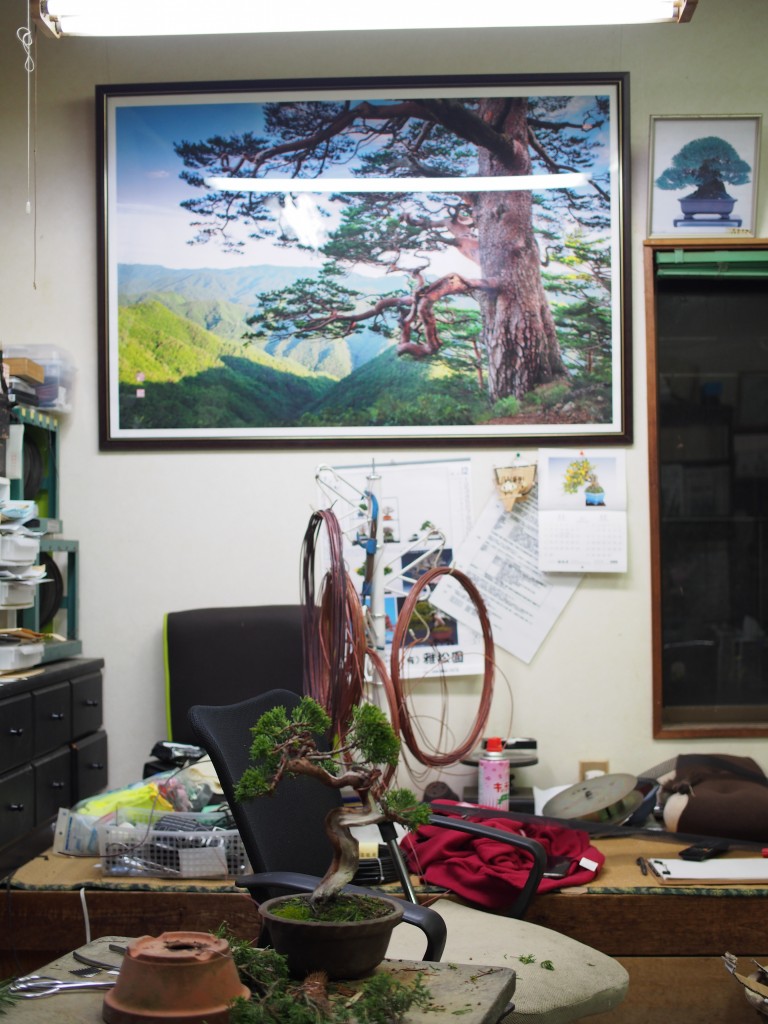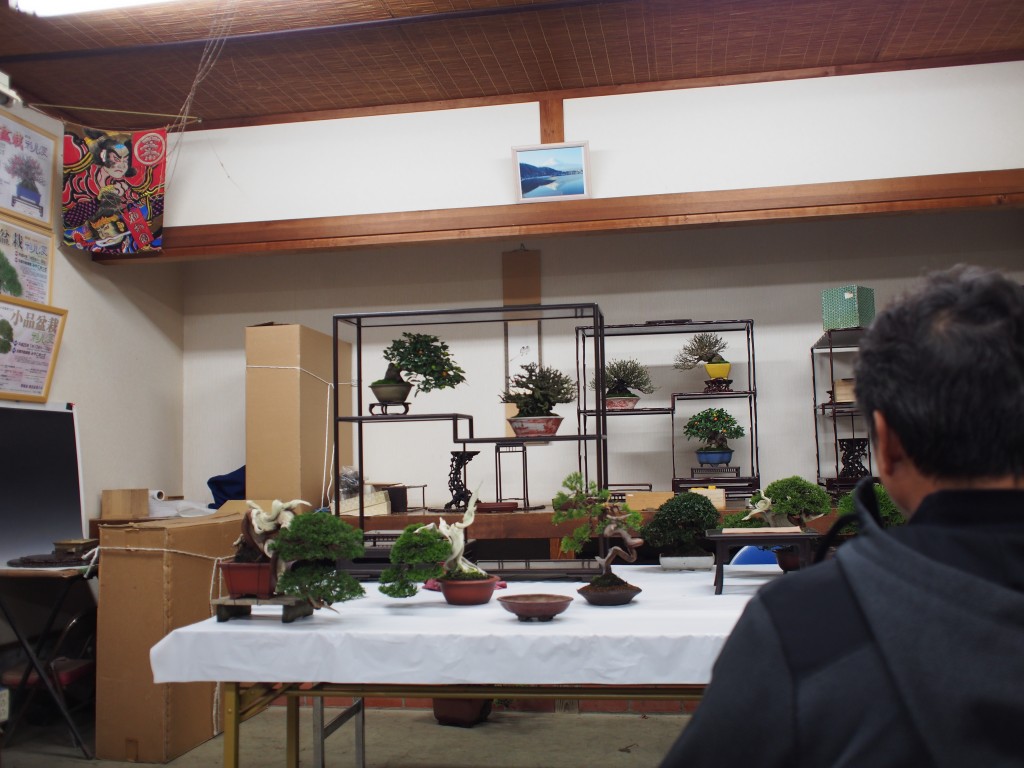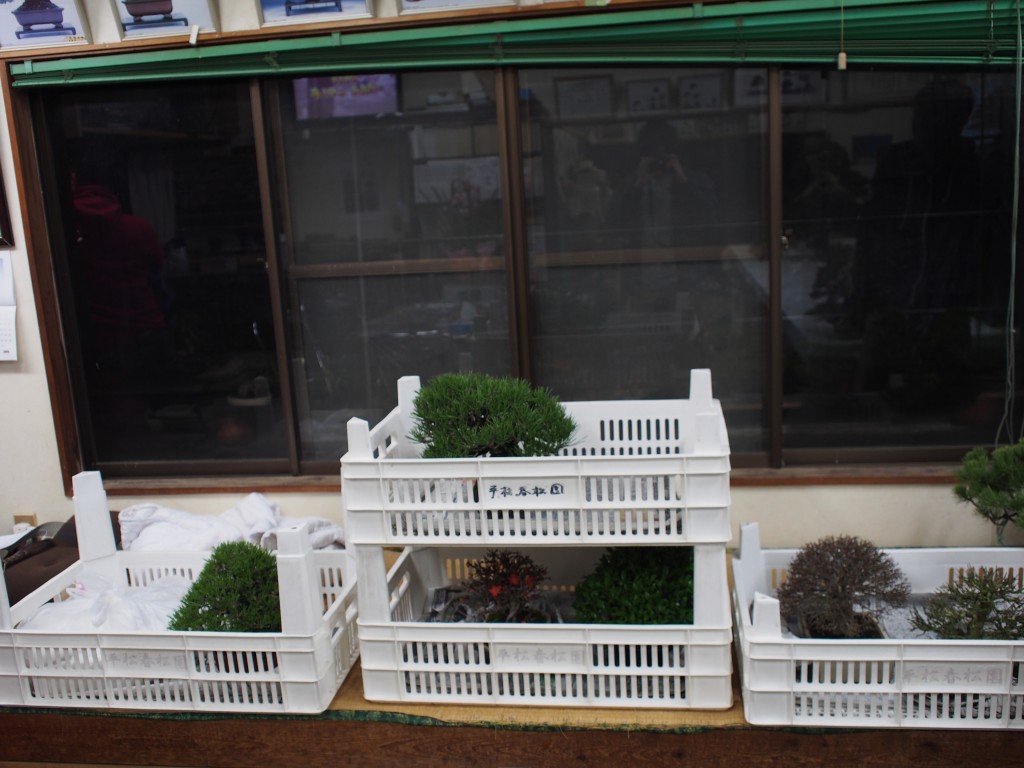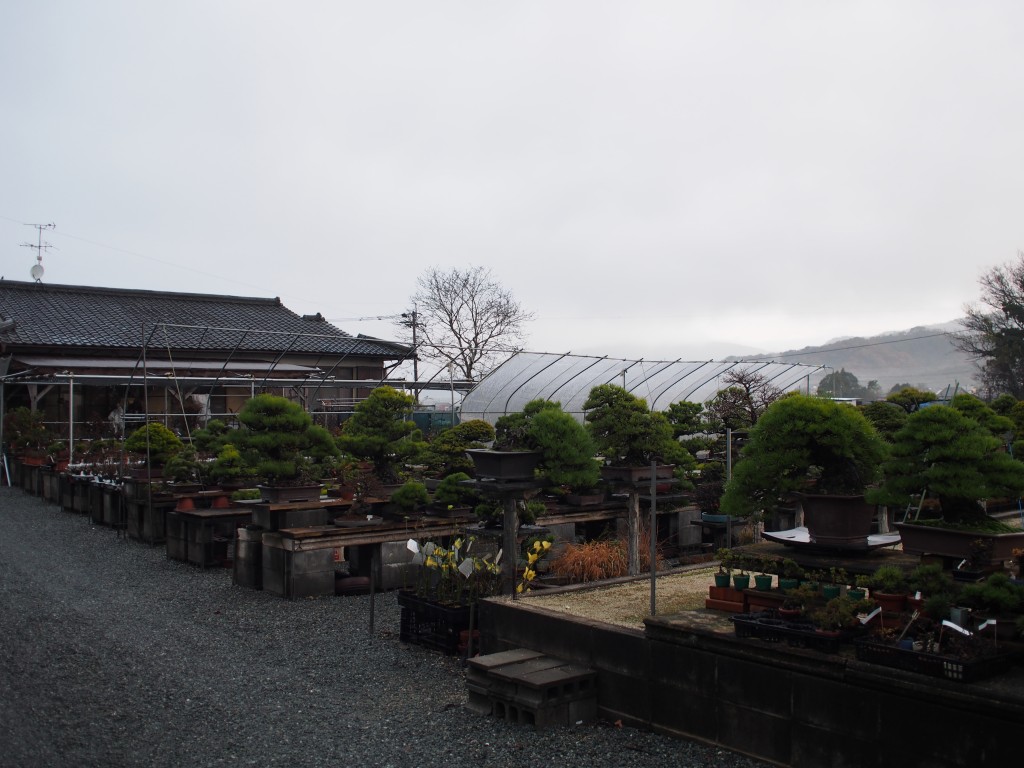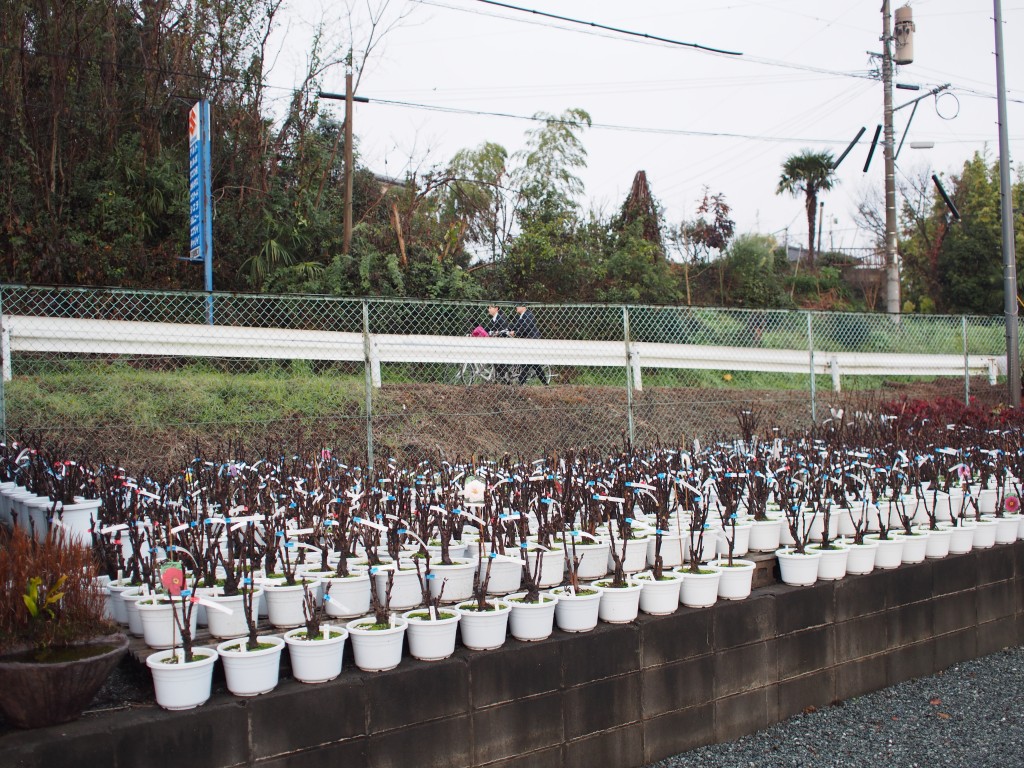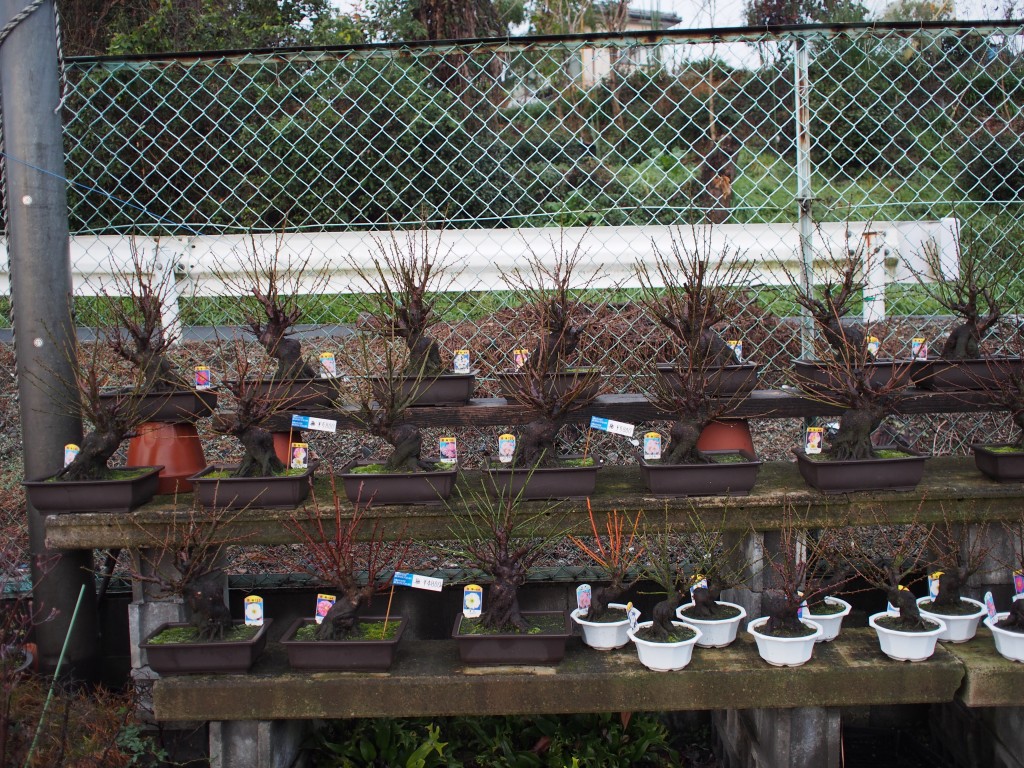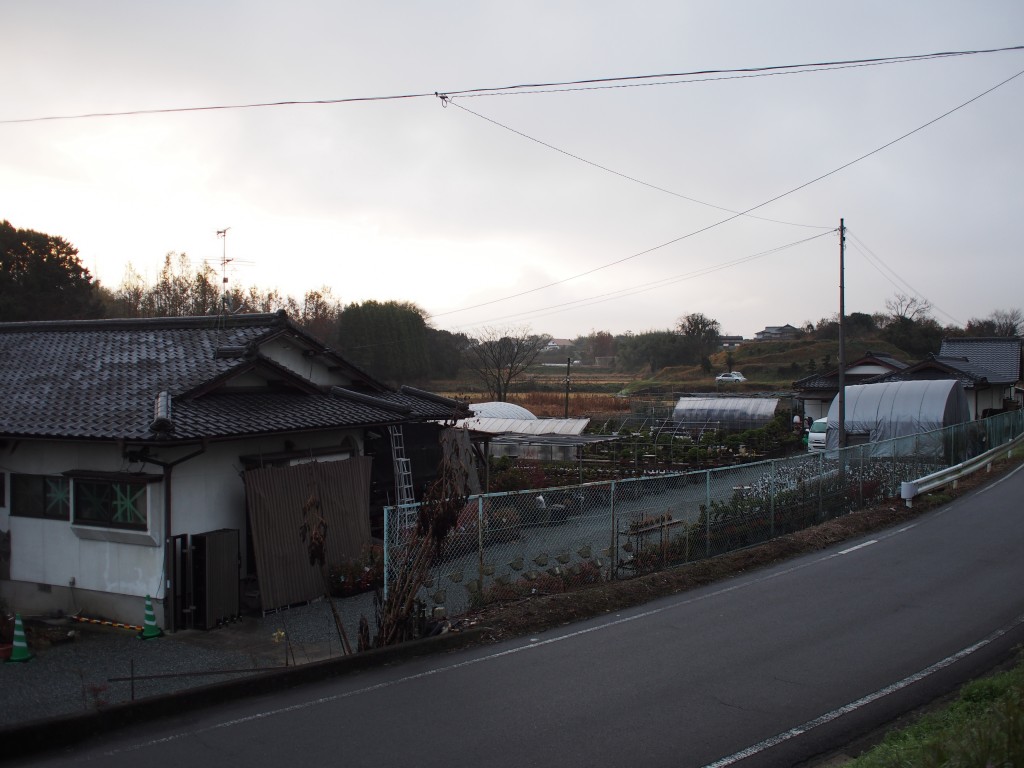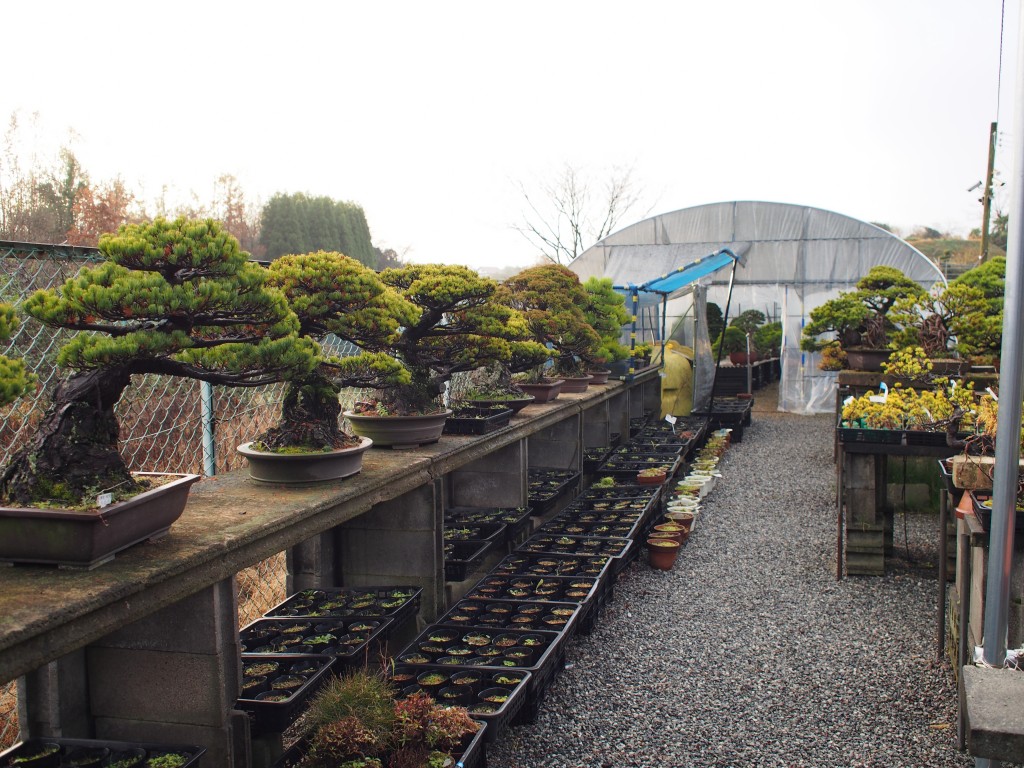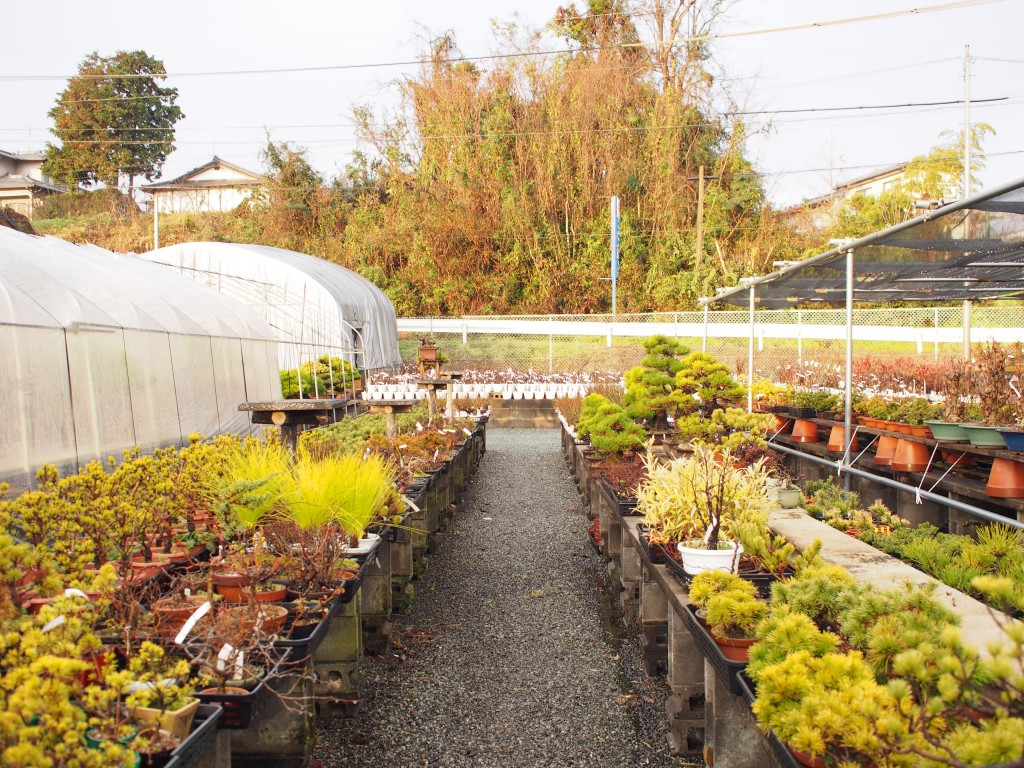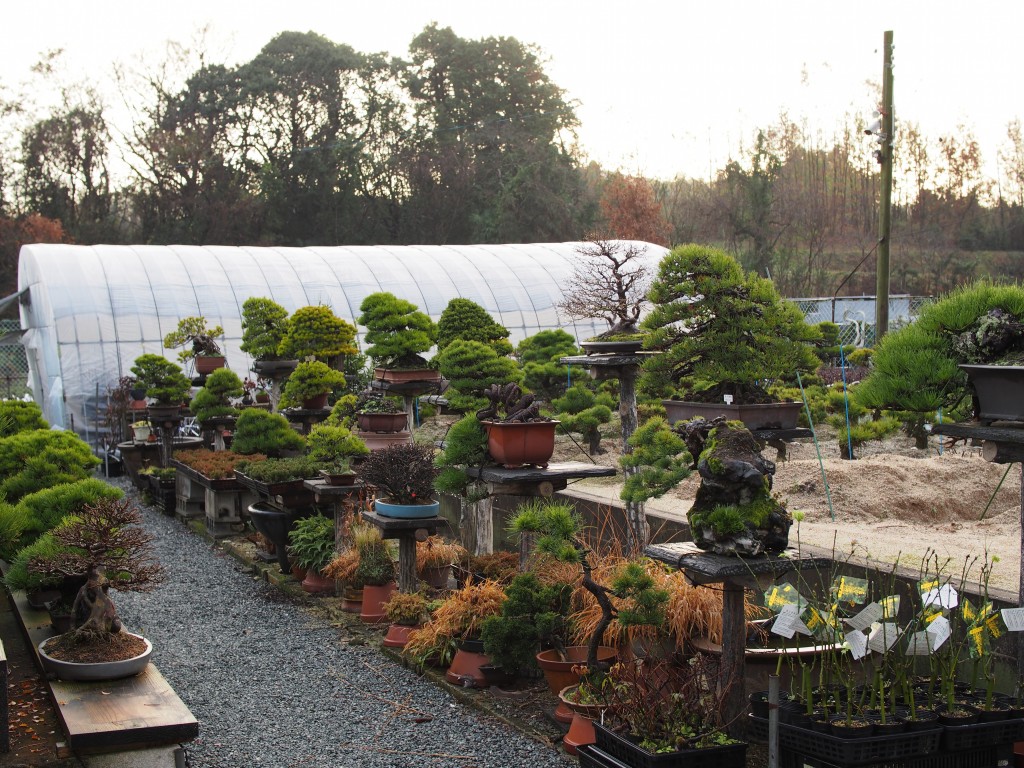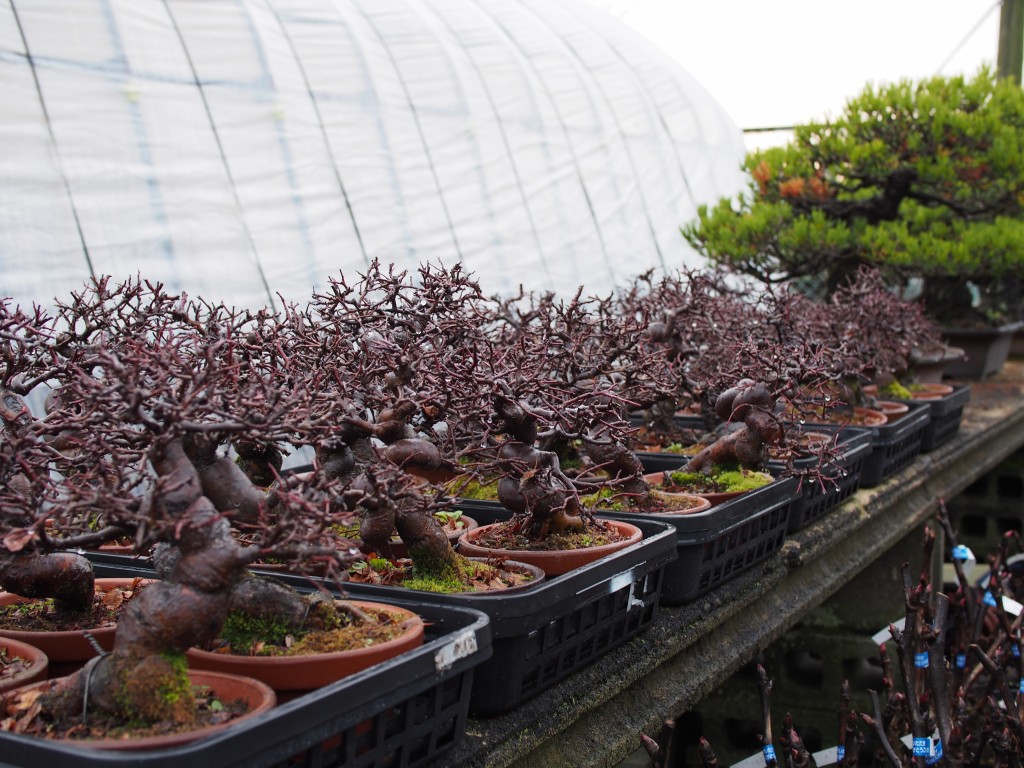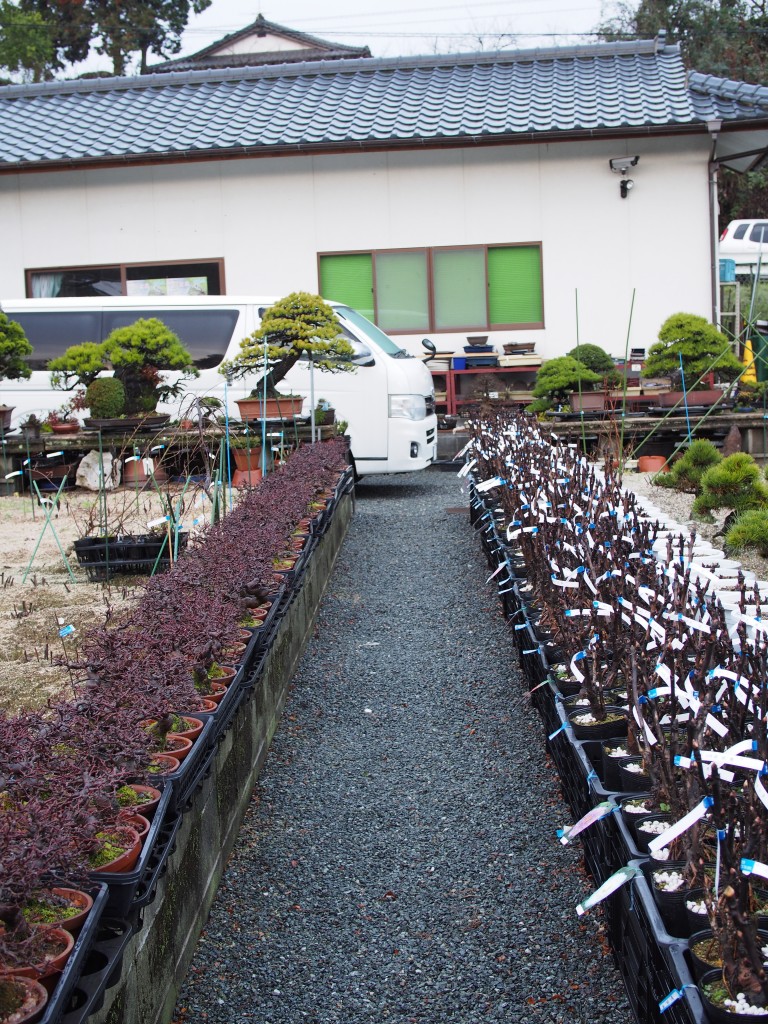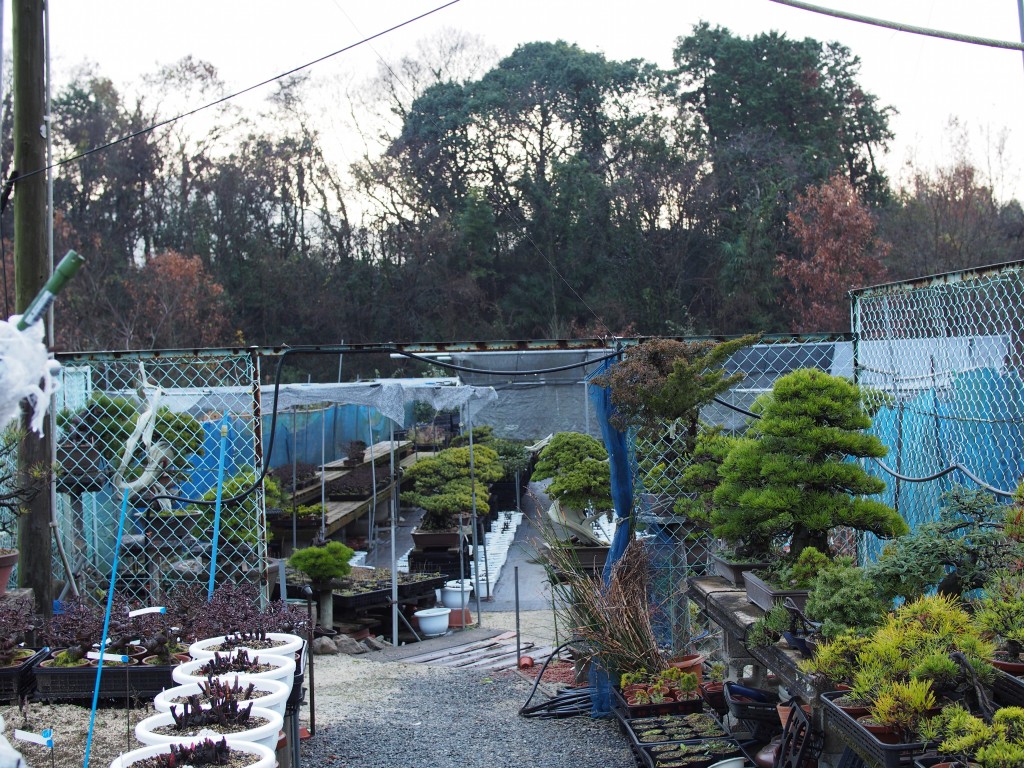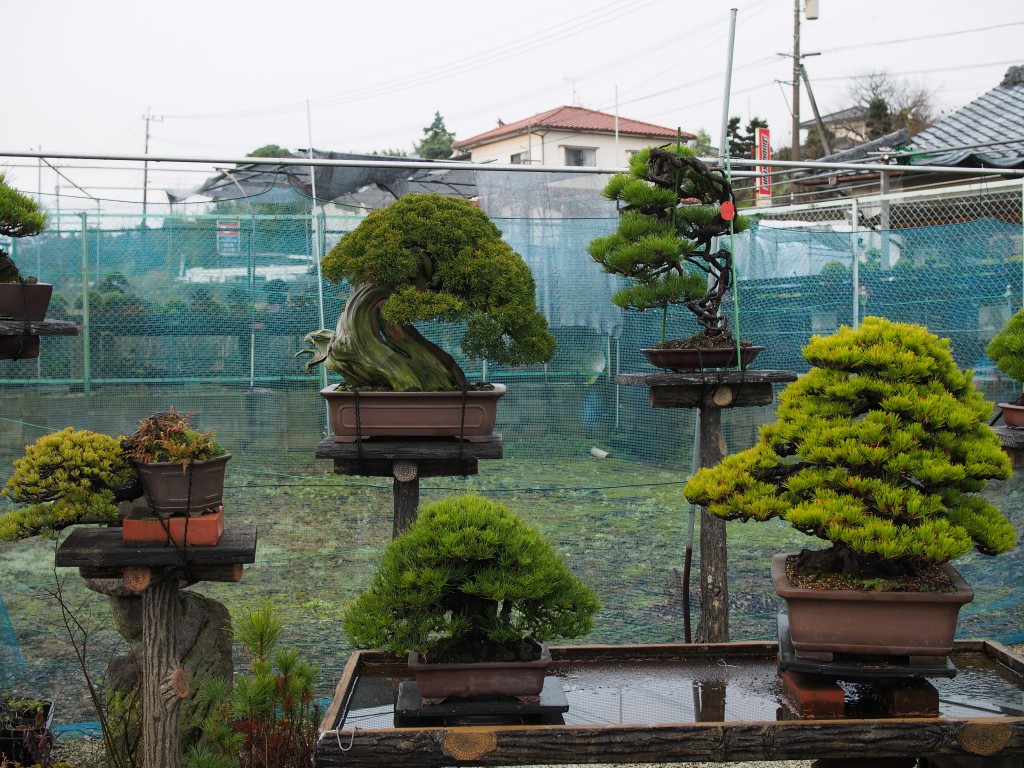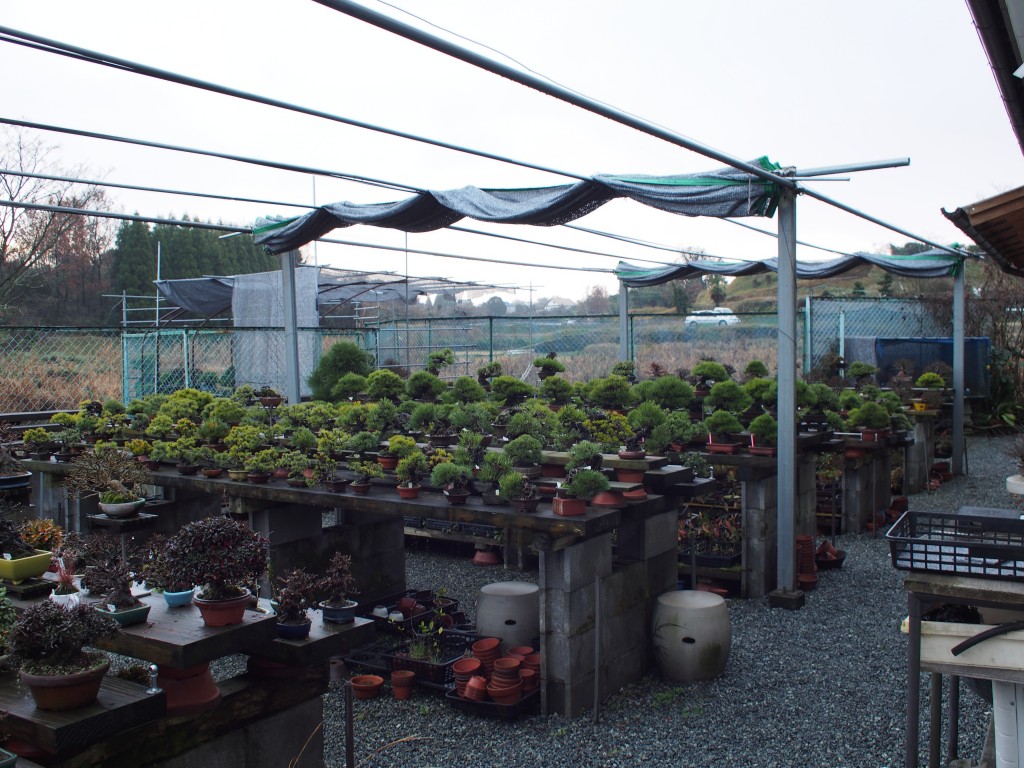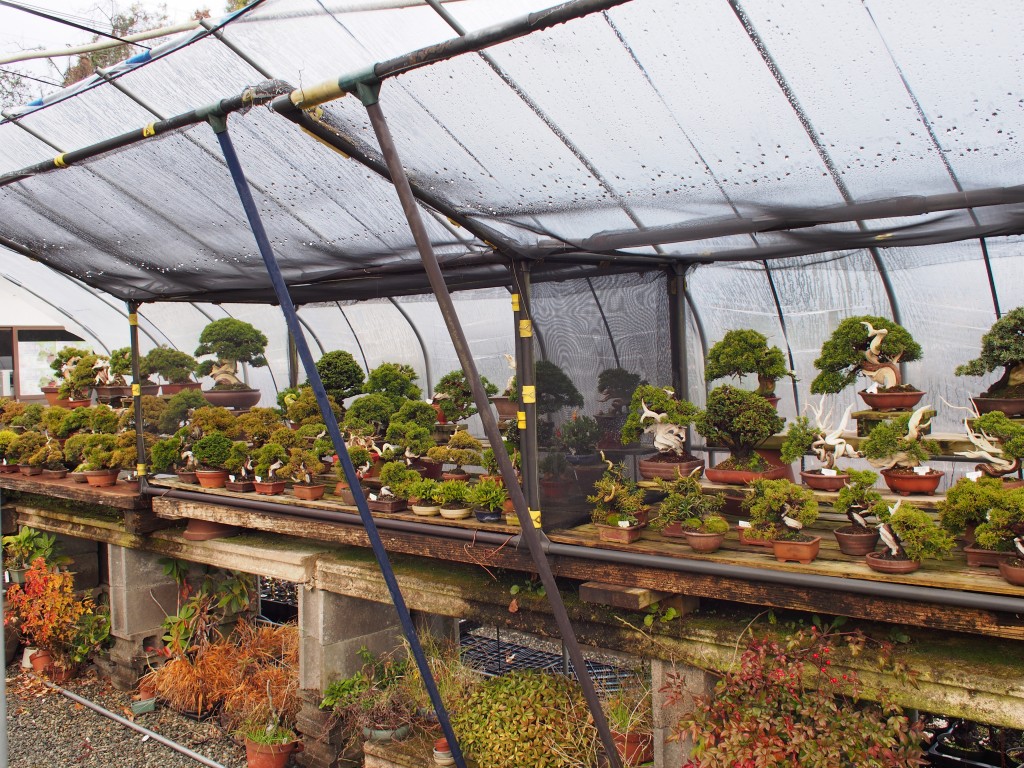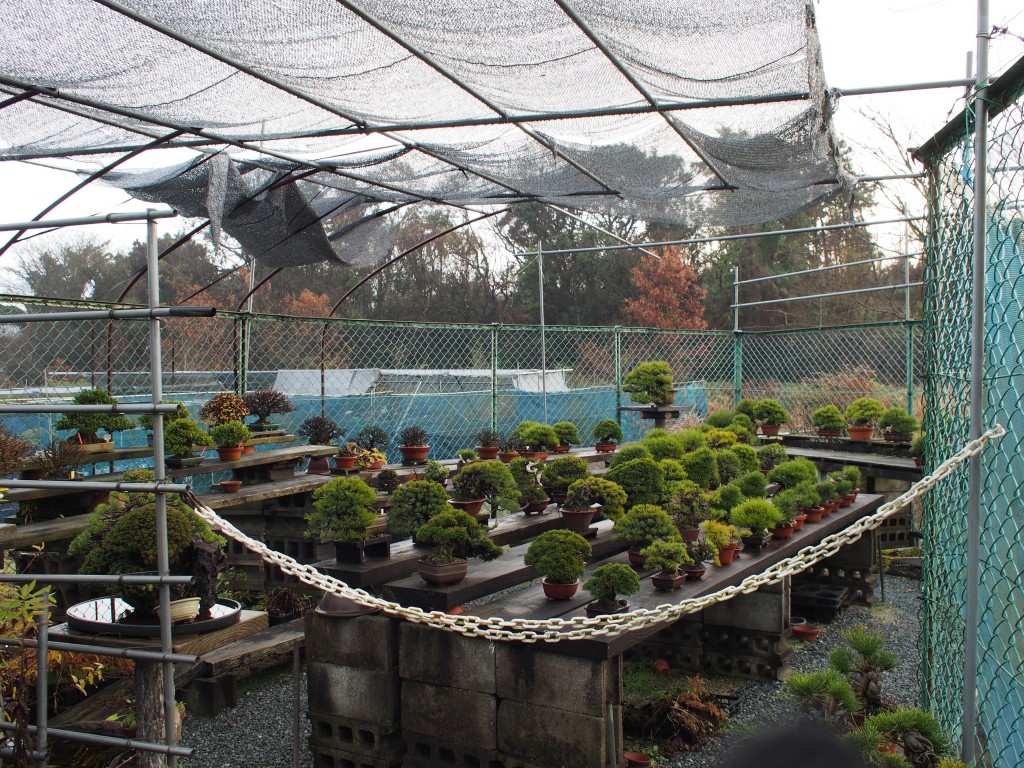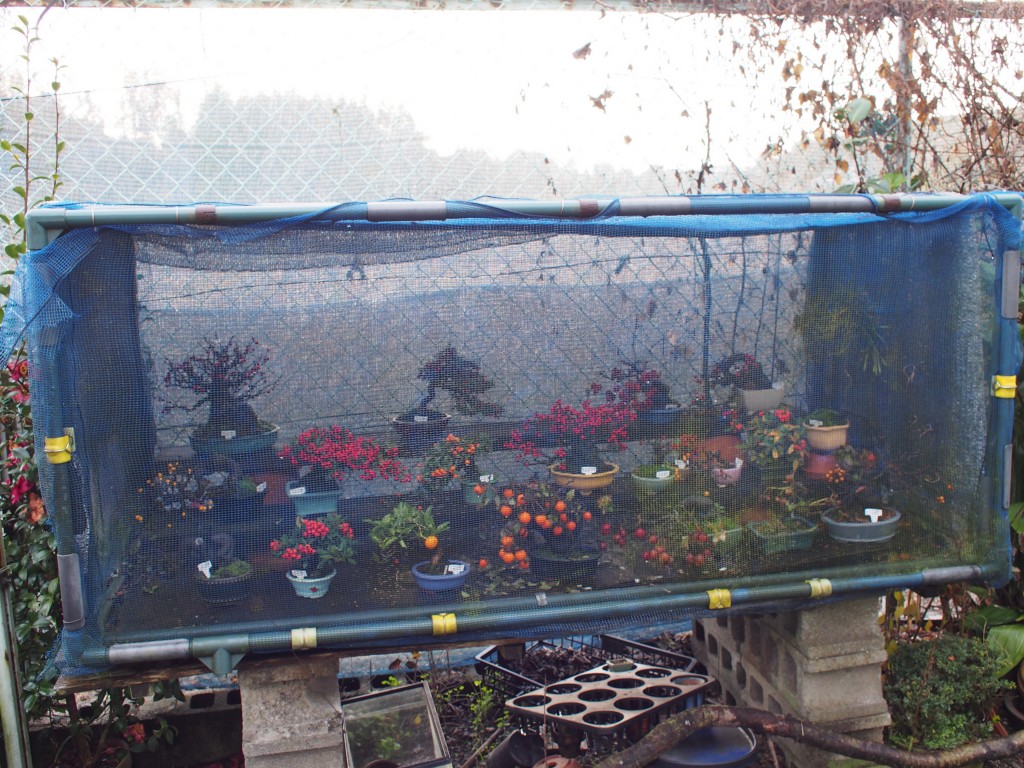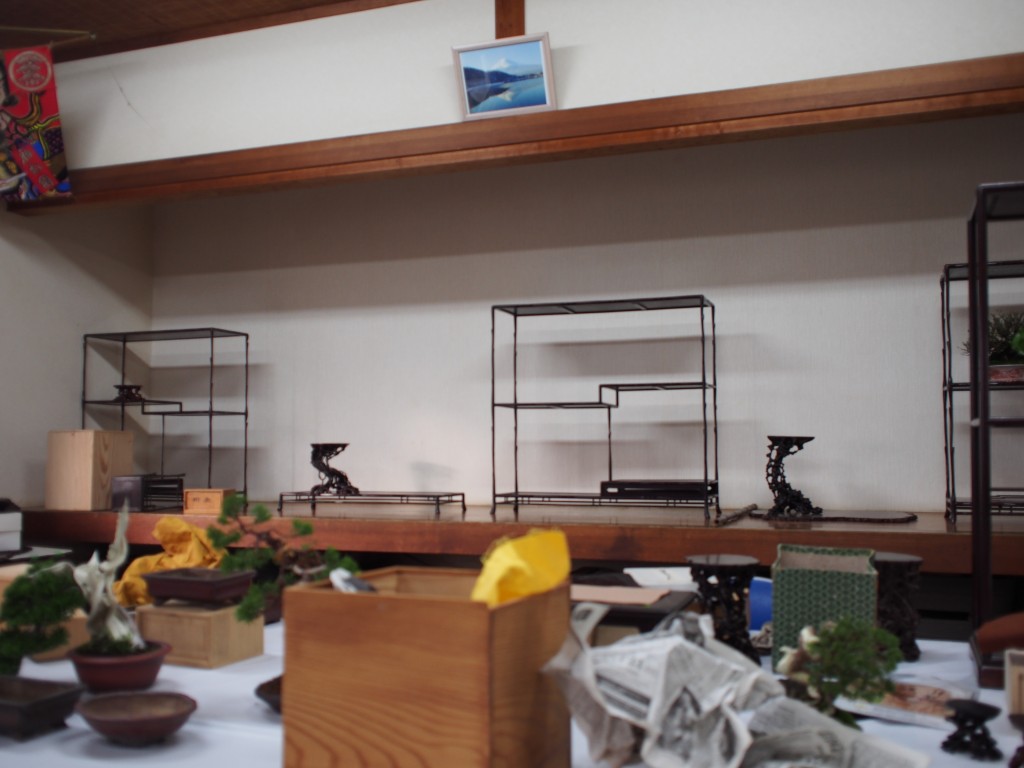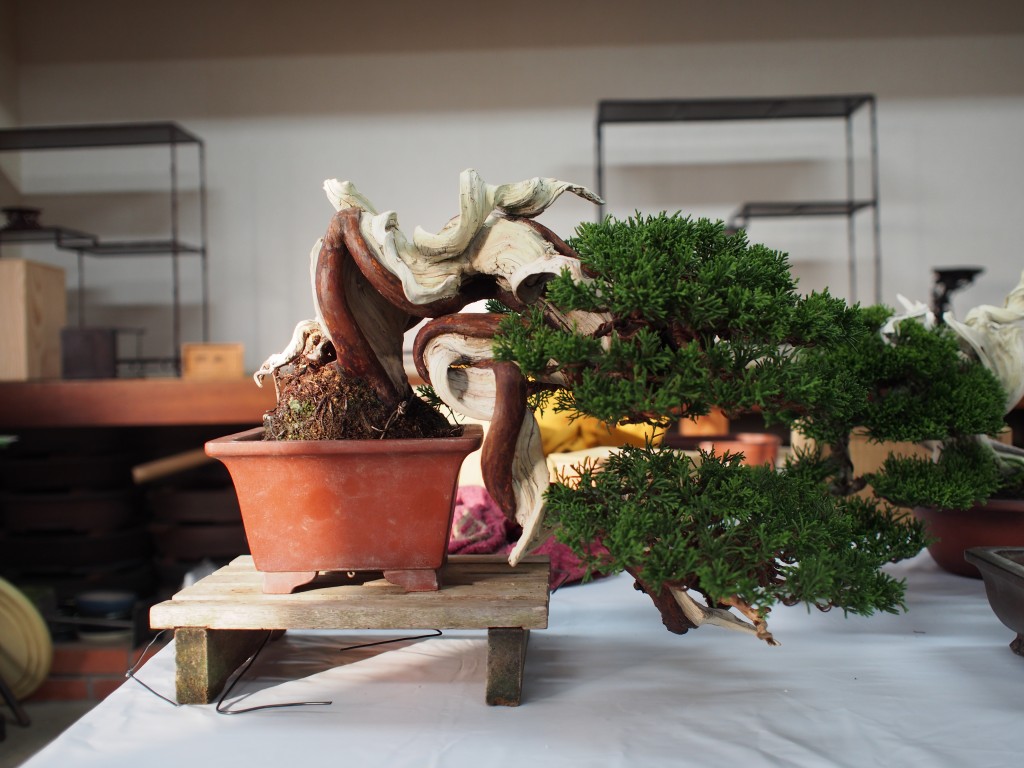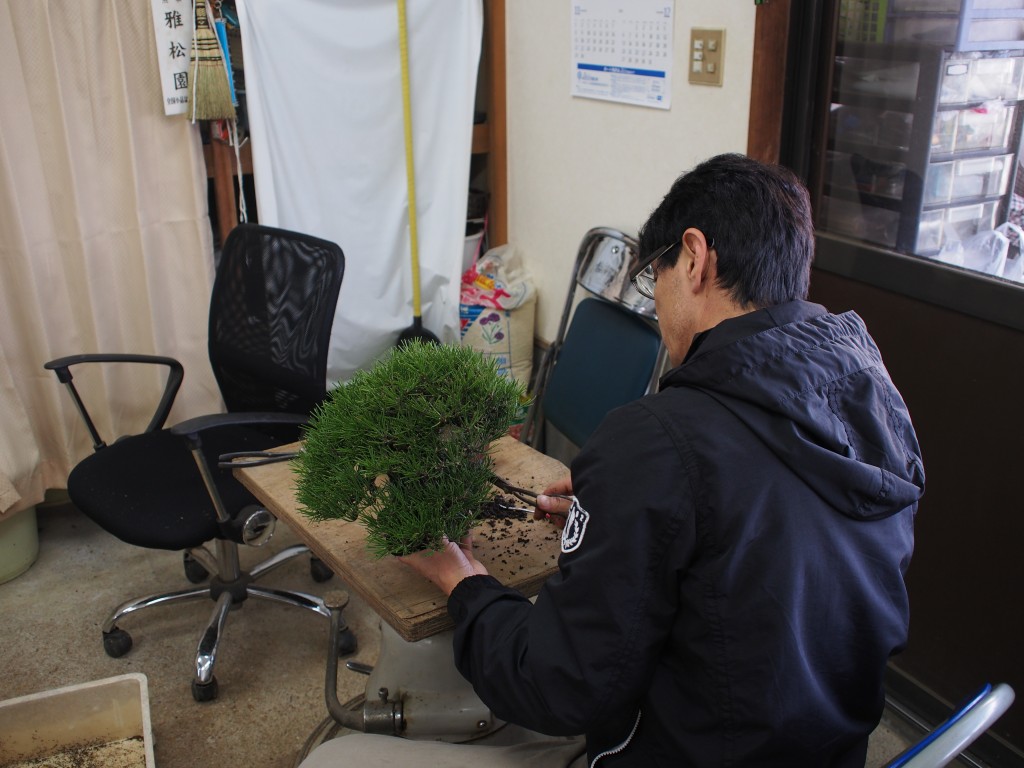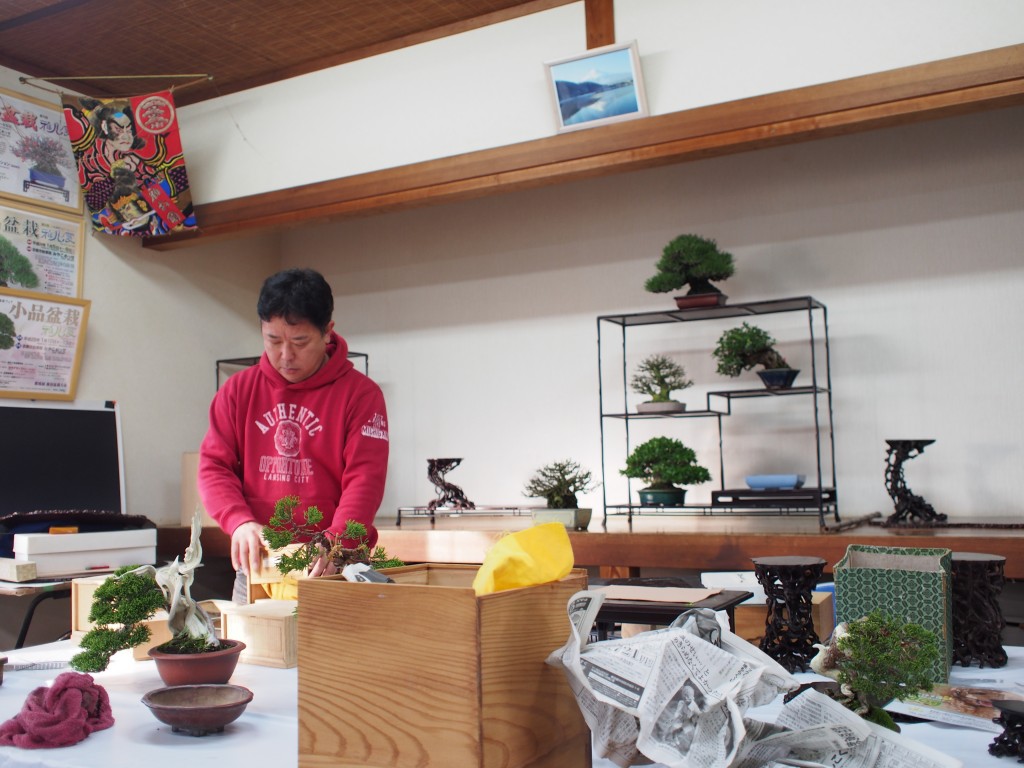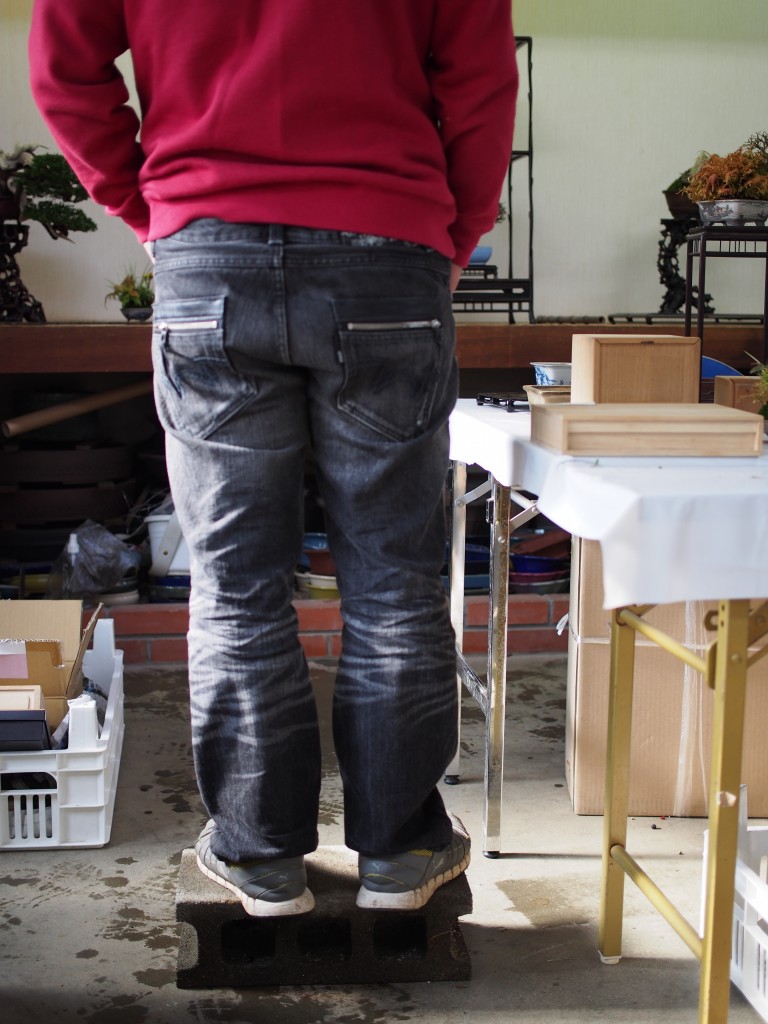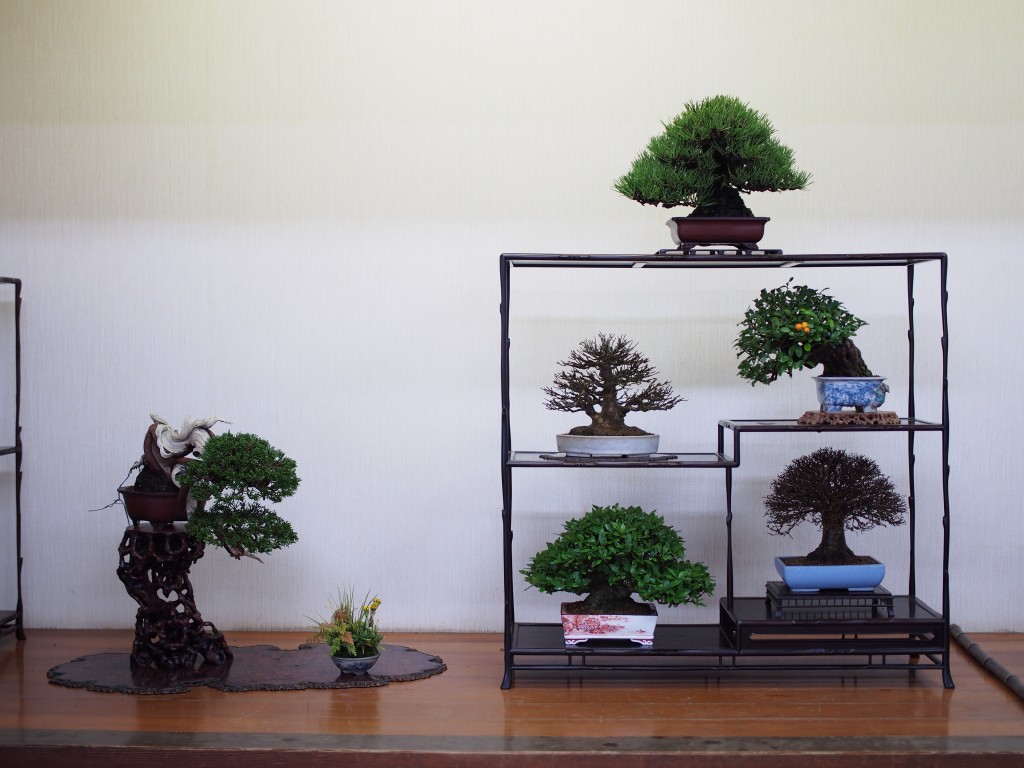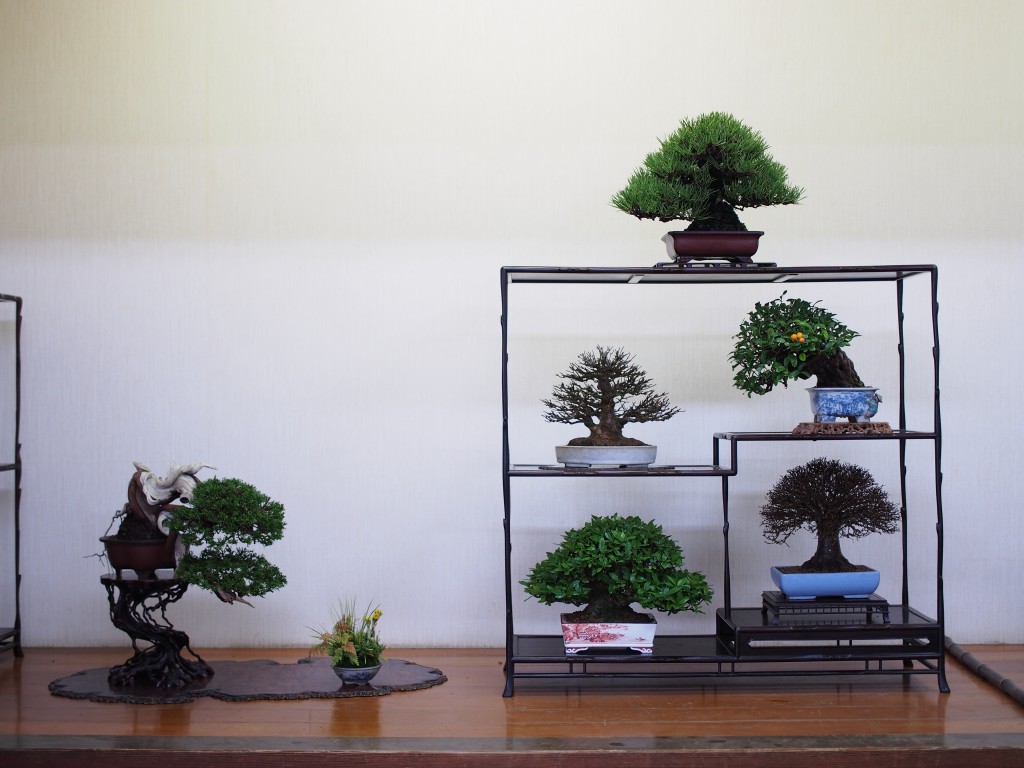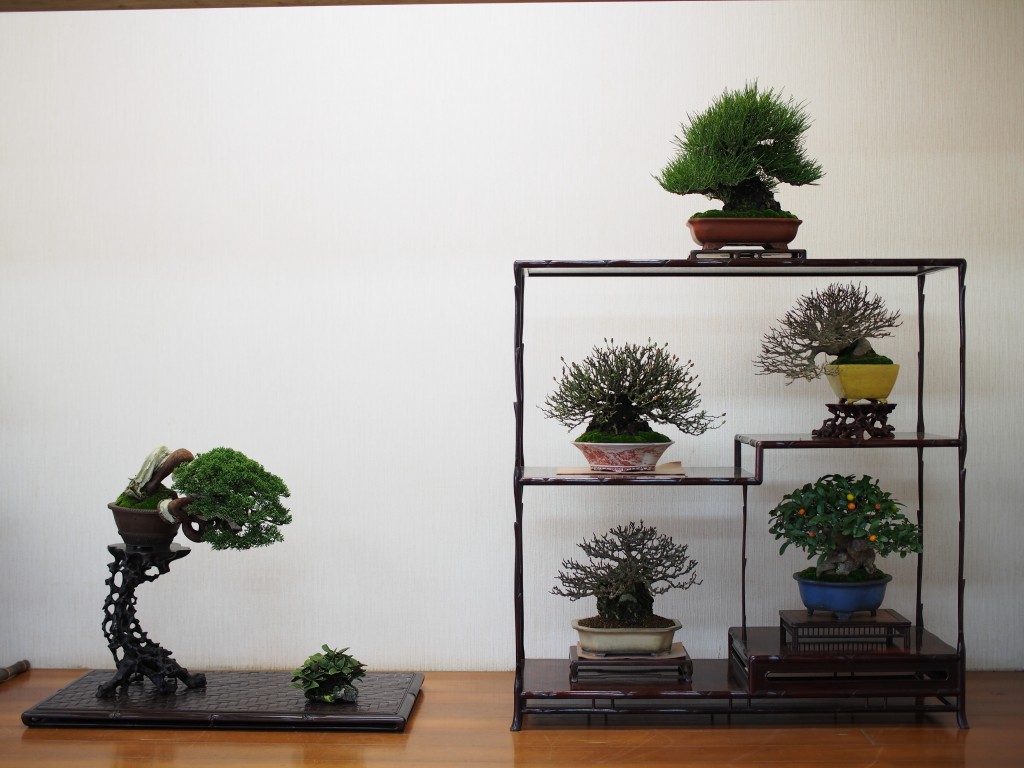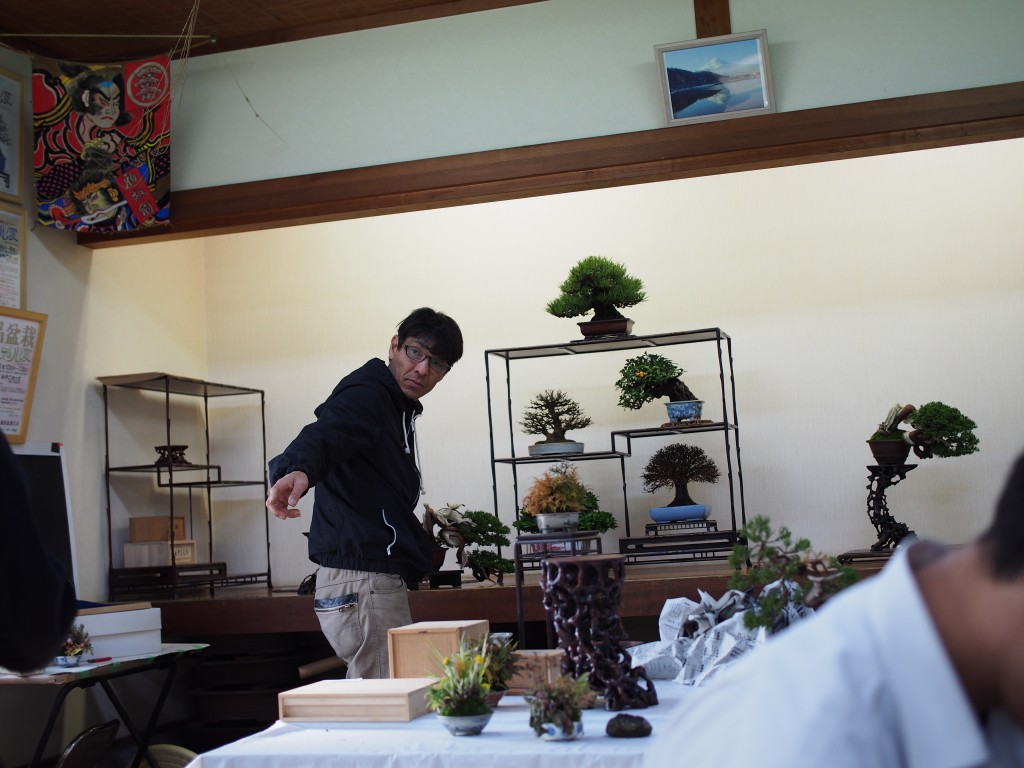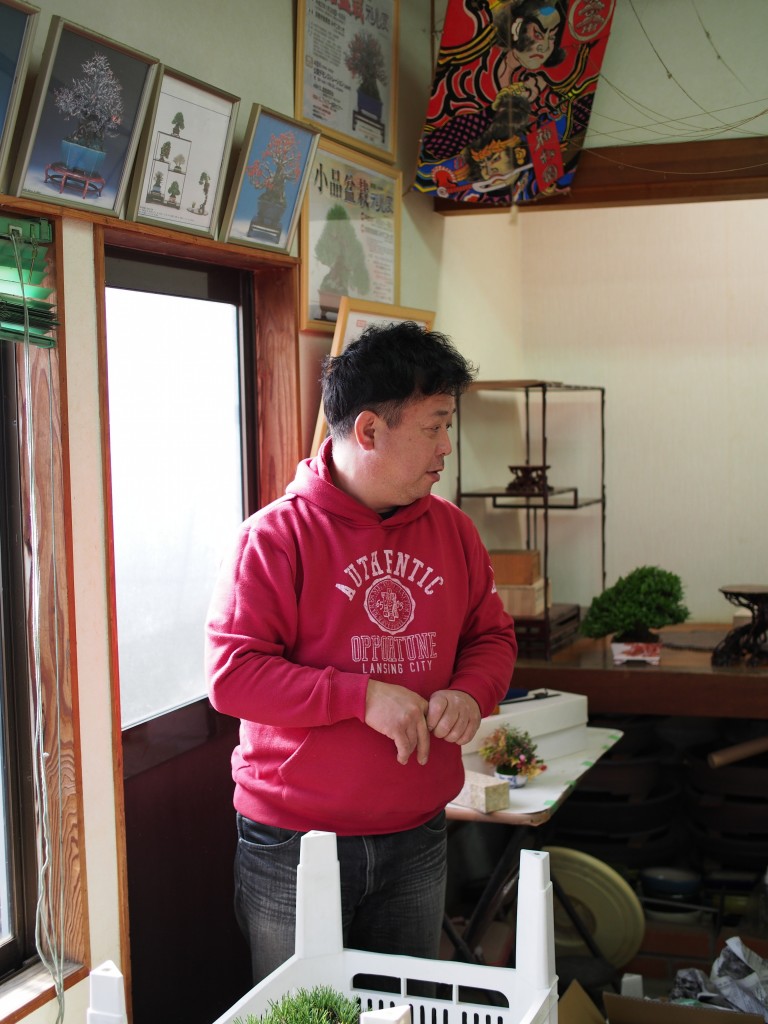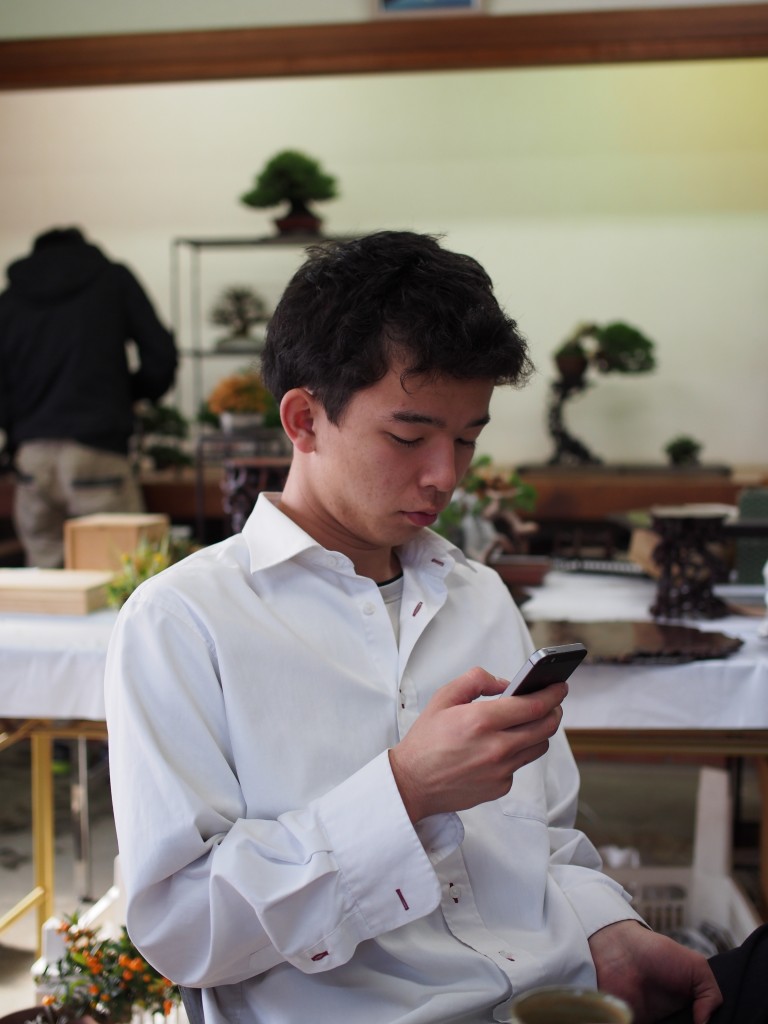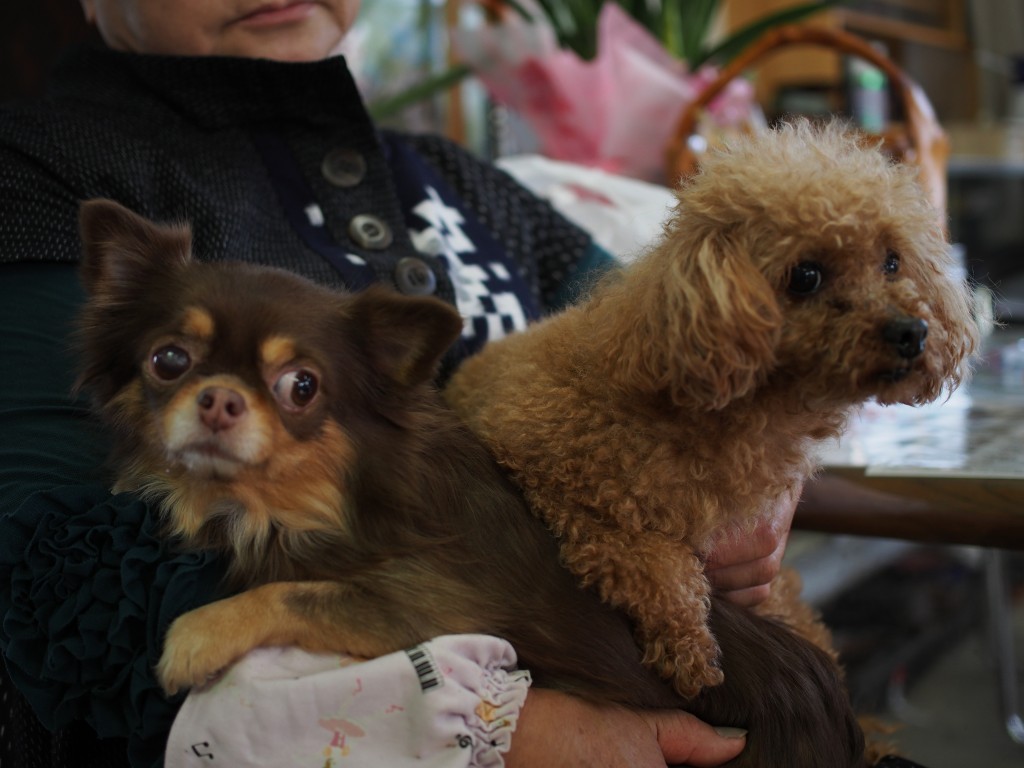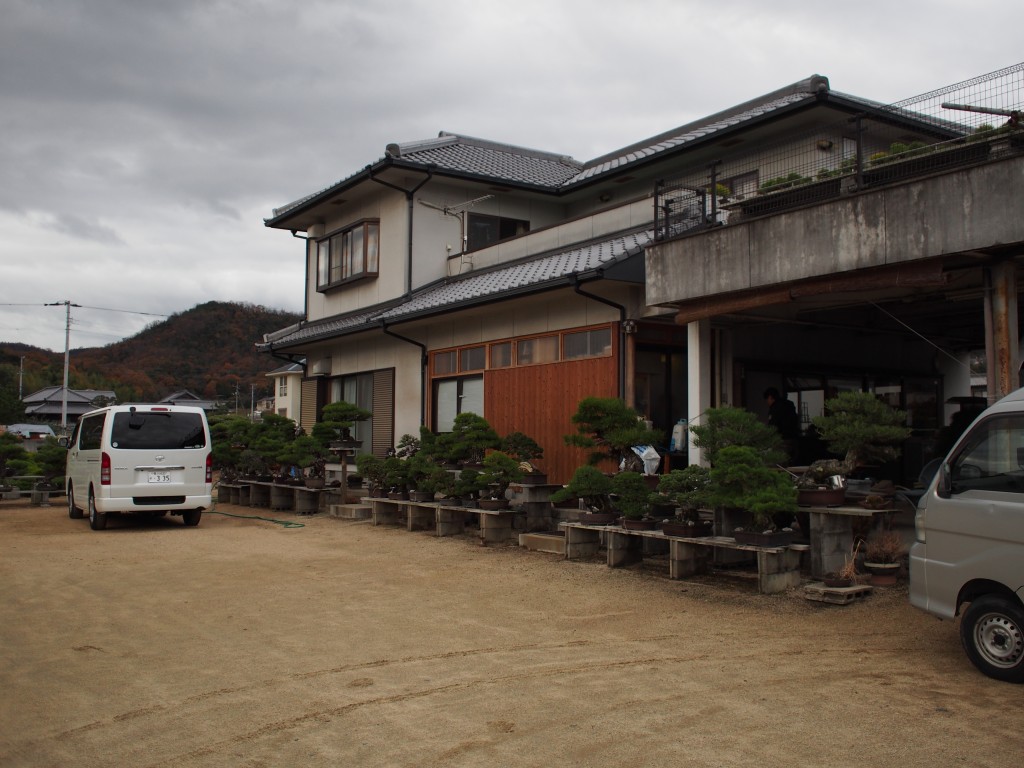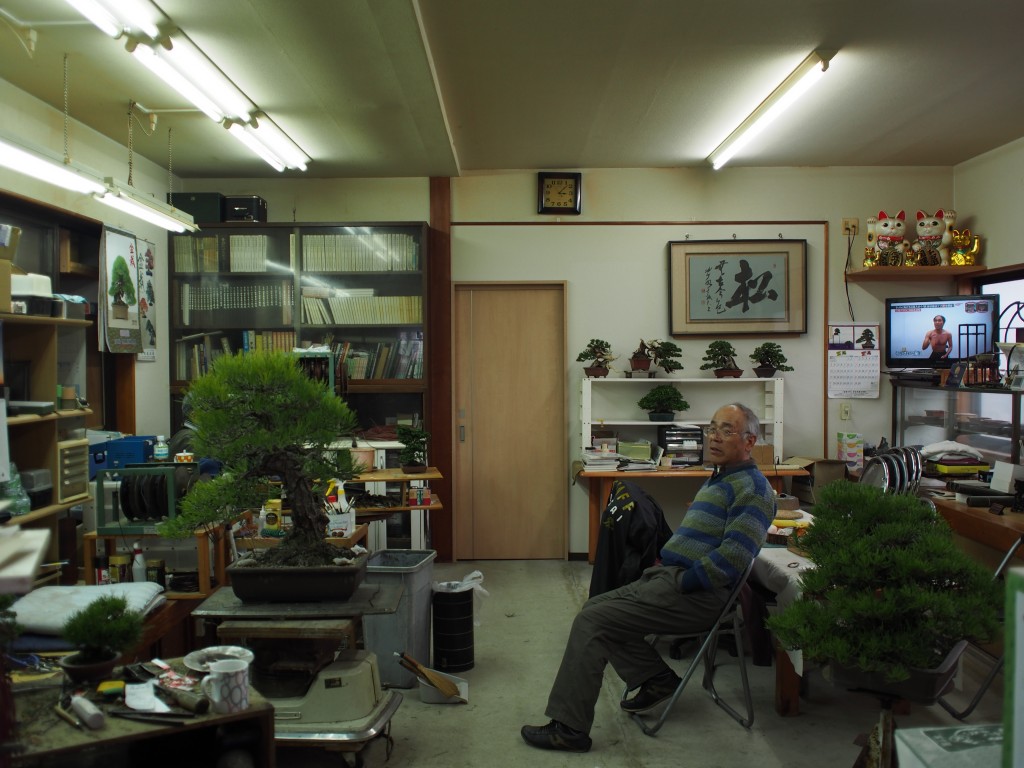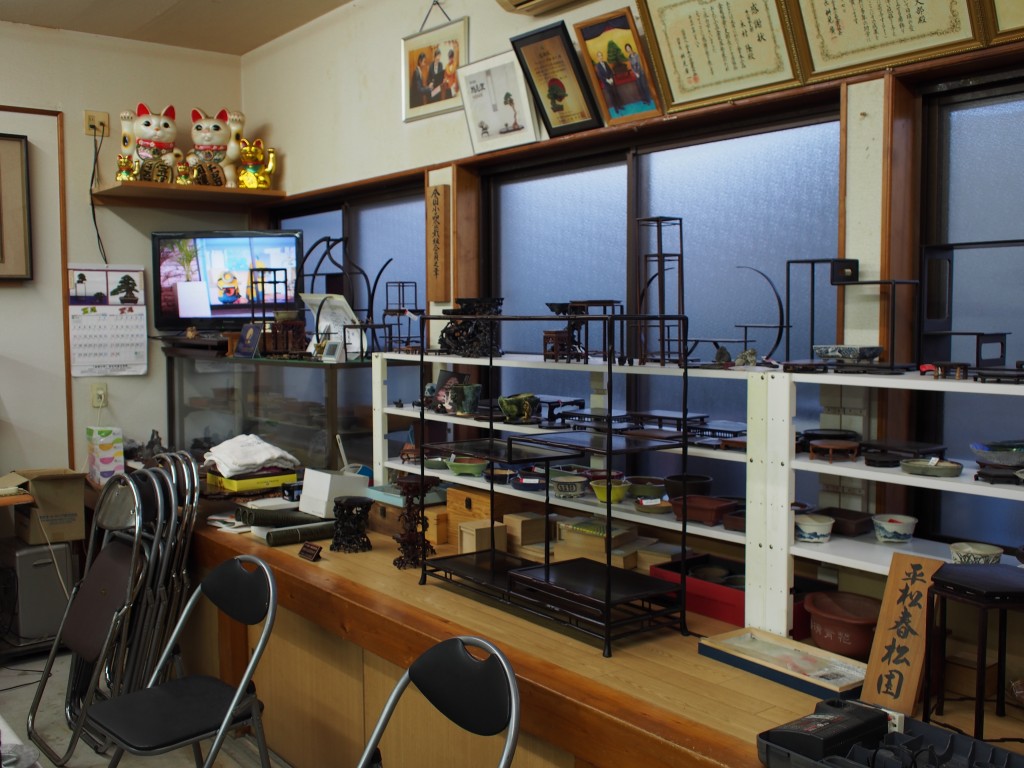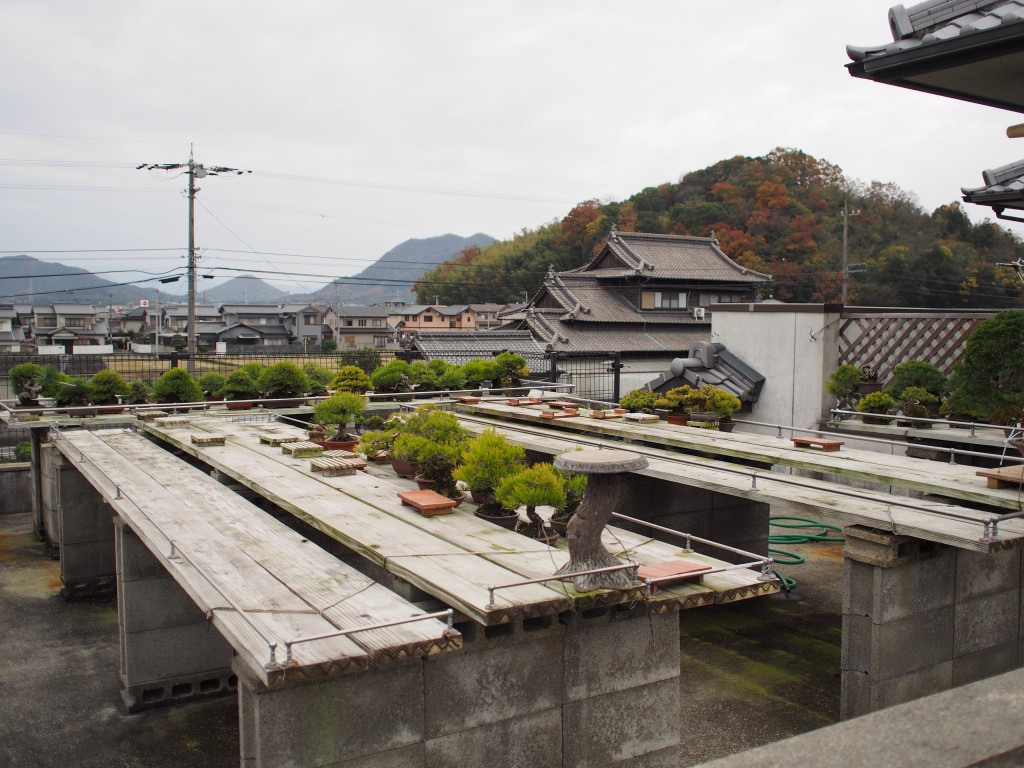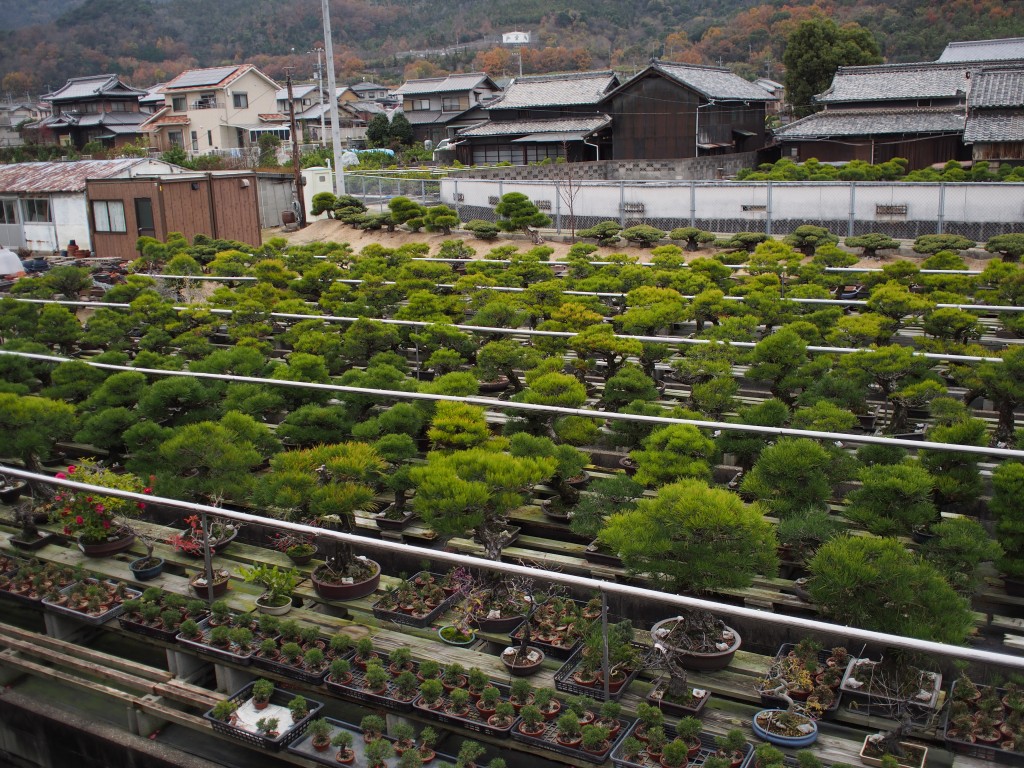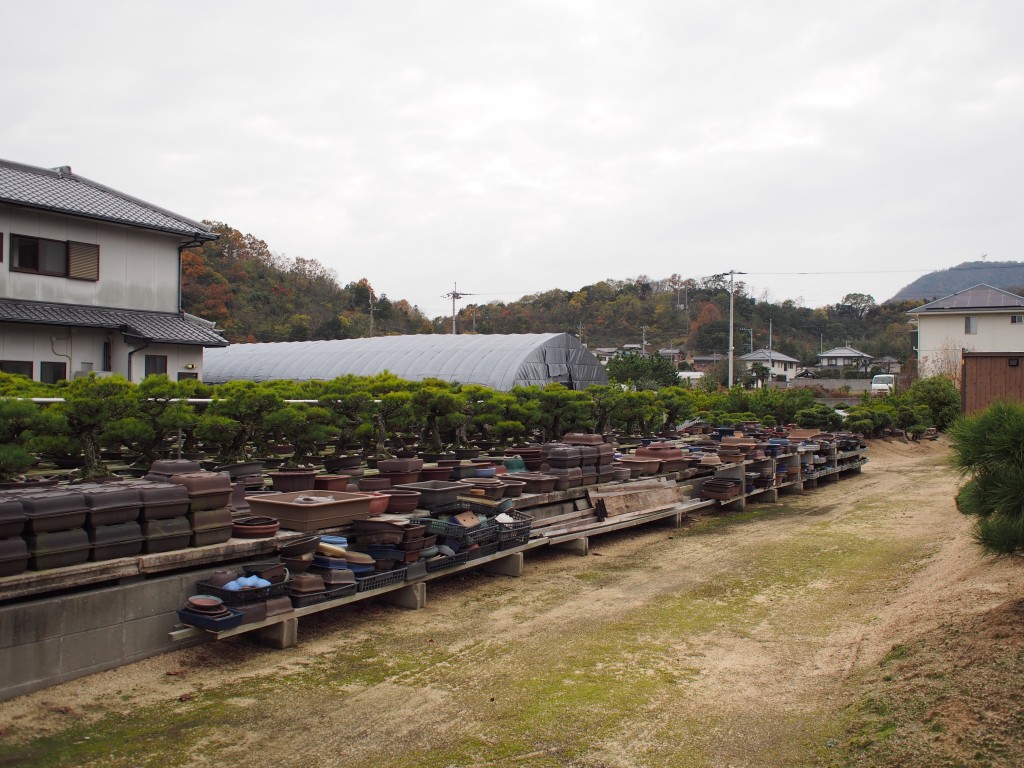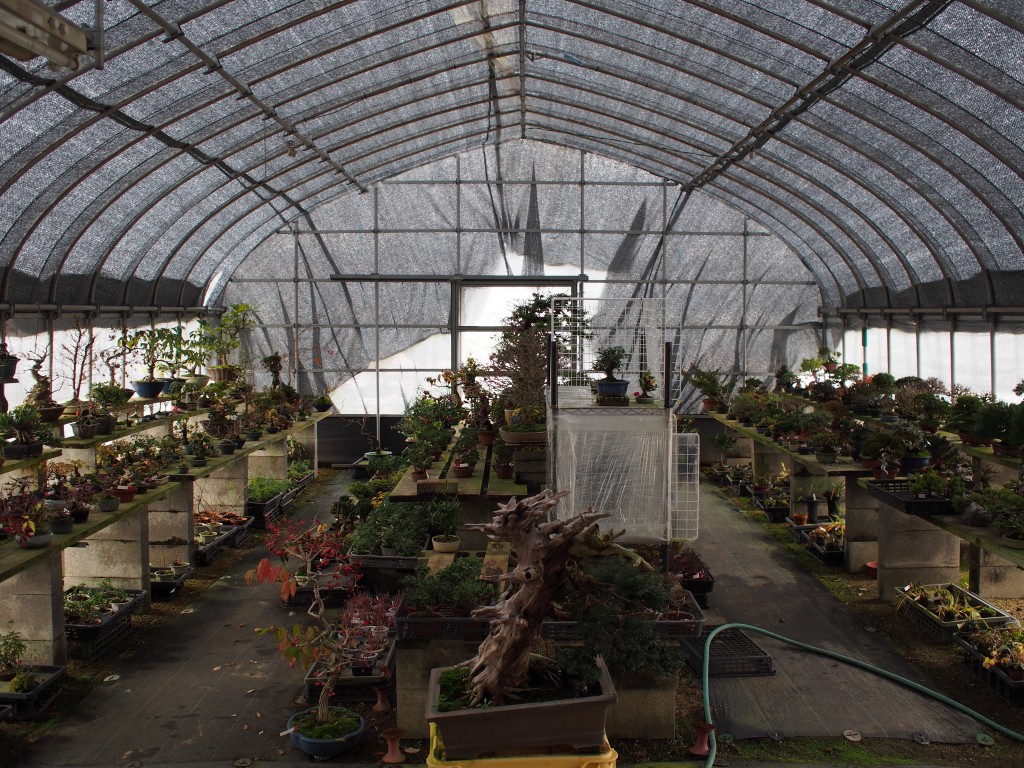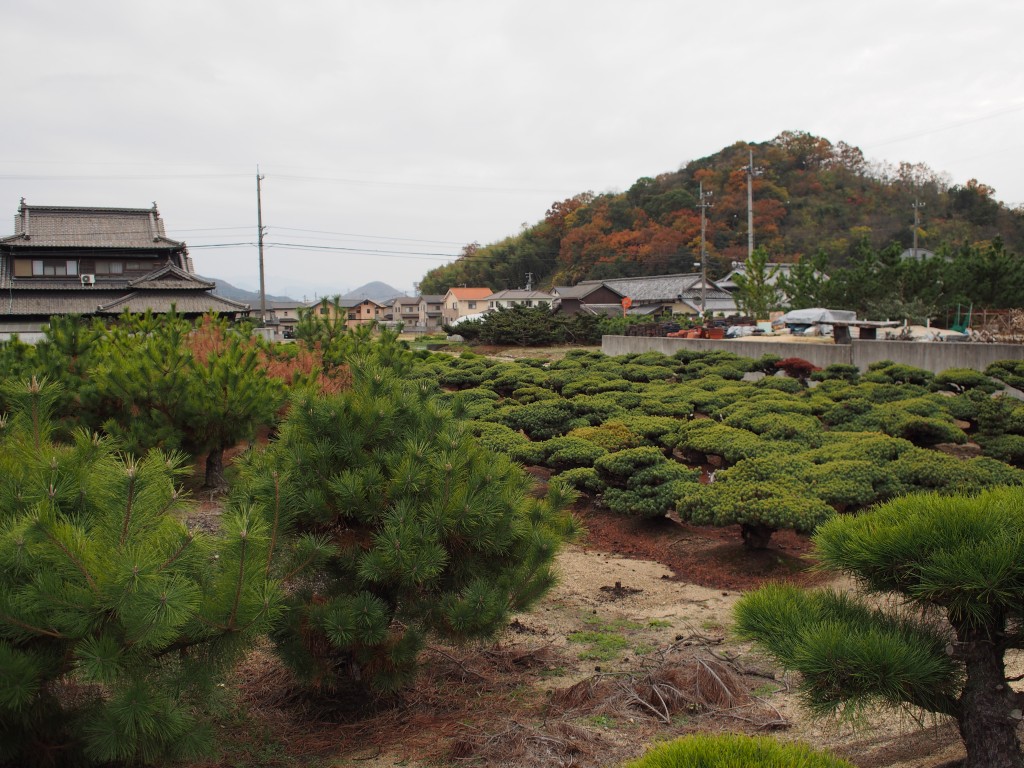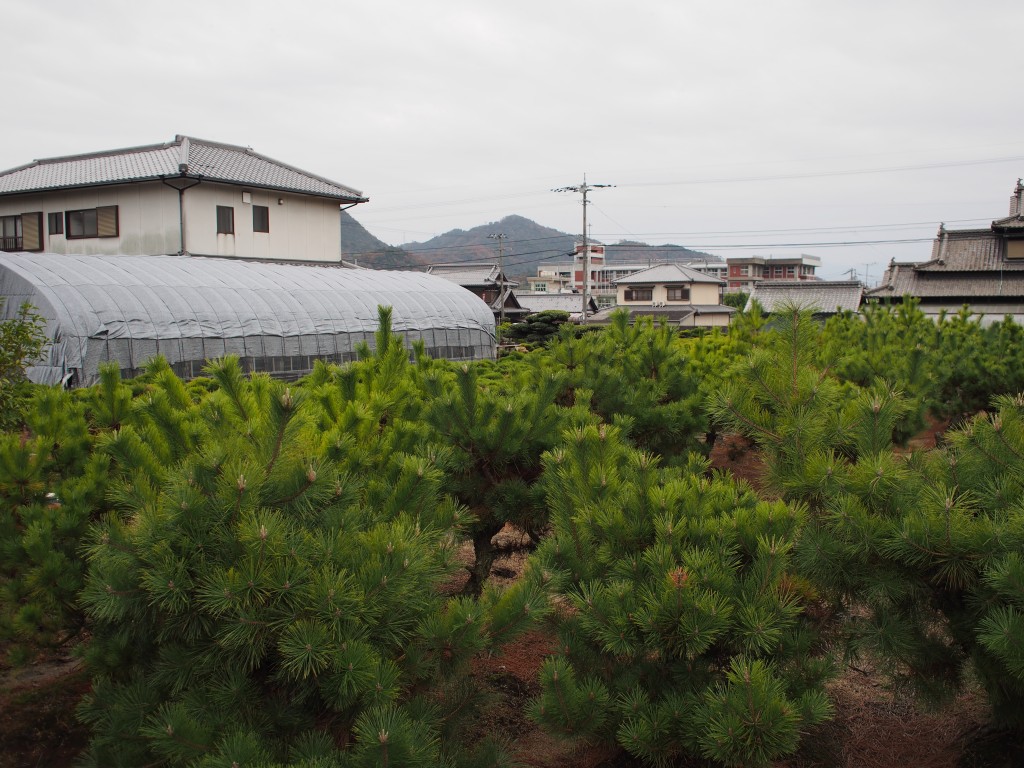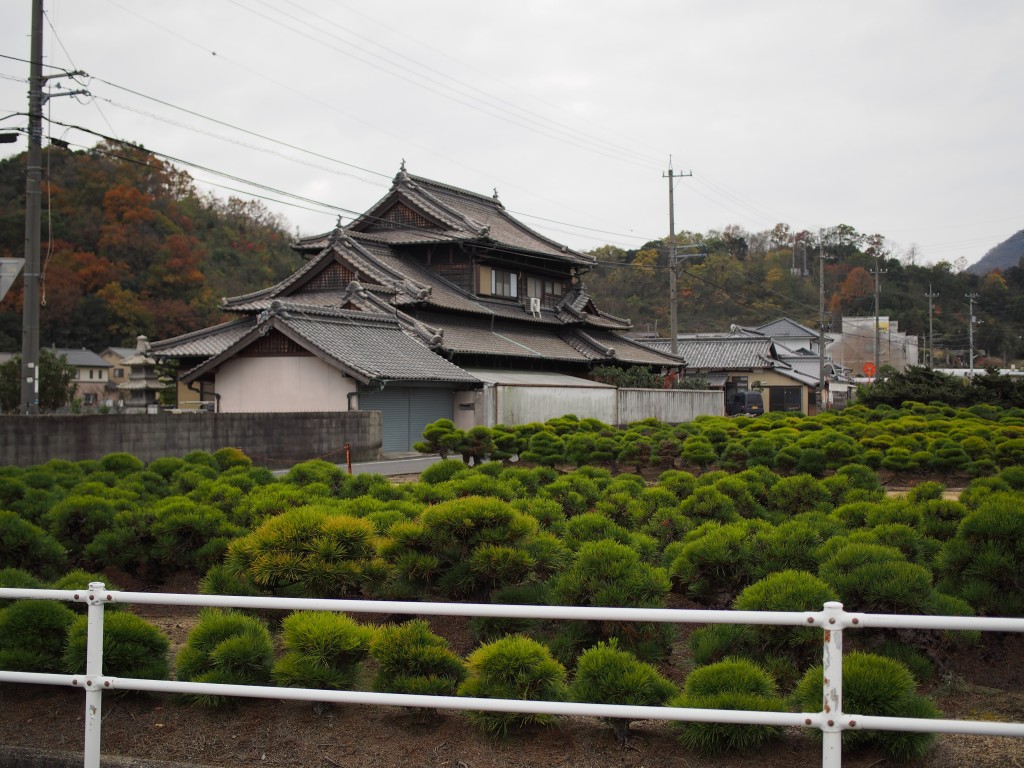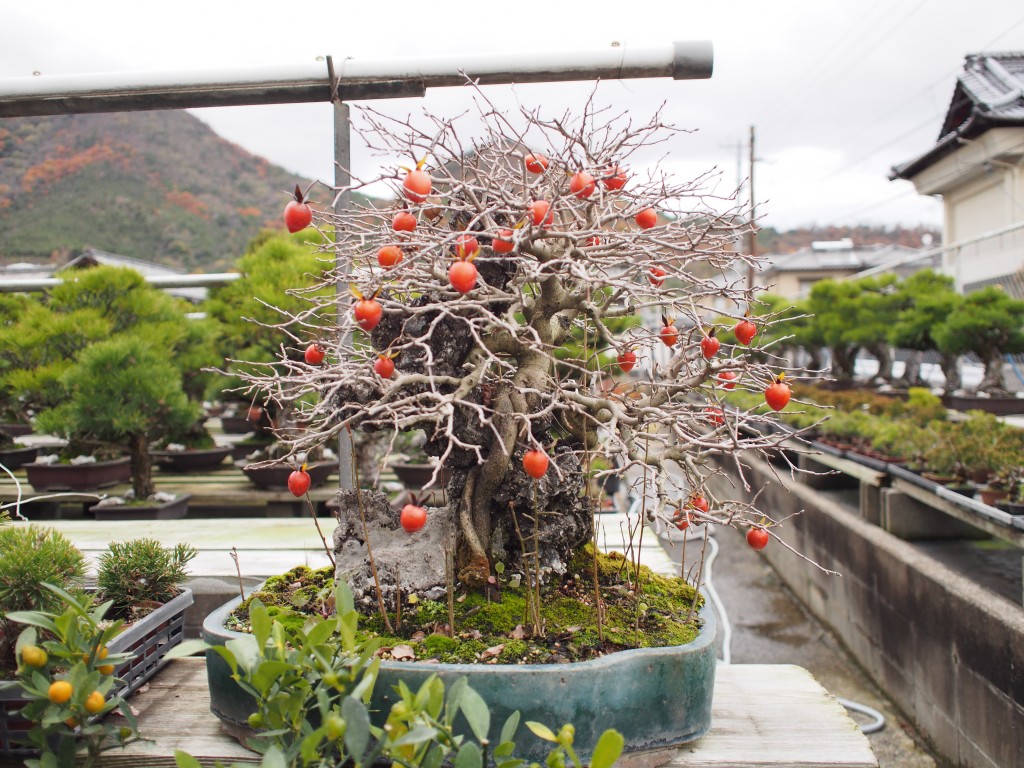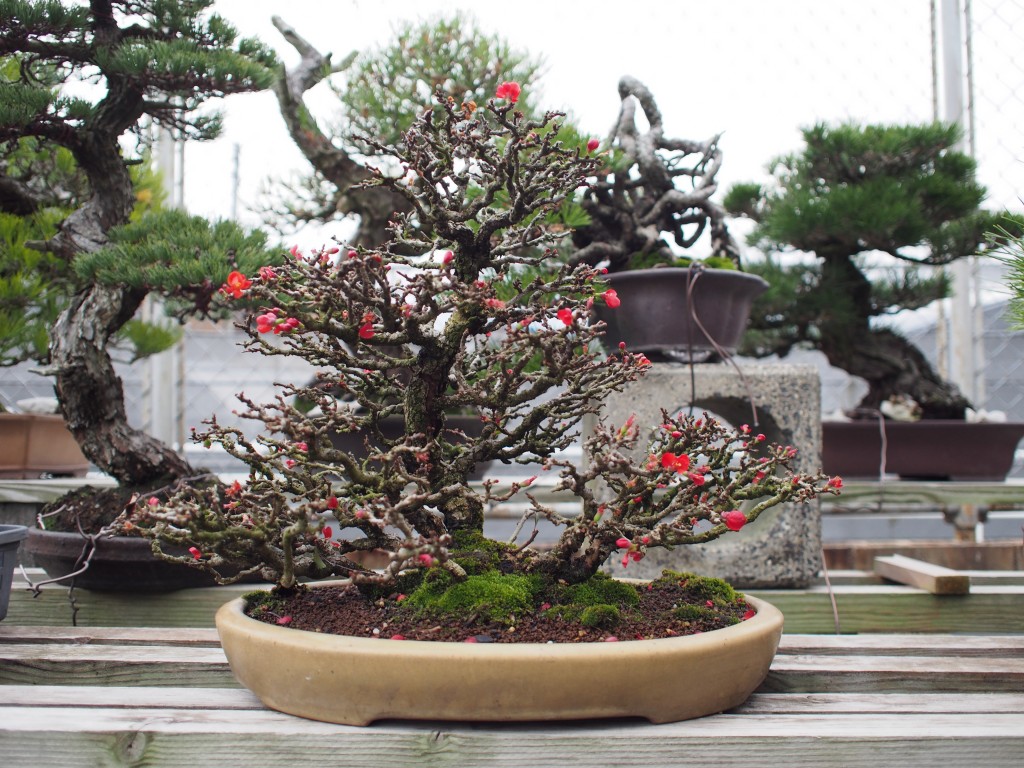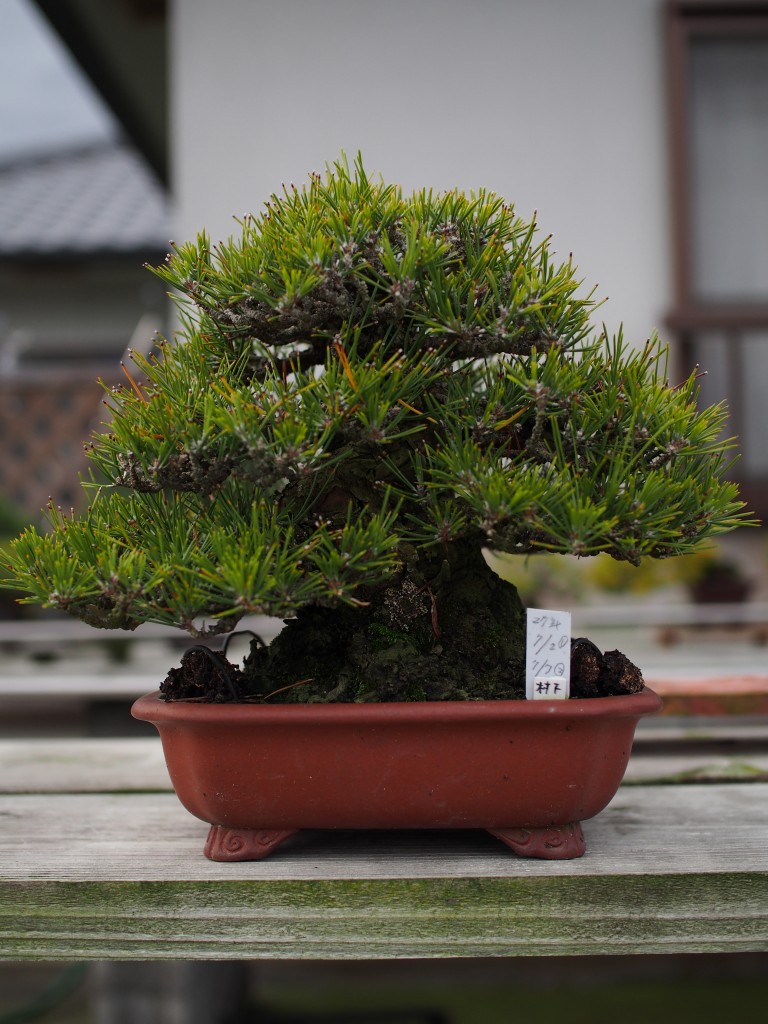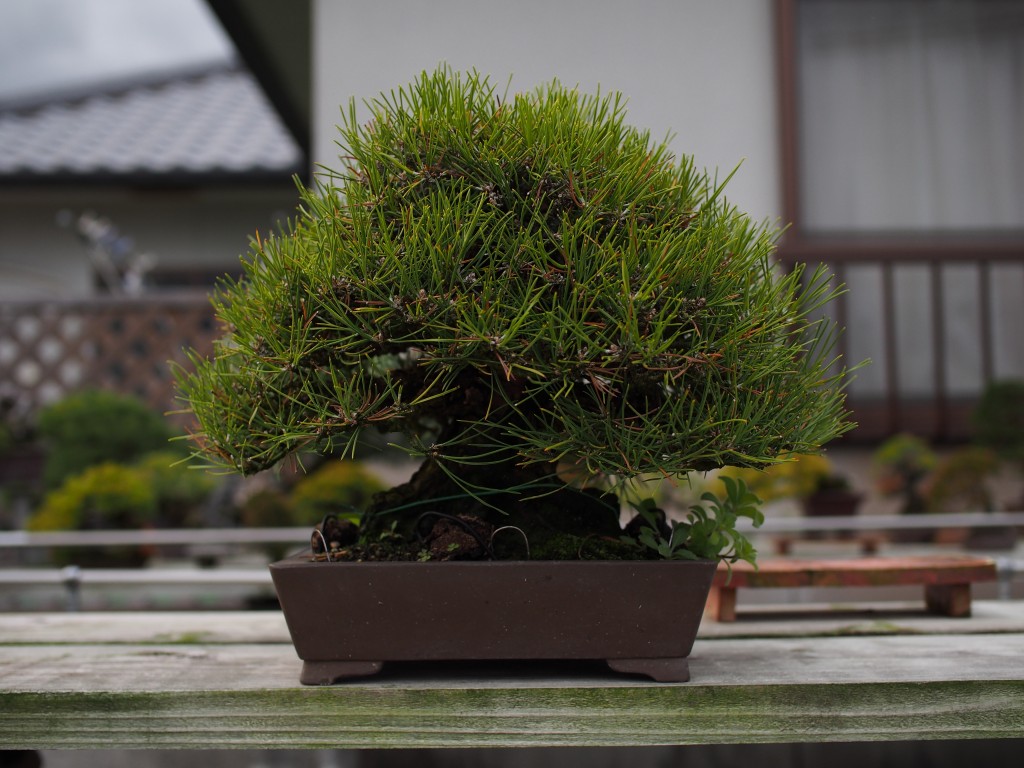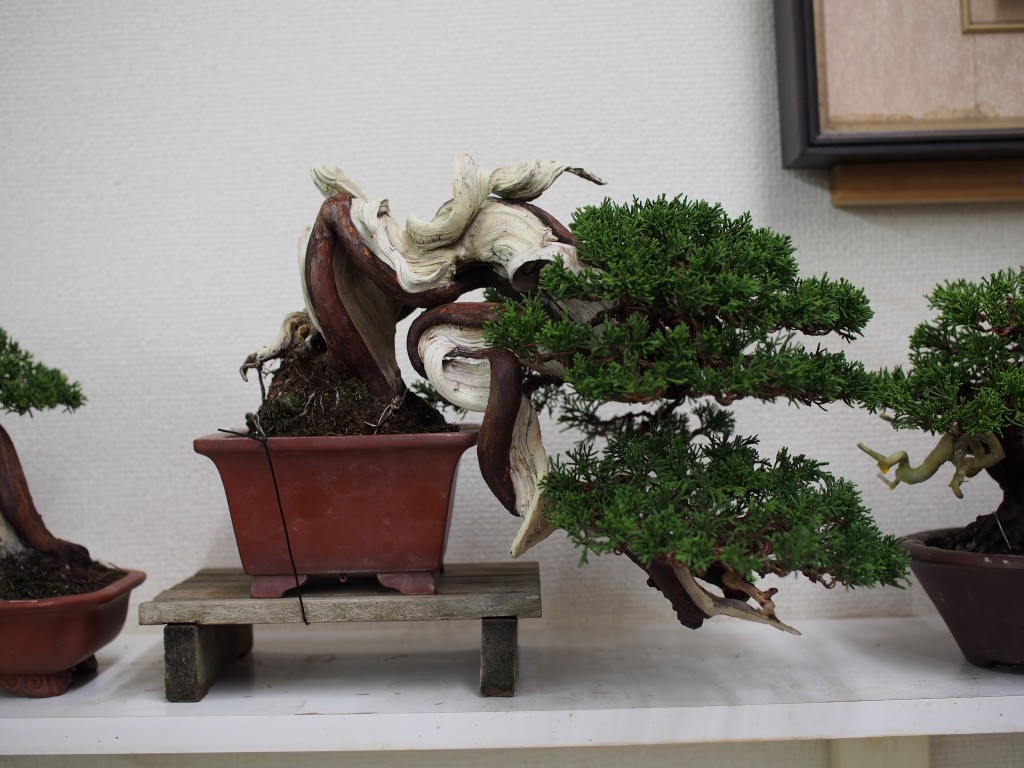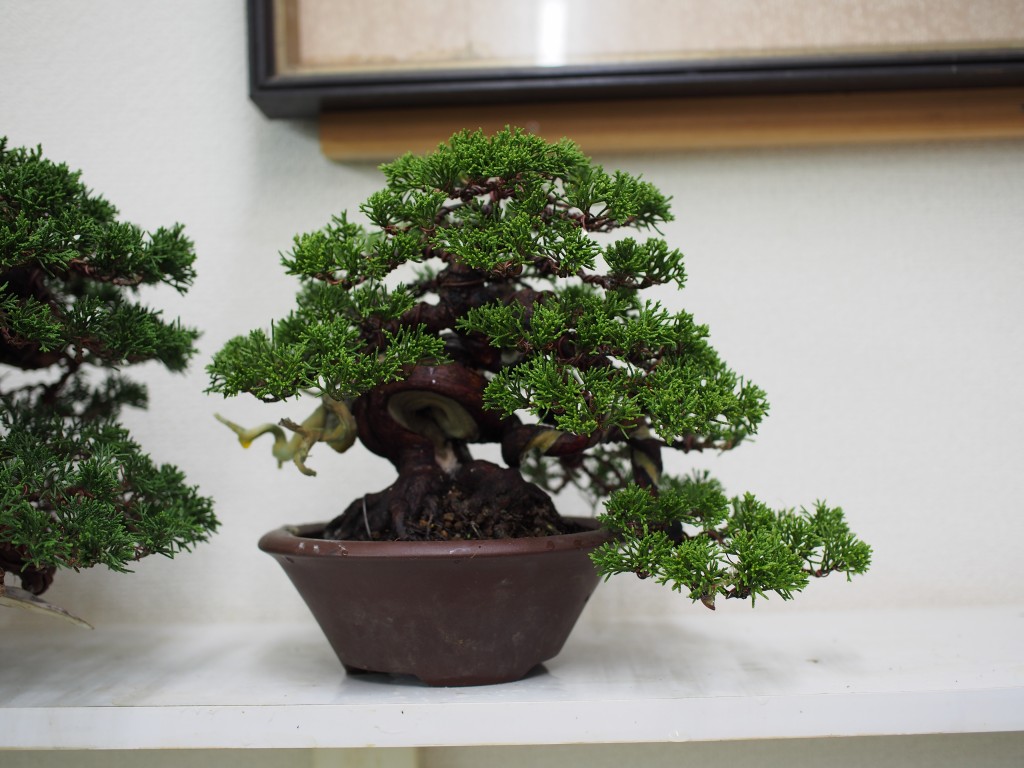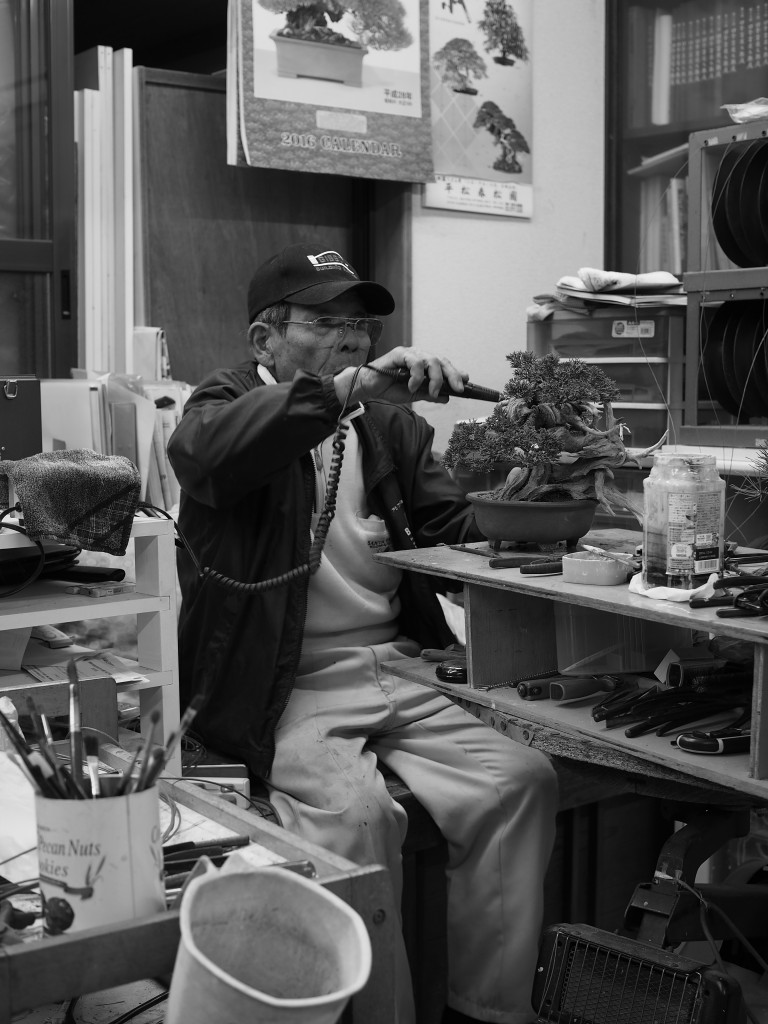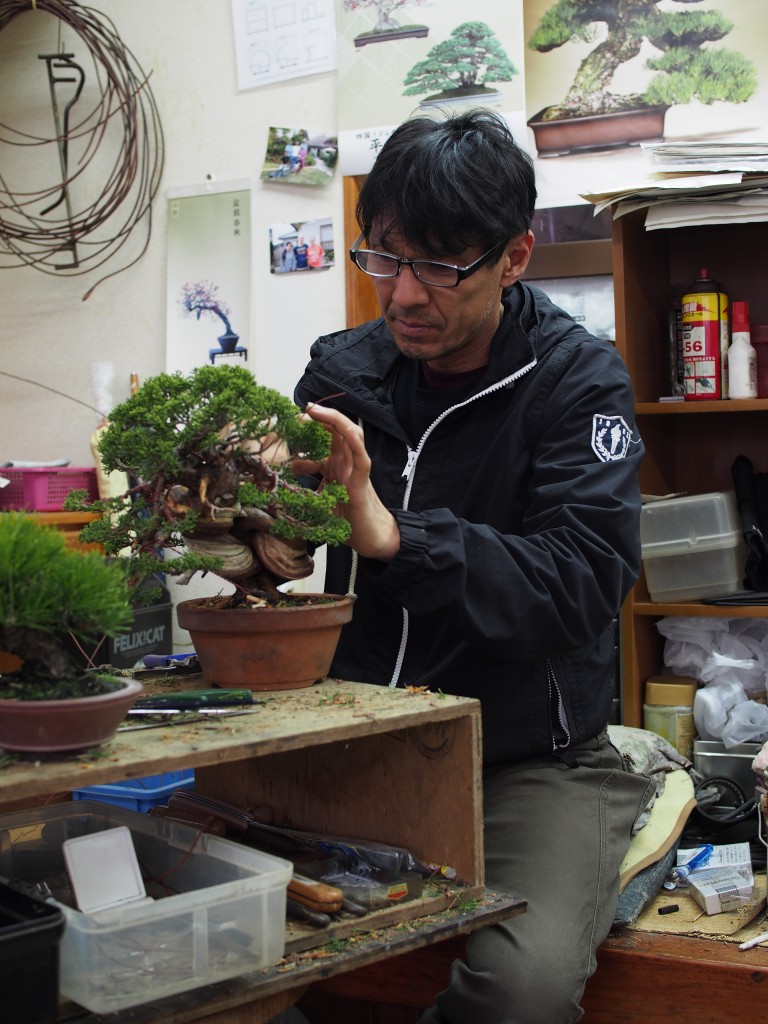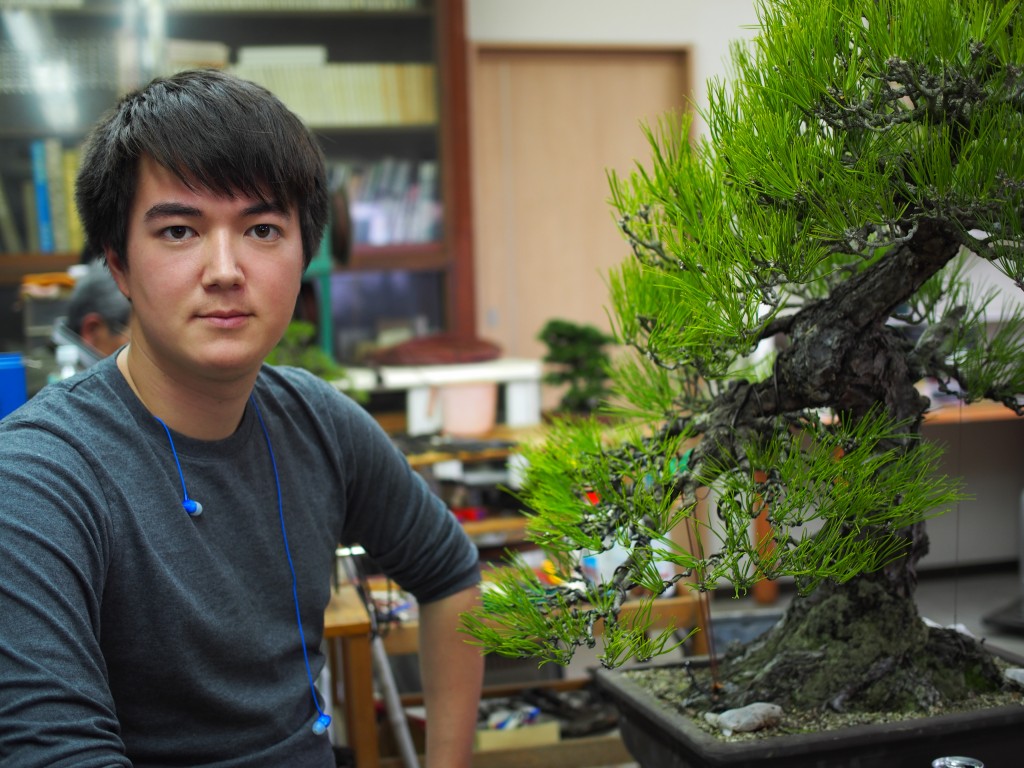A recent addition to Gafu-ten is the World Shohin Photo Award which will be running for its 3rd year in 2017. Here’s the link to the photo competition if you’re interested: https://www.facebook.com/events/1166677350051323/
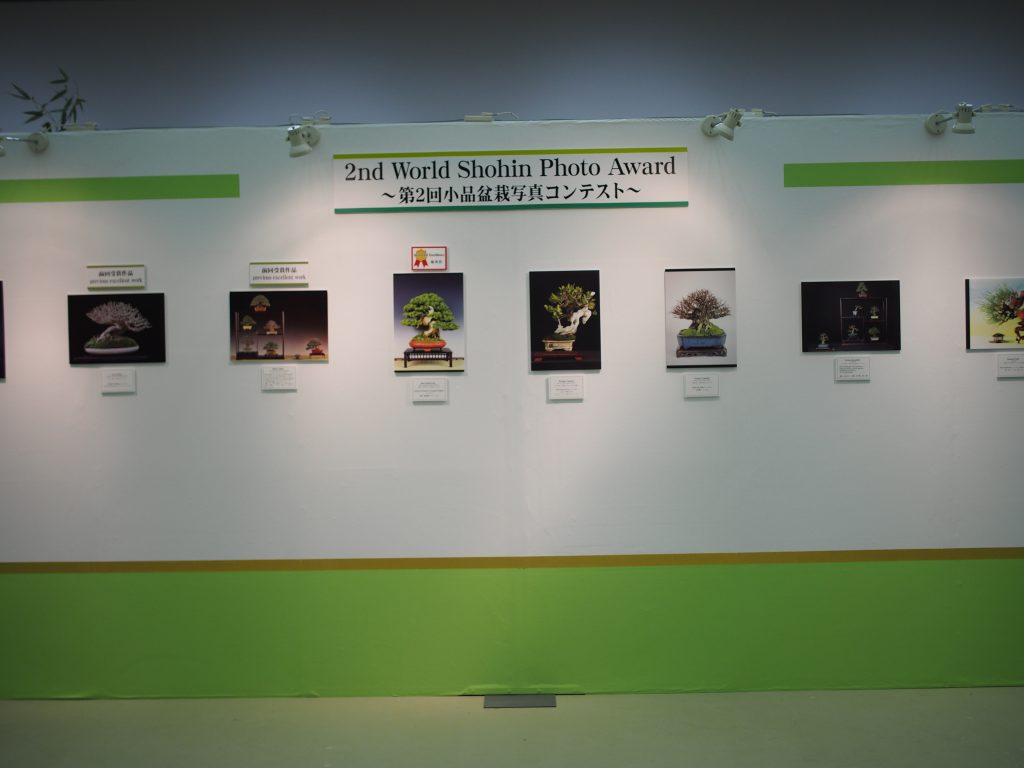
The winner of the photo competition this year was Jose Acuna from Spain who runs the blog “Centro Bonsai Tenerife”. Jose also studied for a few weeks at Koji’s inaugural “Takamatsu Bonsai School” after Gafu-ten, along with 2 other students form France and China. Here’s a link to his blog: http://centrobonsaitenerife.blogspot.com.au/
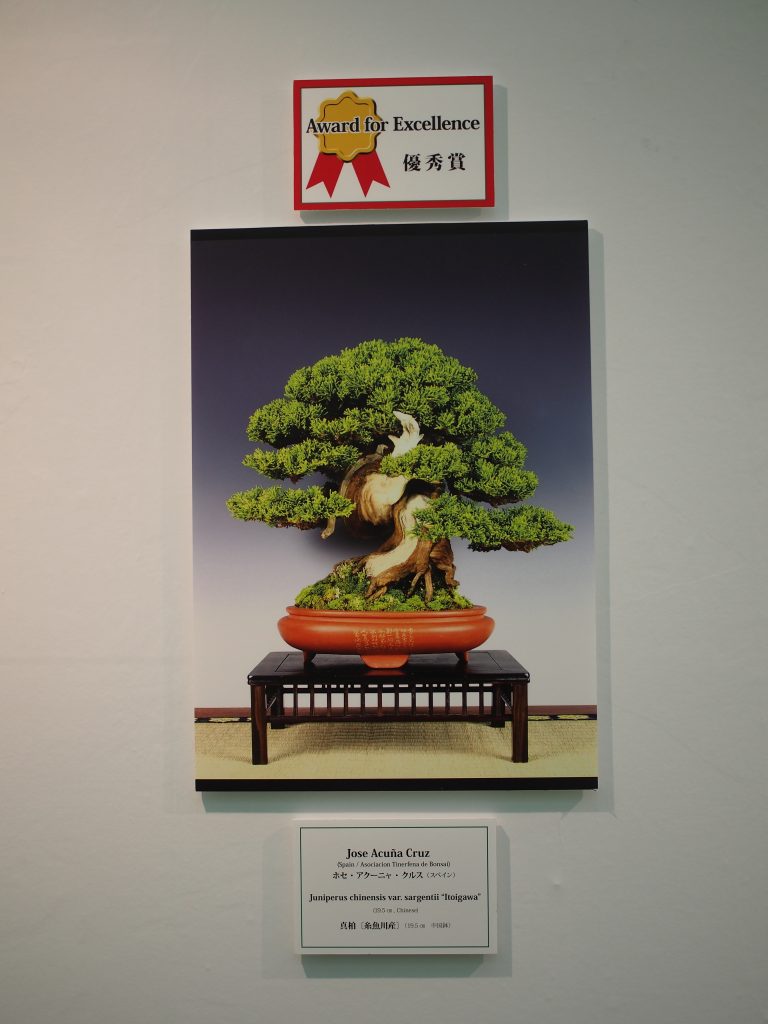
Being caught up working at the sales area only allowed me a half hour on the final day to look at the exhibition. So rather than take photos of every single tree in the exhibition, I only took photos of the trees and displays that I liked.
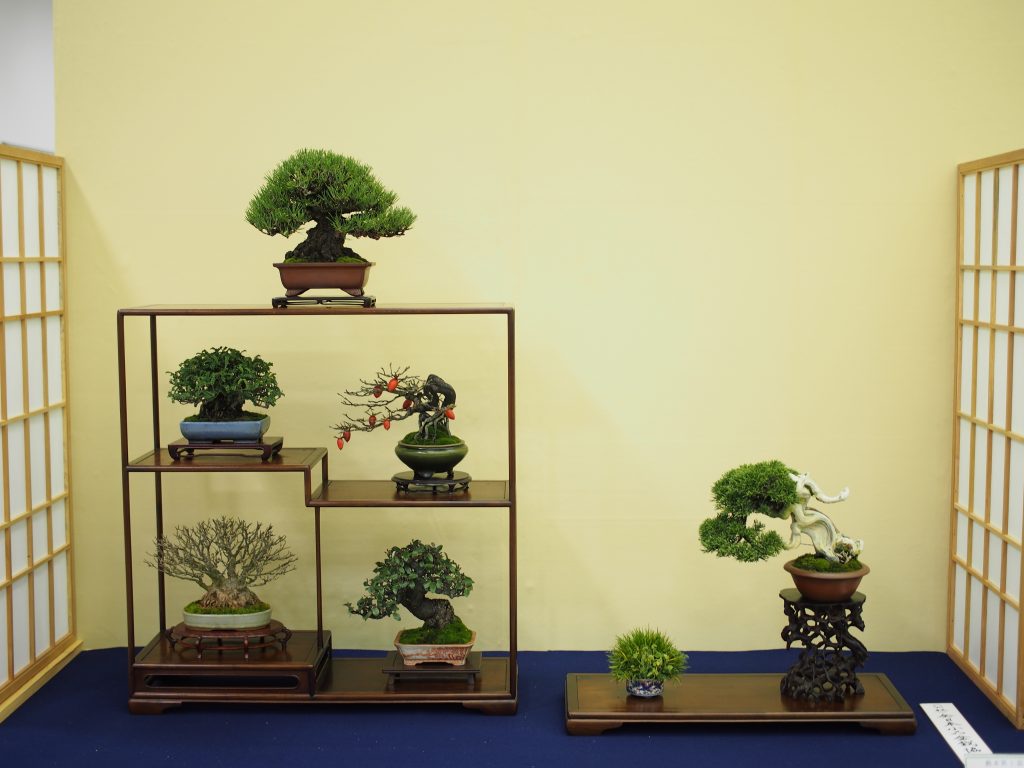
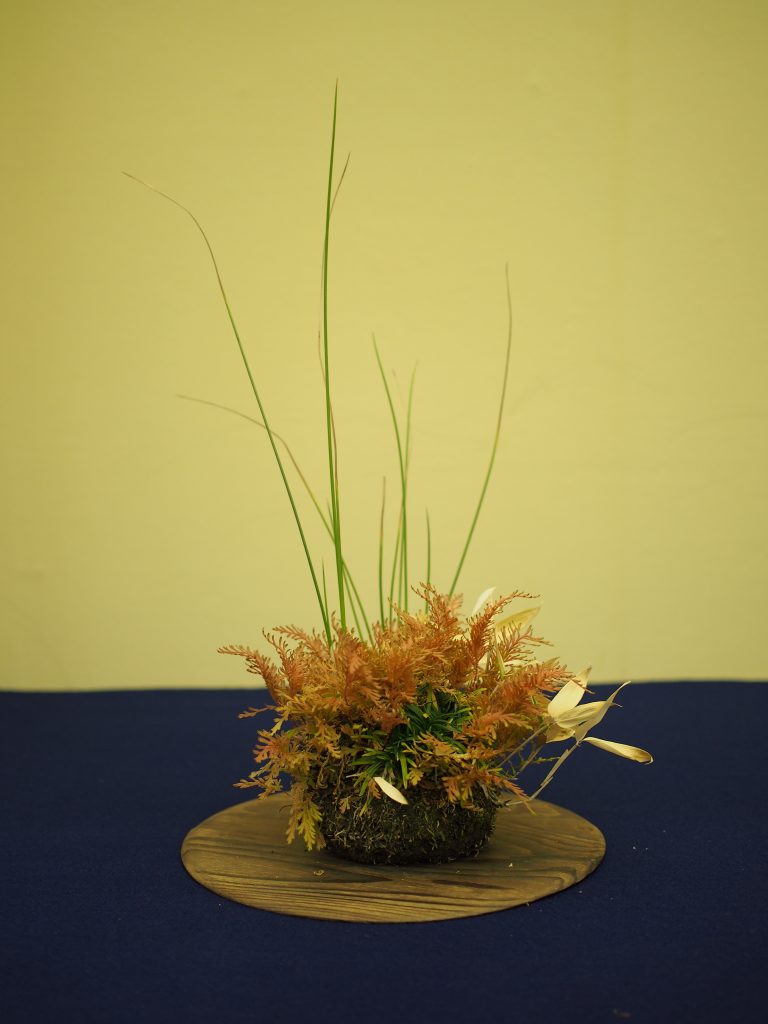
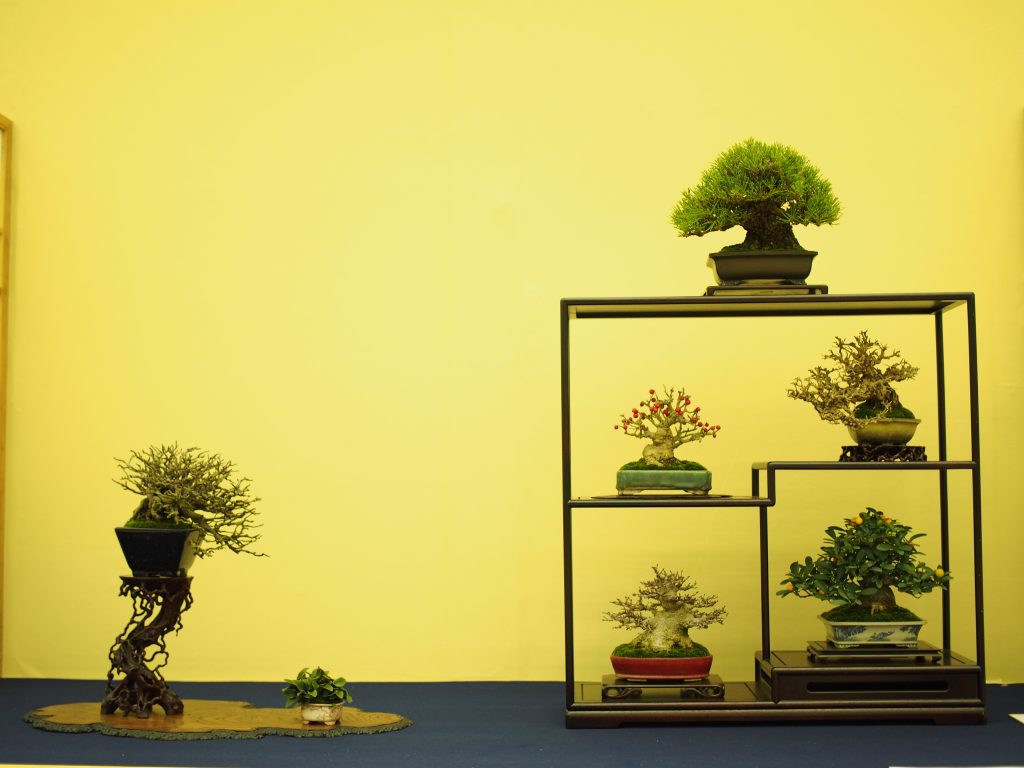
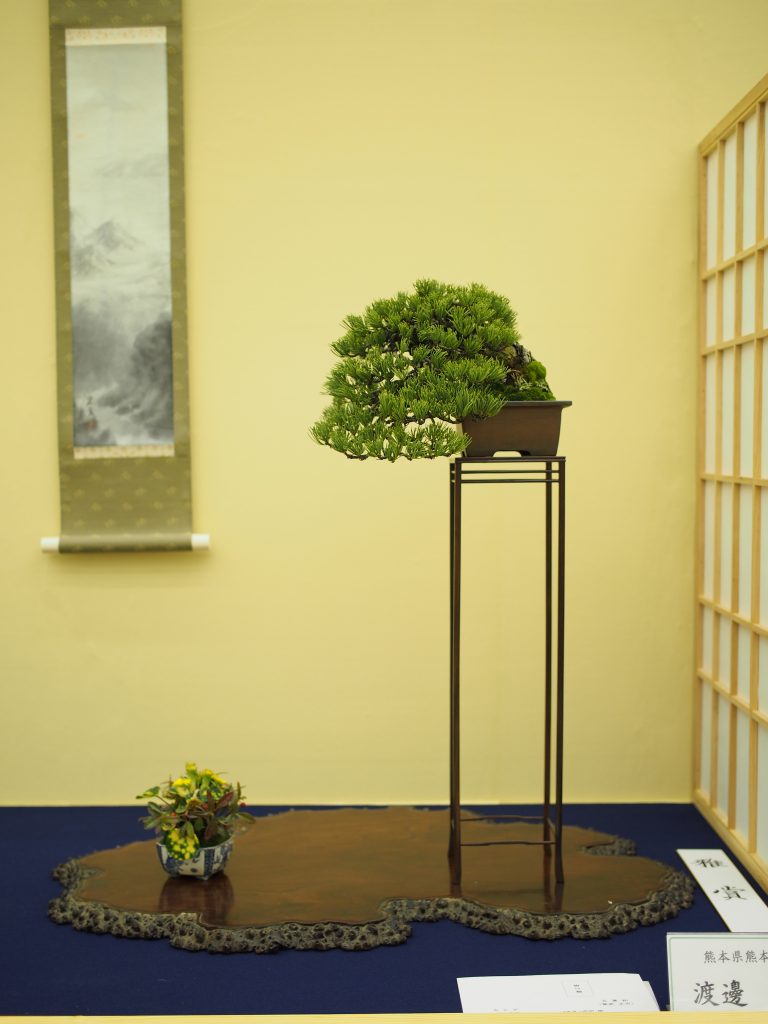
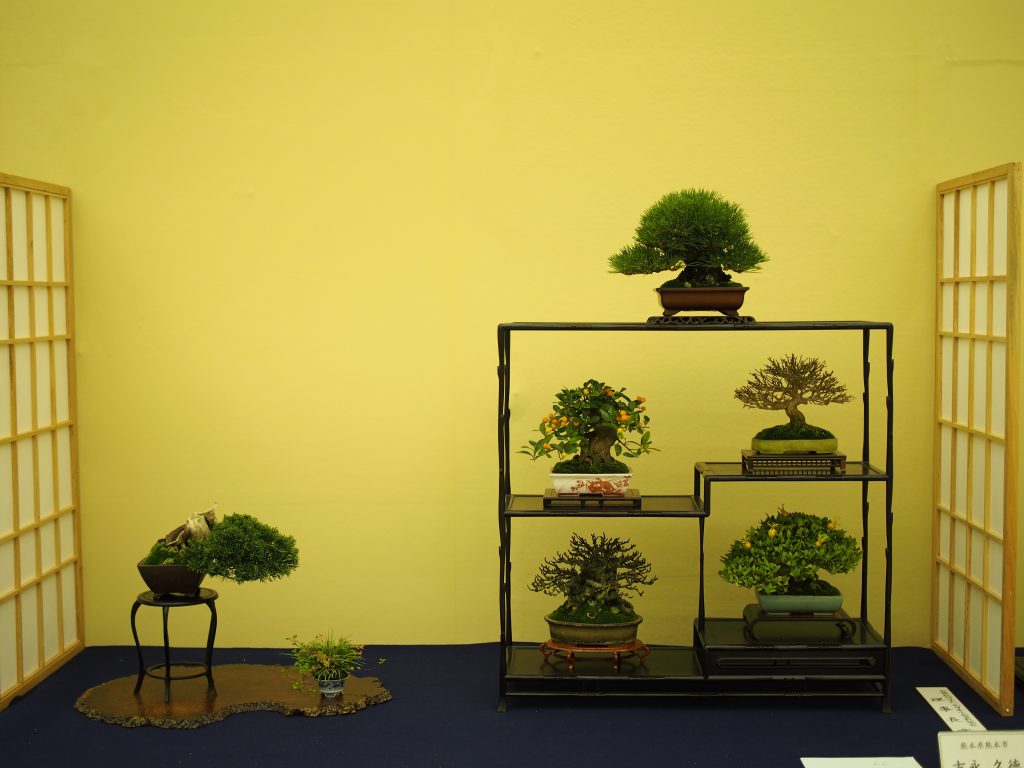
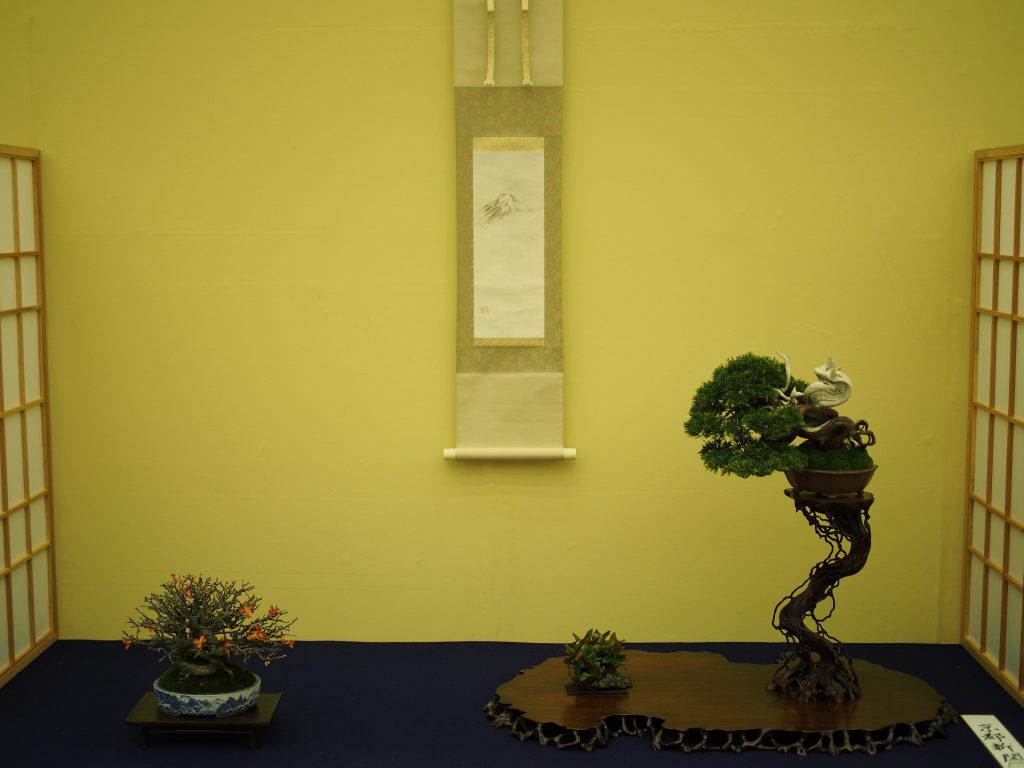
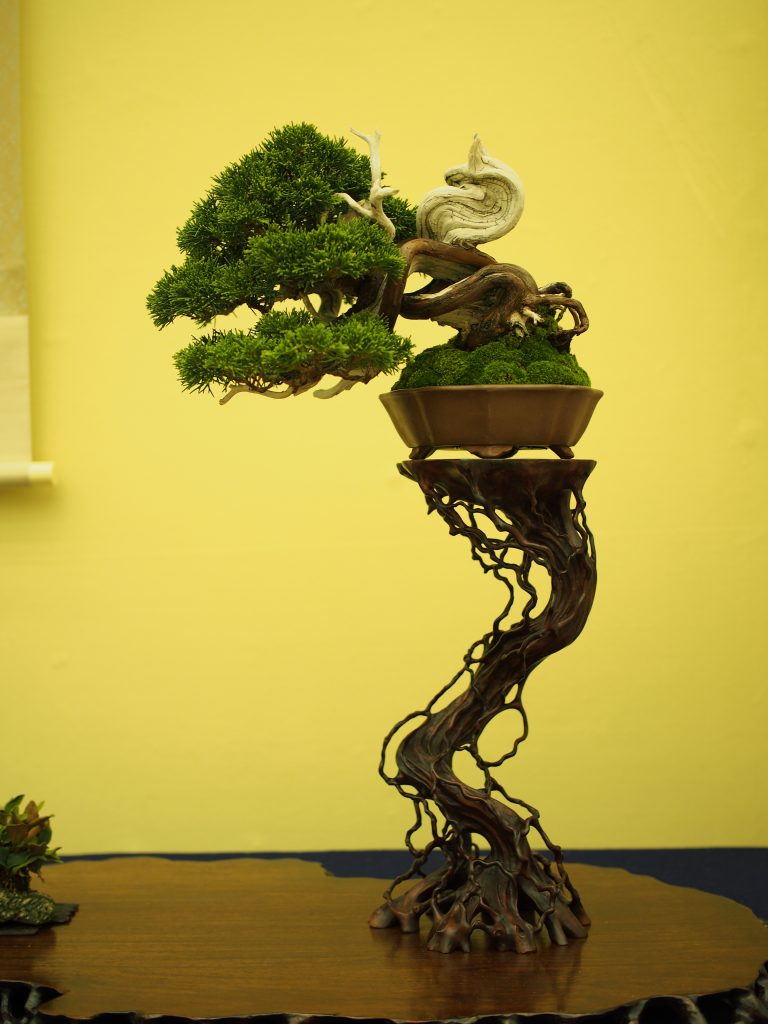
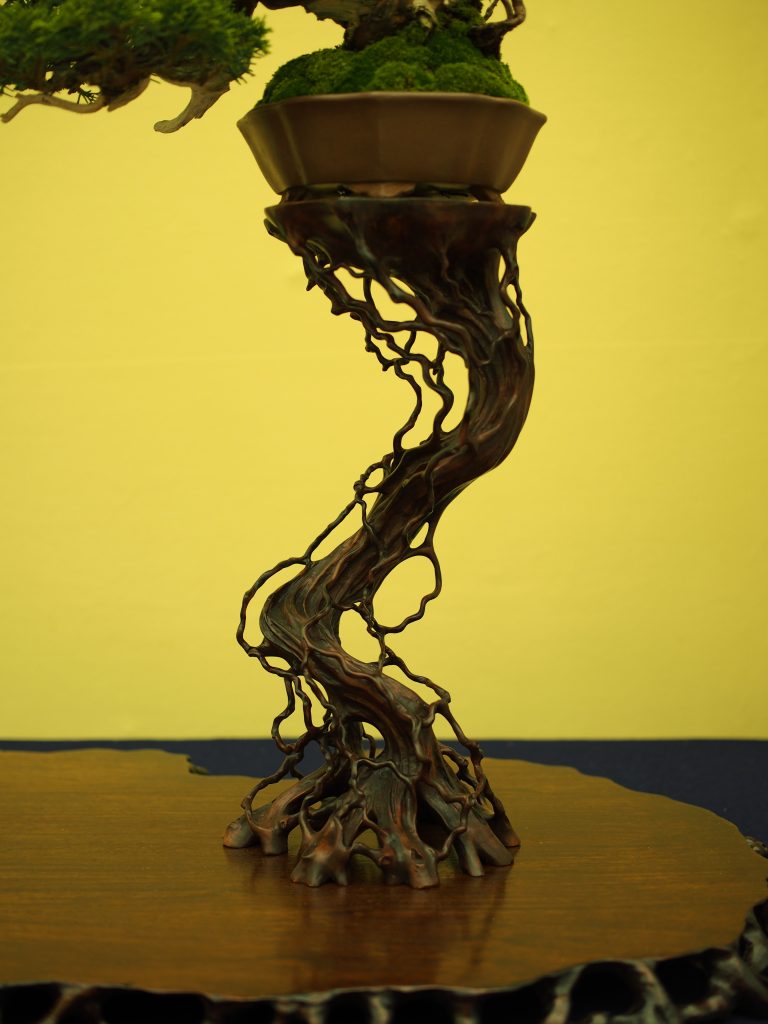
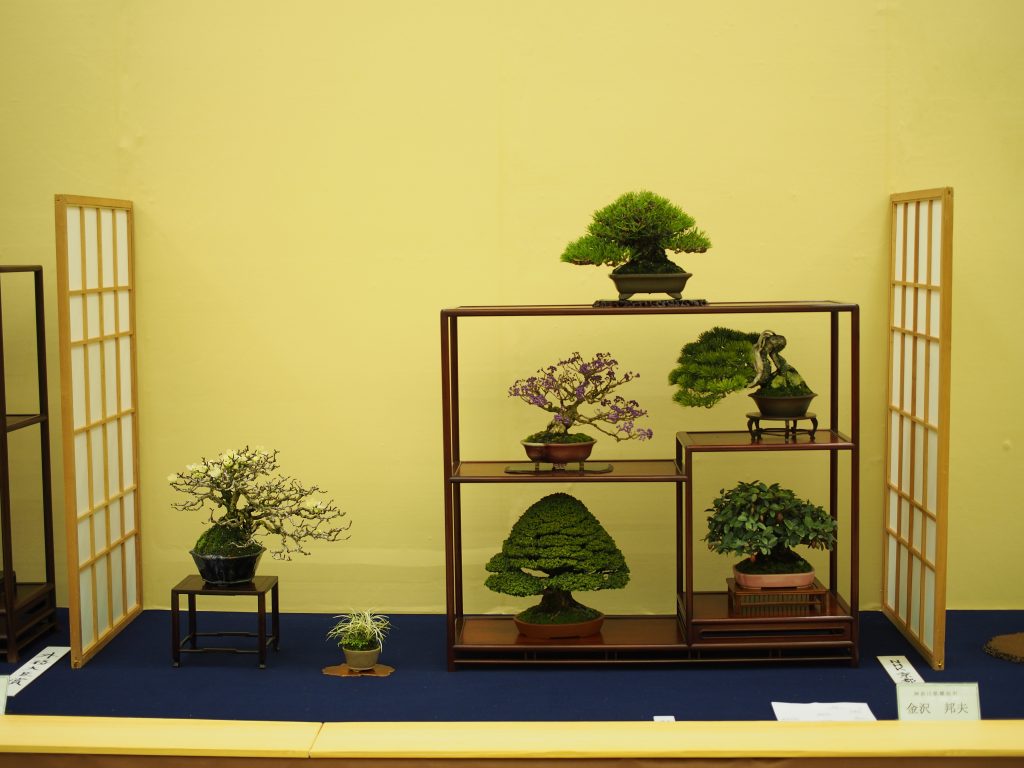
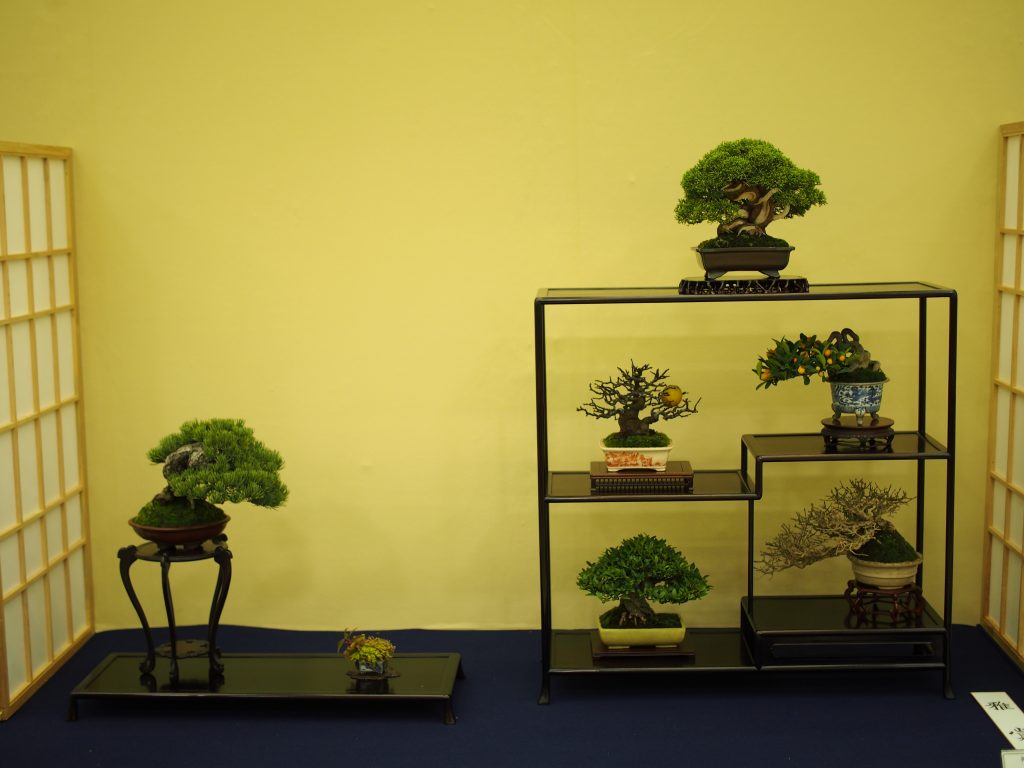
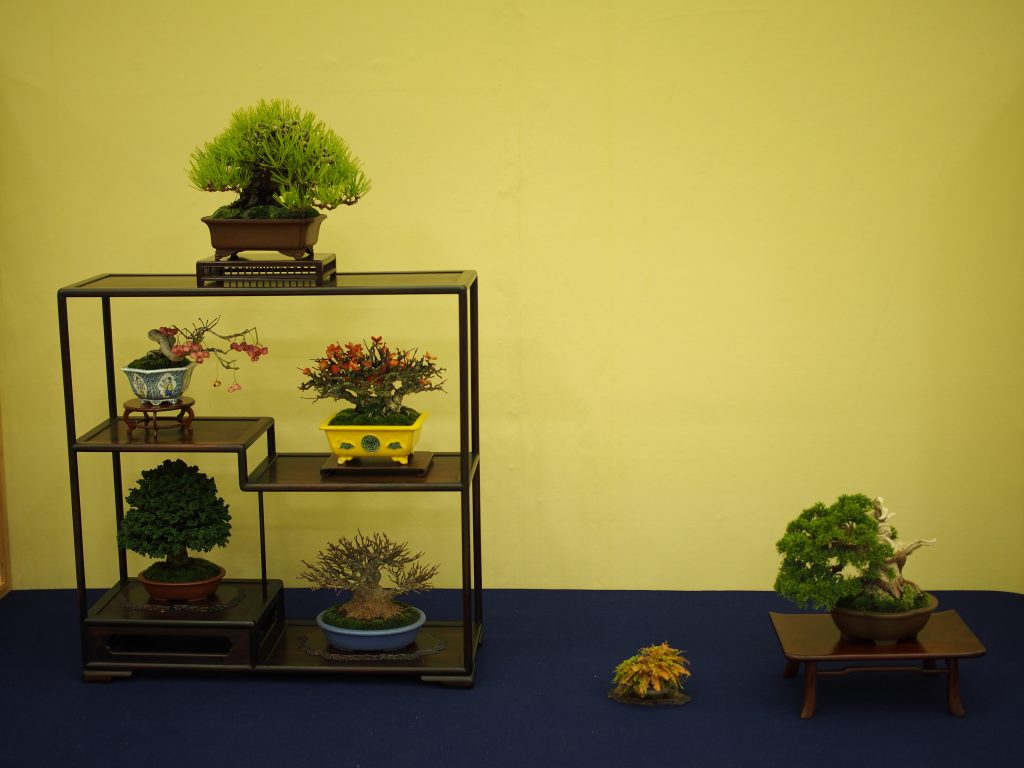
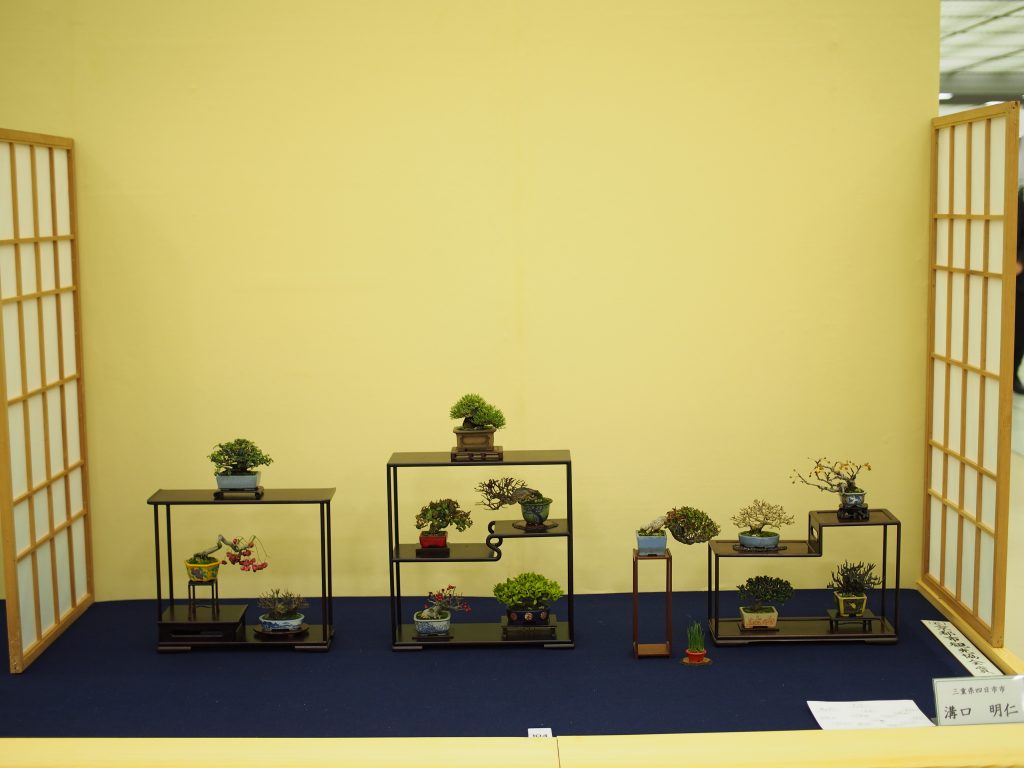
There was a decent crowd for the workshop with around 30 people watching. If this workshop was held anywhere outside of Japan it would have pulled an insanely massive crowd. It’s odd to see these professionals, who we are used to seeing work on large impressive material, working on basic material to a small crowd.
Koji Hiramatsu

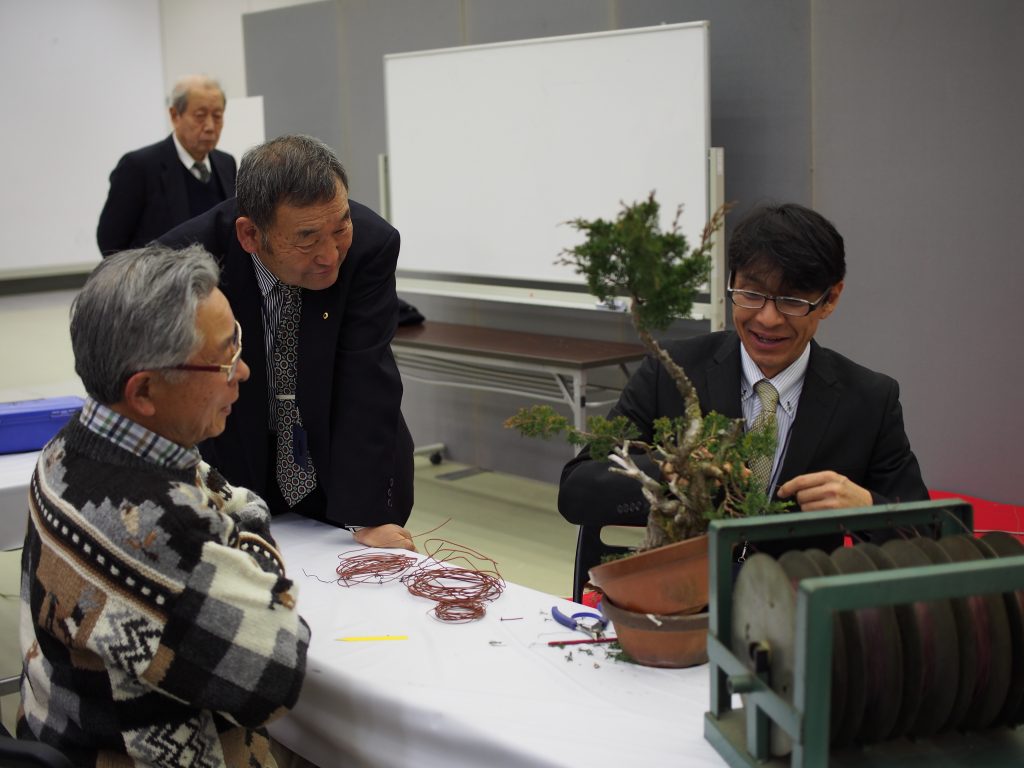
Masahiro Sasaki
Taiga Urushibata
It was also a similar affair at the awards ceremony, with only the winners and professionals attending a relatively short ceremony. Very different to the usual fanfare that accompanies awards ceremonies in the west.
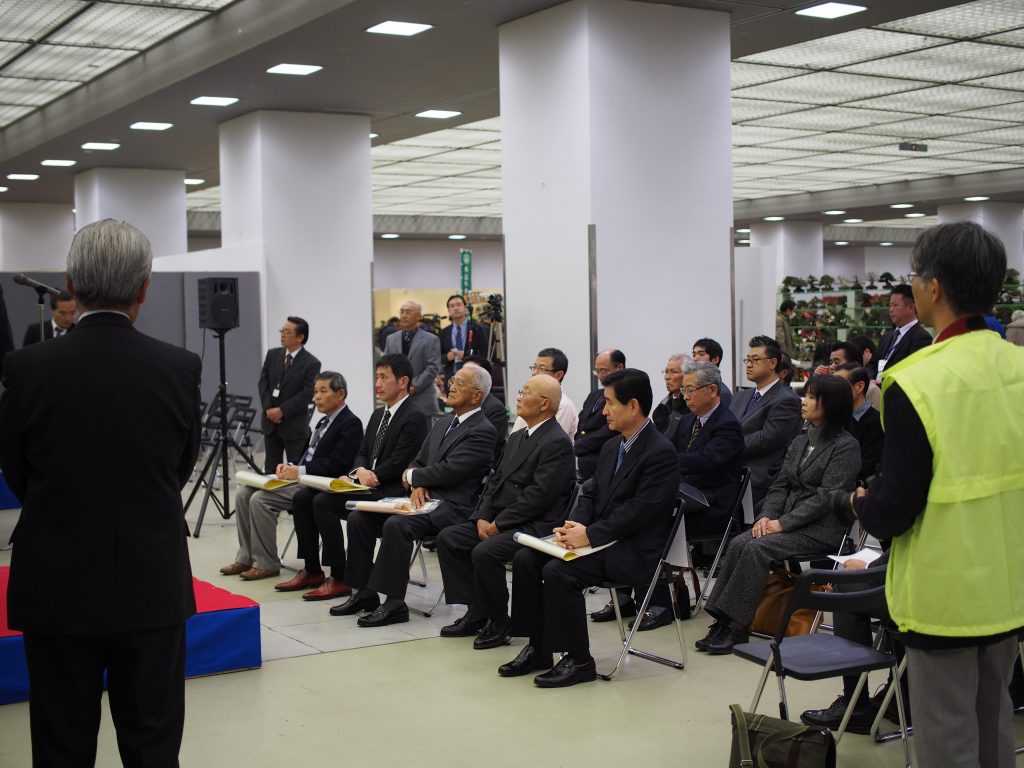
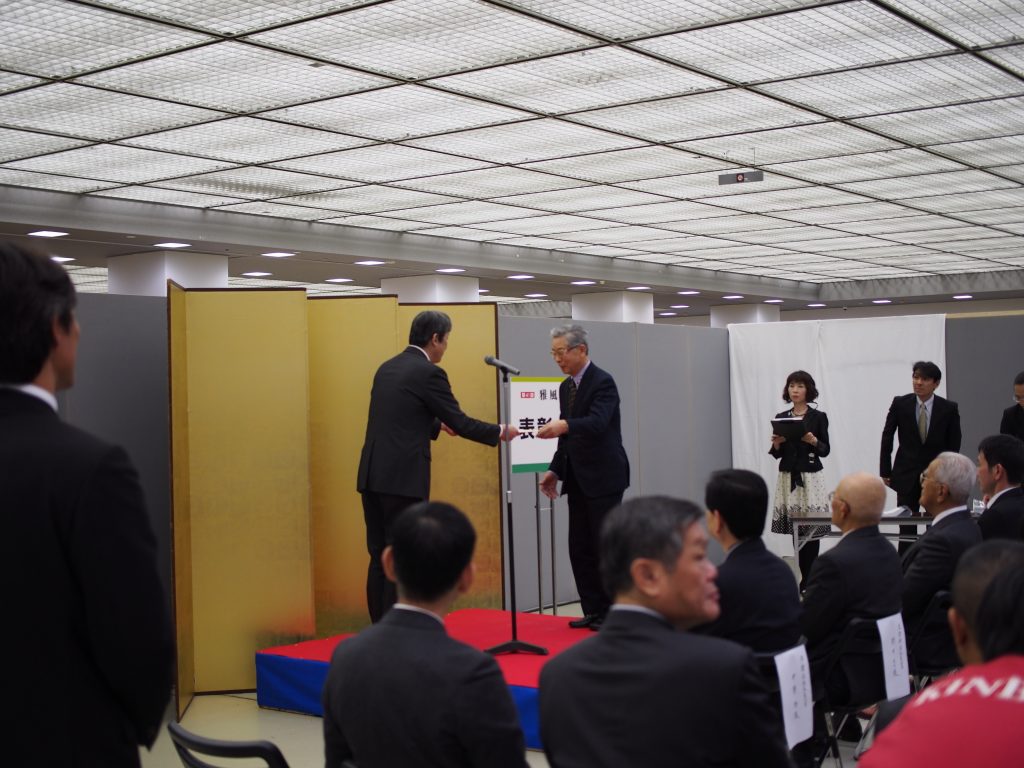
We arrived in Kyoto at around 6am, and waited for an hour until the doors opened at 7am for us to start unloading our stuff. At the carpark located around the back, other bonsai professionals were also congregating in their vans and trucks, with Koji and Big Boss getting out to catch-up with some of them. The moment the doors opened, it was business time. All of the tables and display spaces in the hall were already set-up when we got there, so it was only a matter of moving everything from the van to our table. Koji had other more important business to do because of his position in the All Japan Shohin Bonsai Association, who organise the event, so it was up to me, Big Boss and his wife to unload the van.
Here is our sales area with the dark blue cloth, where I would be spending all of the next 4 days around. Setting up the stand was fairly straight forward and took around 2 hours. A lot of that time was spent thinking and placing the trees.
The sales area was like this until midday, with trays and trolleys moving around everywhere. In the distance you can see Tomohiro Masumi of Koju-en setting up his stand with the green shelves.
Opposite of the Gashou-en stand (who were next to us) were Kaneshin tools, a very dangerous stand for me and money to be around.
Apart from the professionals setting up their stands, hobbyists and professionals were also busy setting up their displays for the exhibition.
A great example of the preparedness of most people setting up for the exhibition, with this person having a photo of their display for reference.
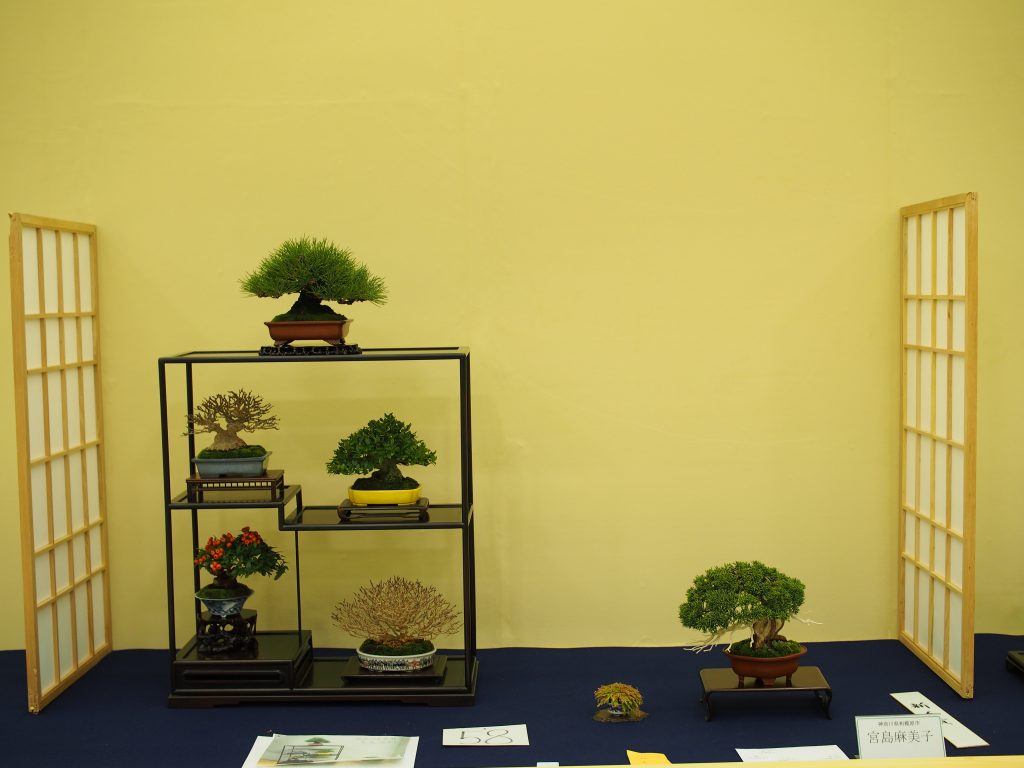
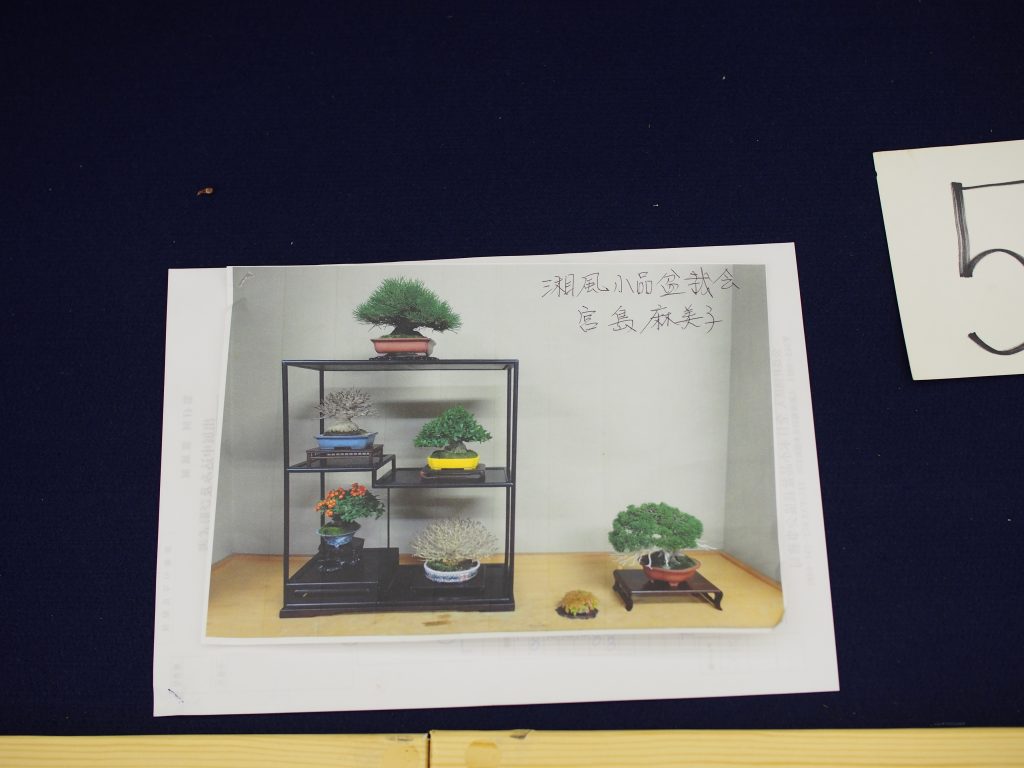
Here is our stand finished. At one point it was only me and Big Bosses wife setting up, as Big Boss had to go and help with the judging. Because we arrived and begun setting up so early, we ended up finishing set-up before most of the other stands. This gave me a good opportunity to do some pre-show shopping before the crowds got in.
30 minutes before opening on the first day of the exhibition , I got the opportunity to buy some pots from Haruyosi that he had for sale at his stand. He had only brought a box of about 30 mame sized pots, and a few shohin sized ones on offer. I ended up buying 5 pots from him. Luckily I bought them right before the doors opened, because his pots ended up selling out within the first 5 minutes of the show. His pots are so in demand that people were running to his stall when the doors opened.
Gashou-en was extremely organised with their stand. Mr Sasaki had already set-up a “prototype” stand at his nursery days before the exhibition, and had a plan to go off. Mr Sasaki and his son Yusei were both there for the exhibition, with Mr Sasaki’s wife joining them the day after. Their stand was entirely made up of high quality shohin, with a few pots for sale as well.
Opposite us were Taisho-en, with both Taiga and Mr Urushibata there selling. Many foreign Taisho-en students also visited the stand over the course of the exhibition.
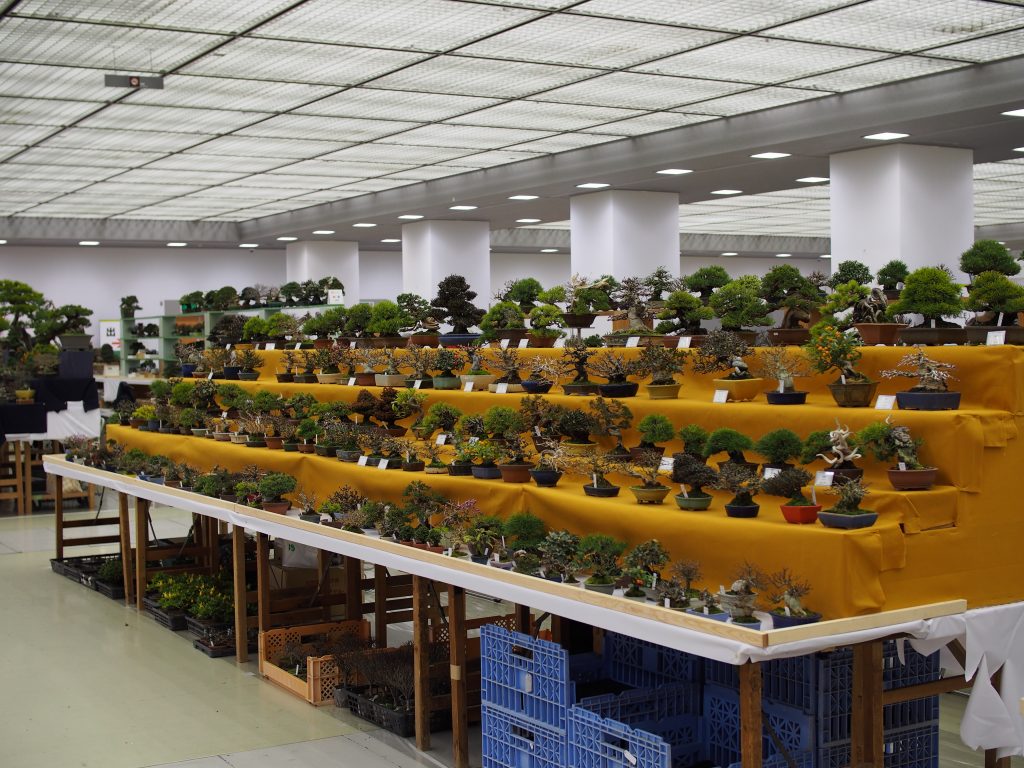
Kinbon was responsible for photography for the exhibition book, with 3 of these “booths” set up. It was amazing to watch as they managed to finish the photographing the whole exhibition in about 2-3 hours.
This was our customers entry for the exhibition. We managed to get 2nd place, with Mr Sasaki’s customer taking 1st place. Mr Sasaki’s customers display also ended up winning at Kokufu-ten as well.
These plaques are given to trees that are designated as important bonsai masterpieces. From what I understand, trees are submitted to a panel who then grant them the distinction.
And to finish off, some random shots of the sales area while they were setting up.
]]>In other news, I’ll be heading back to Japan at the end of the year to do another 3 month short-term apprenticeship. This time I’ll be heading to Gashou-en in Kumamoto learning under another Shohin King, Masahiro Sasaki.
The next few posts will be about Gafu-ten and all of the stuff involved with exhibiting and selling at that. From the time that I arrived in early December until Gafu-ten in early January, both Koji and Big Boss (Koji’s father) were busy everyday preparing trees for sale and exhibition. Pretty much all of the work in the nursery is centred around preparing for exhibitions, that work isn’t always fun and games, things like cleaning and airing out the table cloths, carrying stuff, loading stuff.
While I was put to work practising my wiring for most of December, a few days before we had to leave for Gafu-ten I was tasked with putting moss on some of the sales trees. I thought it would be good to do a small tutorial on how to moss up trees, Evan-style.
Here’s the patient for this operation, a nice shohin shimpaku.
And here’s the moss. What I found amazing about this moss compared to the stuff you can find in Australia is that it seems to naturally form little mounds. Makes it a lot easier to break apart into natural looking clumps when mossing trees.
Speaking of clumps… After you’ve broken the moss up into little clumps, you gotta clean the little fella. Basically get rid of any little leaves, or weird snail poop trails, or little dead spore heads, pretty much anything that isn’t velvety and green.
Next comes the hardest part, trying to make the moss look natural. It might seem a bit counterproductive to break the moss apart to only put it back together again, but it looks 5x better than placing the moss on in large sheets. And definitely try to avoid making the moss a flat carpet. Flat moss = boring moss = unnatural moss. The key is to avoid any strong lines formed by the moss when you look from the front, unless you want the strong lines suggesting you have roots where there are none.
The next trick to making the moss look natural is to place it like a jigsaw puzzle. Find pieces that will fit into spaces perfectly with no visible join between two pieces, and if they don’t fit perfectly maybe cut a little off until you get the desired effect. You might also need to trim soil off the bottom of the soil so that it sits a bit lower and joins a bit better.
Repeat this until there’s no soil visible on the surface. It’s a bit hard to describe what it should look like in words, so I’ll let the next picture do the talking.
You’ll hopefully end up with a lush undulating carpet like this little segment. Like most of Bonsai, you’ve got to take your time and be meticulous if you want good results.
After finishing up the mossing and all the final touches on the trees, it was time to load them into the van for the journey to Kyoto. The good thing about shohin is that they’re easier to pack and transport than larger trees. All of the trees were transported in white crates, with newspaper packed inbetween the more expensive trees and pots to make sure they don’t move. These crates are incredibly handy because of all the accessories that come with them, like the spacers for the taller trees, or the wheels that you can attach on the bottom.
The cheaper stuff unfortunately doesn’t get the same royal treatment.
Our chariot to Kyoto is the customised bonsai Hiace. This van is mainly used for transporting bigger trees and travelling to sell at exhibitions, other than these events it doesn’t move from under the carport. Fitted into the back of the van is custom welded supports for the shelves. This shelving is especially handy for the Shohin crates, they fit nice and snug on the top shelf.
Right on the top we put in crate which had a shohin shimpaku with a massive delicate tenjin that had about 1cm clearance. It worked out okay, but definitely a sweat inducing moment.
In the end there were probably 20 of those white crates all filled with trees. Along with those we had to pack 2 crates of pots, shelves for the sales tables, and all the stuff for the customers displays. Only just enough space left for me, Koji, Big Boss and his wife.
And here is the van again at midnight, when we start our journey to Kyoto. After finishing work for the day at around 5pm, we had dinner, a shower, bag packing, and then a small rest on the couch before we had to head out at 12am.
Rather than drive all the way to Kyoto in one big stretch, we caught the ferry from Takamatsu to Kobe. The benefits of taking this route to get there is we’re able to get a rest on the ferry before having to work hard setting up for the show. We got to the ferry port at around 1am, with our ferry scheduled to leave at 2. This gave us a good hour to have a nap, or in my case, get out and take some photos of the ferry port.
Hello Kobe! After getting in a 3 hour nap, it’s time to get off the ferry and head to Kyoto so we can get there at 7pm. Stay tuned for part 2 of Gafu-ten adventures.
]]>These next three trees were some of the one I unwired. Was definitely shitting myself while unwiring the first one, especially since I was told it was it was old Yamadori and the Jin was paper thin in parts.
This next tree Koji ended up buying to restyle and sell at Gafu-ten. Here’s a before and after on Koji’s facebook page.
https://www.facebook.com/koji.hiramatsu.35/posts/932591520162950
As typical as it is in the ridiculousness of Japanese bonsai, the pot was worth more than the tree. Also before I started wiring it, Mr Sasaki came over and cut off about 4 branches in maybe 5 seconds without a second thought. The way he did it was more akin to murder than anything else. Like the shower scene in psycho.
And this is why we wire curves into the trunk when they’re still young. You get dat fine, fine trunk wit da curves.
And here’s another great example of why putting in crazy curves early on is worth it in the long run.
And here’s to finish off. The best shot (in my opinion) of the day. Shows off the best thing about the golden hour for photography, also helps when the greenhouse screen acts as a diffuser as well.
Tune in next week for my photo series on Gafu-ten, starting with show set-up, the journey, the show itself, sales areas and sights around Kyoto.
]]>Prior to our travels, Koji had told me that we would need to go to Kyushu at some point before Gafu-ten, to pick and choose some ‘schmick’ pots for the trees going on display. Our destination would be Gashou-en, the nursery of Masahiro Sasaki, who was also Big Bosses apprentice. I know most in the West probably have no idea who Mr Sasaki is, but, he is the “Shohin Boss” in my books. His nursery is a ridiculous Shohin Mecca, I think the photos don’t beat the experience of being there. Not only are the trees all top notch, he’s got the pots to match. Even with my limited pot expertise I could spot multiple Gekkou and Yuzan pots. Not only is his nursery ridiculous, the story behind the man is impressive as well. He started his apprenticeship with Big Boss at 15 years of age (I know it was the 80’s and things like that were probably more normal than now, but still…).
Now a prior warning about this post: This will be a travel and photo tour only post. I took way too many photos, so the next post will be equivalent to the Sports Illustrated Swimsuit edition of Shohin bonsai posts.
So we set out at about 10:30am to go to Kyushu, it’s a long trip by car, around 8 hours. So plenty of time to get some reading done. My recommended book for if you’re ever coming to Takamatsu is Kafka by the Shore by Haruki Murakami. I could do a whole essay on why this book is good, along with another essay that tries to make sense of what’s going on in the book. But all you need to know is that it’s set in Takamatsu and describes the place perfectly, to the point where you can even recognise places in the book. This ain’t a book blog though, it’s a damn Bonsai blog…
So we headed out, ‘we’ being Me, Koji and Koji’s customer, Mr Onishi; he tagged along because he’d always wanted to see Mr Sasaki’s garden. Mr Onishi’s a pretty cool guy, (thought I’d just put that out there) and he’s in the nursery once or twice a week, usually after he finishes work. He plans to win the Prime Ministers Award at Gafu-ten 2017, so hopefully there’ll be some more adventures featuring him.
I think this photo perfectly sums up the car trip to Kyushu. Rain. Rain. And more Rain. The only time there wasn’t rain or cloud was when we just reached the top of Kyushu. There was this very brief window of blue that opened up in the sky for maybe 20 seconds. After spending 7 hours in the back of a tinted van, it was definitely a welcome change. Unfortunately that didn’t last long, and it was back to rain for the next 2 days.
Tunnels were my arch nemesis on the trip. With so many between Hiroshima and Yamaguchi, it became impossible to read, or even watch the scenery. And they also like to toy with you. You’ll get maybe 1-2 minutes of tunnel, and then this brief section of open sky before you become the baby with the candy, and the tunnel is that evil man with a questionable moustache.
Here’s our precious cargo. We brought along all the trees going on display, along with all the stands. On the way back we ended up with twice as much stuff, and some nice trees to go on sale at Gafu-ten (I’ll put those in the companion post).
By the time we got to Gashou-en it was probably 7 or 8 pm. At that point we were all pretty tired, but, your intrepid blogger still had the power in him for some night time snaps of the nursery. There was also what I’ll call the ” Deshi Future Uncertainty Principle” at play, where what you’ll do next is entirely out of your control and you might be whisked away at a moments notice. So you always have to be taking photos like it’s the last time you’ll ever be there.
I don’t think anything could have prepared me for what the nursery was like in the daytime. This slightly blurry photo is also a pretty accurate depiction of me without glasses on. So being here in the daytime was a whole new experience.
We took a break while we waited for Mr Sasaki to organise some things like accommodation, dinner and closing up shop for the night. That guy on the right is the aforementioned Mr Onishi.
Here’s a small part of that impressive shohin pot collection I was talking about. Apart from the Gekkou’s, I don’t have the ‘pot-pertise’ to recognise who the other potters are. This was also only part of his pot collection, I don’t even want to imagine how much all of them together must cost.
Compared to the workshop at Hiramatsu Shunsho-en, Mr Sasaki runs a pretty tight ship, although his workshop is twice as big as ours. So more space for stuff to go, unlike ours where it’s a matter of where we can cram it. The massive Tokonoma is something I could definitely go for at Shunsho-en though…
Here are our Prime Minister Award winning trees (not really, but, fingers crossed). If only we could buy these crates in Australia though. They would have been very handy on so many occasions. Talking to Koji about them, he said they are fairly cheap to buy as well, so it looks like I might need to import a pallet or two.
After we locked up everything in workshop, we headed out for dinner at a local Yakitori restaurant. In Japan most prefectures have a speciality food. In Takamatsu it’s the local Sanuki Udon, Udon topped with Tempura. It’s gotta be one of my favourite noodle dishes here. Kyushu is famous for its horse meat, usually eaten as Horse Sashimi. Did I try Horse Sashimi? Does the pope shit in the woods? I don’t the know the answer to that, but, horse is probably up there as one of my favourite sashimi dishes. They freeze the meat prior to serving, so it has this almost creamy texture to it, like a frozen yoghurt bar. And it has this sweetness to it, so compared to raw beef it is much nicer on the palate.
After that Koji and his Mr Onishi went to their hotel and I, being the apprentice, went with Mr Sasaki to stay at his place. With my limited Japanese, it was definitely more of a challenge than staying with Koji (who speaks english), but, actually quite fun being out of my depth like that for a change.
In the morning Mr Sasaki dropped me of at the nursery, and went to pick up Koji and Mr Onishi from their hotel. This gave me a perfect opportunity to be let loose in the nursery for some photo taking, especially lucky as it was the Golden Hour for photography.
Apart from all the amazing trees, Mr Sasaki keeps a pretty clean garden as well. The place was pretty much spotless when I walked around, even in the corners that customers wouldn’t normally go.
Apart from the bonsai, there were also heaps of Camelias, both bonsai and garden stock. It hurt my head a bit with how many varieties he had on sale.
To be honest it wasn’t pleasant getting this shot. I crossed the street, climbed a small hill and walked through a vacant plot, in the process getting my canvas sneakers and pants soaked from the damp weeds overrunning the plot. Was it worth it? I’ll let you be the judge.
I think I’ll let the pictures do the talking here. As you can see he’s got a pretty decent range of stuff, and a pretty sweet nursery as well. I’ll reward you with what I promised in the beginning next post.
Here’s our display minus trees. That root stand was the toughest decision in making this display work and it wasn’t until a few days ago that the customer made the final decision about which stand to use.
And here’s the tree that’s going on that stand, prior to pot change.
That’s Mr Sasaki, getting out a suitable pot for the juniper. It took around 3 hours to get the display ready. That involved picking pots, repotting all the trees, getting the accent ready. I was given some trees to unwire while this was happening. I was sweating while doing that, because some of the tree were worth $3000 AUD, with very delicate jins that looked very easy to break. Didn’t want to screw that up…
Here’s a trick of the trade. Because the table height for shows is much lower than the height of the Tokonoma, Mr Sasaki used a cinderblock to get some height. I hear Mr Kimura has a gold plated one that he uses (You didn’t hear that from me).
There’s that root stand that was giving us difficulties. Unfortunately the perfect root stand is one that’s a mix of the two, probably with the height of 1 and the delicateness of 2. I think out of the two, I prefer the first. I guess that’s always the problem though, you can always picture the perfect stand, but getting it is the hard part.
This is the display that Mr Sasaki’s customer is entering into the exhibition. I actually prefer Mr Sasaki’s display better than ours. I think the overall composition is more harmonious, with that juniper and root stand combination working much better than the ours. It will be interesting to see how the two displays go at the exhibition.
“Oi mate, toss us an accent.”
This is Mr Sasaki’s son Yusei. He’s currently in his last year of High School, and starting in March he’ll be Taiga Urushibata’s first Japanese apprentice. So look out for him in future, as we’ll hopefully be seeing more of him. He’ll also be attending the upcoming Noelanders Trophy, so make sure you say hi to him (he doesn’t speak any english though, so don’t expect a reply).
And here are Mocha and Poppy, the two cutest nursery dogs in existence.
I’ll post all pictures for the “Bonsai Illustrated – Shohin Edition 2016” sometime tomorrow. Until then use your imagination, like the good ol’ days.
]]>I’m Evan Marsh, a 20 year-old Australian, Sydney based Bonsai artist who is trying to make the leap from amateur to professional. Three years ago I joined my local Bonsai club, Nepean Bonsai Society, where I was fortunate enough to meet one of Australia’s best Bonsai artists, John Marsh (A possible relation that is yet to be confirmed). For those who do not know John, he has been doing Bonsai for over 40 years and in my opinion is one of the greatest Australian Bonsai artists of all time, and deserving of being titled an Australian Master. In the last few years though, John has been on the decline when it comes to demonstrating, so many newer Australian bonsai hobbyists may not have heard of him, or had the pleasure of seeing him work. Enough of me singing praises about John though…
Over the last few years I’ve been mentored by John, who has taught me a great deal and has also encouraged, and pushed, my Bonsai skills and styling senses. Much like everybody else who does Bonsai, it seems to pervade into every aspect of your life, as I am also currently studying Agricultural Science at the University of Sydney, looking to hopefully major in plant physiology. I guess you could say I have “Bonsai Brain” (If anyone has a cure, let me know), and don’t ever see myself not doing Bonsai as a career in future. And like many others who also have this dream, the logical step is to go to Japan to study with one of the Japanese Masters.
In April of this year I was fortunate to meet Koji Hiramatsu at Australia’s national bonsai convention. Some friends of mine told him about me, and how keen I was to study with him. Over the months following I talked and planned with him about staying at his nursery to learn, and he took me on as his apprentice. So for the next 3 months (during my university holidays) I will be studying at Hiramatsu Shunshoen with Koji and his father Kuniaki (or Big Boss as he is known).
(If you haven’t figured it out by now, Deshi is the Japanese word for apprentice)
That’s enough about myself. Now onto the photo tour.
This here is Hiramatsu Shunshoen (with what has to be one of the best car-parks in all of Japan). Around the car-park is nothing but yamadori Black Pine. The bench along the house is where the nurseries best larger trees live, including the tree styled by Koji for for his very first Kinbon (Japanese Bonsai Magazine) article. The upstairs in the house is where Koji lives with his family, and the workshop being downstairs. That little balcony you can see above the workshop is where some of his customers Shohin live.
Here is the inside of the workshop. The man sitting in the the photo is one of Koji’s customers, who was kind enough to shout us dinner and a dip at the onsen that night. To the left is where we all work, with Kuniaki at the far end of the room and Koji just to the left in the photo. Unfortunately I’m smack-bang in the middle of both of them, so I’ve always got a set of eyes on me while I work. Wiring that big Black Pine in the middle was my first task (Which I will cover in a later post).
The other wall of the workshop. A TV which keeps us entertained all day long, and shelves of stands and pots. I’ve had my fair share of Japanese TV over the last 2 weeks and I’m definitely starting to understand a bit more than when I first got here. My favourite show at the moment has to be the 15 minute drama in the mornings that’s set in old times. Every episode seems to be a tear jerker with either someone dying or a child being born. Most of the stands there are for sale, and in that cabinet under the TV lives all the rare pots. The second day I was here Koji showed me the Yuzan he has (If there’s one Japanese potter you have to know, it’s definitely him. I’ll take some photos for a future pot post that’ll have some Yuzan and Gekkou pots in it.)
The Shohin Balcony. It’s looking a bit empty at the moment because most of the Shohin are in the greenhouse in preparation for Gafu-ten (Shohin exhibition in early January for those who don’t know).
You thought the Yamadori car-park was cool, this is the other side of the house. Nothing but rows and rows of Yamadori Black Pine. That small brown shack is where I’m staying, affectionately known as Deshi-House. That old looking place behind the wall in the back is the original Hiramatsu house where Kuniaki used to live. He showed me some photos of himself back in the 80’s looking super cool, along with some photos of a younger Gerry Rainville from when he was here.
Now the Yamadori-Pit from the other side. Those are rows and rows of pots in the foreground. There is a real mix of different stuff in there, from cheap chinese pots to Tokoname ware. I haven’t even begun to have a look at what’s in there, but, I’ll get around to it at one point. The shade house is where the tour is going next.
Probably the best looking place in the nursery at the moment, with nothing but shelves and shelves of trees ready for sale at Gafu-ten. Although the photo is quite light, it’s actually quite dark inside, with double strength (is that the right term?) shade cloth currently being used. I wish there was some cool scientific reason for why we’re using such dark shade cloth, but, in reality Big Boss ordered the wrong shade cloth.
Here is what Takamatsu Bonsai is probably most famous for, its field grown pine. The rest of the property is pretty much taken up by rows and rows of ground grown pines. Those Black pines are about as tall as I am (so about 1.6m-1.8m), and the White pine are about knee height, and of course all of them have ridiculous bases to them. Surprisingly nearly all of Takamatsu’s nurseries except for 2-3 (including Koji’s) are all growing nurseries, with there being around 100 nurseries in the Takamatsu area. They also ship their stuff world-wide (That’s going to be another future post).
All those Black pine in front are all of the Corky Bark (Nishiki) variety. There has to be maybe 150-200 of them and I’m not even sure how long they’ve been in the ground for. It’s just a shame that at the moment Black pine can only be exported to Taiwan, cause I know that everyone would kill to have some material like that, and Koji seems pretty keen to be able to export it as well. Though I hear some negotiation is occurring with the government to be able to export to Europe, so you Europeans will definitely be a lucky lot if it does happen.
That’s pretty much the end of the tour. I’ll probably try and make a post in the next few days about what happens when a truckload of Bonsai is shipped from Kagawa to Europe (Lodder Bonsai of all places, for all those on Europeans on Reddit (I’m looking at you Jerry)). So in the words of Troy McClure, I’ll leave you with what we all came here to see. Hardcore Bonsai Porn.
Also some Photos of the current squad at Hiramatsu Shunshoen:
Big Boss – Kuniaki Hiramatsu
The man himself – Koji Hiramatsu
And yours truly – Evan Marsh
]]>